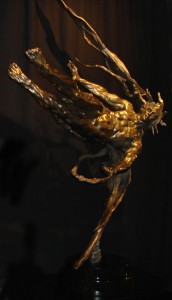
'Photon' by M. L Snowden
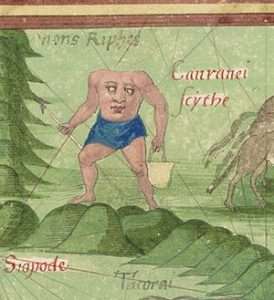
Blemmyes to enlarge.
Example of same..."To the observer, free will is uncertainty; precisely because it is free, the reasoning mind cannot predict it and cannot relate it to something else, it is irrational, unrelatable. Thus the rational mind has to acknowledge a higher principle, one that is indistinguishable from pure chance. So great is this hurdle that few philosophers can surmount it. The anonymous 'Cloud of Unknowing', written in about 1350, affirms this positive value of unknowing with a most beautiful simplicity that should be instructive to philosophers. Certainly, it is one of the most profound writings in the west. Of course, our trump card is quantum physics, which has actually discovered, or been forced to recognize, that the quantum of action or quantum of uncertainty [two names of the same thing] is a primordial ingredient of the reality of physics. But even here the rational mind refuses to accept first cause. It is not convinced by the creation of matter from light , for it says, "How can we say the photon is first cause, when it itself has a cause? Does not light come from the sun?" Here we should make a clarification. In order to say that A causes B, there must be in A that which implies B. Thus, if i put salt on the doorstep, it will melt the ice because there is a relationship between the melting point of ice and the salinity of water. On the other hand, we cannot so relate cause and effect in the case where the boiling over "caused" the invention of vulcanized rubber. Pots boiling over don't imply rubber tyres, or even rubber. The cause was Goodyear, whose intention to find a way of improving raw rubber had led him to cooking it on the stove. Now it is true that there are other causes....hot stove, accident etc,...but the first cause, Goodyear's intention, is the only one that implies improved rubber, and was responsible for his recognition of the solution when it accidentally occurred". [Chapter twelve. 'The Geometry of Meaning'. A. Young].
Synchronicity to enlarge.
Think about it, i.e., 'intention' [first cause] in relation to 'Ain Sof' = synchronistic 'moment'/event [in space-time], i.e., 'beginning' [potential of] from an unconscious ['accidental'] 'start point' and/or leading to 'actual' realization [conscious 'end point' ]. In relation to the 'observer'. Possibility of.
Sagittarius link?
The word 'intention' used by some authors, relative to the reader, in order to define something. In the same vein of such authors as Gurdjieff and Plato, Example of same 'The Thirteen Petalled Rose'. Mentioned elsewhere. 'Intention', relative to "divine cause", "divine source" or "divine essence."
As is the intention {and/or example} in the NOW 'spiritual' sense of the word - in defining that universal constant {i.e., divine 'bit'} - by way of the prayer method...

Banksy was here?
"As for the Jesus prayer itself, it has obviously two dangers. If it is repeated without attention to what it means, it is a vain repetition such as Our Lord {i.e., ones higher self} denounces. The same applies to any other formula, if unintelligently used. Also if the mind is kept concentrated on some definite idea of 'Jesus' rather than what he represents, i.e.,the 'Word' of the Father - then this may lead to imprisoning the mind instead of setting it free...It is evident, however, that these dangers lie not in the prayer itself but in the wrong use of it. They point to the necessity of keeping the minds eye fixed on its Divine Object, i.e., as to who that 'object' really is...The repetitive rhythm of the prayer is indeed a most valuable aid to recollection...It sets the intellect to work to meditate on divine things. In others, who have passed beyond intellectual meditation, the prayer leads the spirit on to the silent contemplation of Him Who is Without form or mode." ['Unseen Warfare' / Mentioned elsewhere].
'Word' in relation to logos. ''Father'' in relation to...
"Clement of Alexandria elucidates the idea that Jesus is the 'son of god' by explaining: 'The Son is the consciousness of the Father.' The 'Father' is the Mystery...the dazzling darkness of UNconscious Consciousness."

Burkhan Khaldun.
Another {working?} example in order to define an inner something {micro} relative to its outer {macro} - INTENTION OF: "The ancient ones of early eastern Christianity taught that, in relation to intruding thoughts, we should be so vigilant that as soon as they ''show there heads, like a serpent appearing through a hole, we must cut it off''! This is a potent use of 'stop exercise' which is also meant to halt the entry and influence of ''I's'' that seek to claim our identity. The more you live in a more quiet inner place {an inner sanctuary} where features {negative ones?} cannot take over, the more you will see the difference between passing thoughts and feelings and your deeper self." ['Wisdom of the 4th Way']. All as a representation of something. This readers input.
Good/Bad habits {i.e., positive/negative energy}.
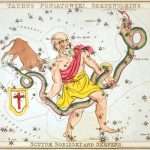
Ophiuchus. '13TH' constellation. {Thirteen}.
Picture...A cat like figure, with hare like 'ears.' Representing a possible u-turn, or the development of something from its once 'negative'[Apophis] beginning [i.e.,left - right?]. One has to listen to that internal voice in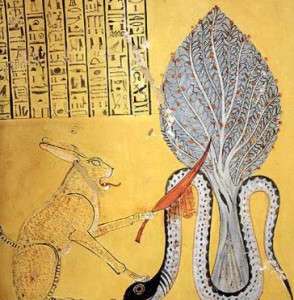 order to scratch the surface of something. That link to Sais in the Nile Delta. The 'Ear' its symbol, where salt and fresh water normally 'mix'. Where according to Plato, Solon was told about the 'origins' of something. Those origins that can only be assessed by that 'inner ear'. The Sumerian 'god' of wisdom, Enki..."he whose ears are wide open", or the Egyptian 'god' Ptah..."who is great of hearing", reminds the reader, after..."an eye is opened by which a special perception of certain perceptibles is had" [Al-Ghazali]... of what those 'origins' are symbolic of, and represented by. [chapter one ' The Future of the Ancient World / J.Naydler]. Hear anything? If you do then you should be able to answer the following query....that modern day archeologists have a problem to define..."In a class by themselves are a series of small stelae, which we call 'ear tablets', from the fact that their principle feature is a representation of one or more human ears. These 'ear tablets' have also been found at Memphis, in the surroundings of the temple of Ptah, and many theories have been put forward to explain their use.......
order to scratch the surface of something. That link to Sais in the Nile Delta. The 'Ear' its symbol, where salt and fresh water normally 'mix'. Where according to Plato, Solon was told about the 'origins' of something. Those origins that can only be assessed by that 'inner ear'. The Sumerian 'god' of wisdom, Enki..."he whose ears are wide open", or the Egyptian 'god' Ptah..."who is great of hearing", reminds the reader, after..."an eye is opened by which a special perception of certain perceptibles is had" [Al-Ghazali]... of what those 'origins' are symbolic of, and represented by. [chapter one ' The Future of the Ancient World / J.Naydler]. Hear anything? If you do then you should be able to answer the following query....that modern day archeologists have a problem to define..."In a class by themselves are a series of small stelae, which we call 'ear tablets', from the fact that their principle feature is a representation of one or more human ears. These 'ear tablets' have also been found at Memphis, in the surroundings of the temple of Ptah, and many theories have been put forward to explain their use.......
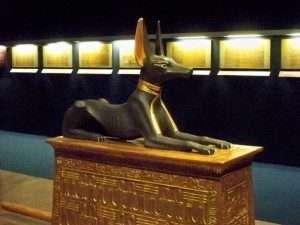
Inner ear, a 'golden' one. Lower listening to 'higher'?
......"it was once thought that they were dedicated by the deaf in the hope of attaining a cure for their affliction. Others are of the opinion that they were made in order to attract the attention of the god to the prayers of the supplicated. Petrie says....'To obtain the attention of the god, there arose the strange custom of carving ears on the tablet of prayers. Thus it was thought that the god would more readily hear the petitions'. Most probably we should regard these sculptured ears as substitutes for the ears of the god. Thus the devotee would make a pilgrimage to some sacred spot, dedicating a ear tablet to the god of the sanctuary"....[there is more should the reader wish to read those further speculations, i.e., page 43, 'The Sphinx: Its History in the Light of Recent Excavations' by S. Hassan]. The question is....What do you think? After weighing up all the available information.

Childs play?
As is the same intention spoken in the inimitable words by the irrepressible presenter Mr B. Cox: "The indigenous people who built this place {i.e.,within the Ounila Valley / Morocco} have been mentioned in ancient Egypt texts as well as by Greek historians such as Herodotus and Cicero that the people who built this place worshiped the sun and moon. In fact they tell a story about how they cut off the ears of goats in order to throw them over their houses in honour of the moon god. With the skies crystal clear you can understand why they did it - not the goat thing - but the worship of those celestial objects in the sky." ['Human Universe' Series 1 / Episode 4].

Large or small?
"With patient ears attend..." [Opening lines to 'Romeo and Juliet / Shakespeare].

Ancient Iberian head-gear.
Sais in the Nile Delta? As a means....?
"But it is not extraordinary if you understand that Man is sown on earth for the purpose of individual re-birth, individual inner development, from his own choice, from his own deepest reflection and thoughts, from his own experience and finally his own understanding or will - in short, that he is born as material for self-evolution to the level of the Kingdom. It is a question of a man's understanding, which is so insisted upon in the Gospels - namely, those 'who have ears to hear'...." {'The Mark' / M. Nichols}.
Hathor {Egyptian equivalent}.
Anima or animus?
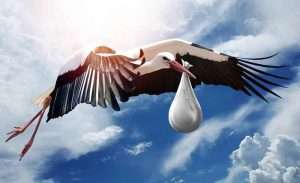
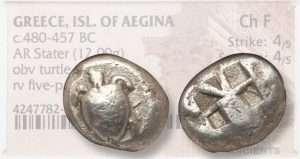
Turtle or tortoise?
From a different perspective: In Bad Durrenberg - eastern Germany - on a bluff overlooking the Saale River in a shallow 'rectangular' grave was found: ''as if seated an adult female skeleton with that of a skull belonging to a one year old infant placed between her thighs''....The pyramid shaped inner ear bone belonging to both were found. Could have been her great grandmother....Her teeth purposely filed down to expose the pulp... Other items found: Roe deer antlers, flint blades, mussel shells, turtle shells, boars tusks and teeth and bird bones.'' And/or: ''Marsh birds such as cranes, whose bones were also found in the grave, were the ultimate boundary-crossers, capable of flying in the heavens, nesting on the ground, and swimming under water - a power the shaman might have called upon in her efforts to cross into the spirit world. The birds annual migration might also have had mystical significance, as they disappeared in winter and returned each spring. Turtles whose shells were numerous also cross from land to water.'' [Pages 39-43 'Archaeology' / March-April 2023].
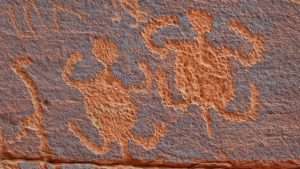
''Possible turtle people emerging from a crack.''
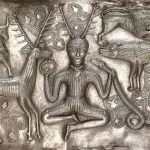
Seated on what?
Side note: ''Most noble Brethren, i stand in the Court of the Temple, nor is my offering placed on the altar but laid in modesty at the threshold. Should my tribute be demanded, i wish to offer you such gifts as ages and generations to come may liken to the Arpine Scrolls....Peradventure In days remote there shall rise up those who will prize this my torchlet even as Tuscan suns. And indeed i am an associate of Cicero, since our office aspires to the same everlasting renown.'' [Page 3 'Works of Thomas Vaughan: Eugenius Philalethes].
''A submission from Palestinian Territory says the name Arpine means "Morning sun, sun of dawn" and is of Armenian origin.''
''Fissure'' to enlarge.

Any cracks?
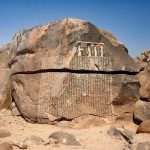
''Rock of ages, cleft for me, let me hide myself in thee.'' Mercurius?
Continued: ''From the root of 'ankh' we get the German angst, which means 'anxiety' the neurosis that Freud explicitly links with the 'birth process', for he points out: The name Angst {angustiae, Eage} = a narrow place, a strait - accentuates the characteristic tightening in the breathing...The ankh is also then the chance 'opening', or opportunity, that is narrow {Gebel el -Silsila?} - as the 'crack between the worlds'. The Egyptians placed an ankh in the left ear of the dead person - a link to karmic judgement - that which i take in, as opposed to that which i do not want to hear. Also the ear lobe is shaped like an ankh loop {'Oak Island'?}....The ankh is sometimes seen as a sandal with a toe strap. For not only does the pun {sacred ones?} apply that the sandal cares for the comfort of the sole i.e., soul {where no foot may tread?}....The Egyptian word ankh is from the Old Egyptian hnk, meaning 'narrow' / 'embrace' / 'strangle' - a reminder of birth into life - suggesting something that binds. A contemporary symbol would be a wedding ring. Eliade points out that ankh may be derived from Sumerian An, meaning 'Sky' and 'Ki' meaning 'Earth' - born out of the Great Mother, Chaos....Originally 'close together' {no space between}...First offspring forces 'them apart' {light i.e., luminosity and/or numinosity} - only in this 'created space' {''being''?} can naming of the various parts of the world be carried out {'fifteen'?}.'' [Pages 220/294 'Fruits of the Moon Tree' / A. Bleakley].
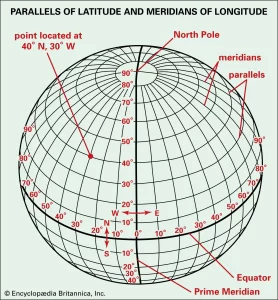 Toe hold?
Toe hold?
Longitude?
Gebel el Silsila to enlarge.
Side note: At first glance, Crackpot Hall just looks like any other ruined house. It’s hard to immediately see why it’s so well-known.
There may be plenty of other romantic ruins in the Yorkshire Dales, but Crackpot Hall is certainly the best known, despite its seemingly remote location near Keld in Swaledale. It’s on the crossroads of the Coast to Coast Path and the Pennine Way.

Red tiles.
Crackpot’s very name intrigues. Like many Dales names, it originally came from old English, and Viking times. ‘Crack’ is another name for a crow, and a ‘pot’ is a cave or deep hole. ‘Hall’ makes it sound like it was once a grand house and yet it was at most a deer hunting lodge or large farmhouse...There is evidence of an old slate roof but it is known at one time to have had a heather or ling thatched roof, from heather collected from the wild moors on the watershed between the Dales...."There's a new roof been put on" comments A. Wainwright on his 'Coast to Coast' walk between Bees Head and Robin Hood's Bay.
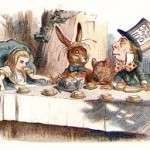
Trickster character?
One of the myths associated with Crackpot Hall started in the 1930s when the two authors and historians, Marie Hartley and Joan Ingleby wrote about a young girl called Alice who seemed to run freely with her dogs in the countryside around Crackpot.
Working example {in fable form}: ''The son of a poor woodcutter roamed the woods...came to an Oak. Heard a voice...''let me out, let me out.''....Dug down into the roots of the tree...found a glass bottle..opened it..a spirit rushed out of it: 'I am the great and mighty Mercurius, and now you shall have your reward. Whoso releases me, him i must strangle.....'' ['Spirit in a Bottle' Page 193 'Alchemical Studies' / C. G. Jung].
Glass/Jar to enlarge.
And/or: ''The forest, dark and impenetrable to the eye, like deep water and the sea, is the container of the unknown and mysterious. It is an appropriate synonym for the unconscious.''
Something internal being externalised - in the form of buildings/monuments {i.e., pyramids/cathedrals} and myths - for others to learn from?
Initiation?
That ''something'' beginning with shamanism?
Imhotep?
A work in progress: ''Ivan died of a stroke while playing chess, after falling backwards, and was strangled.'' ['Who Killed Ivan the Terrible' / Satelite].
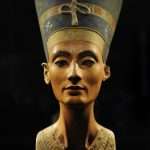

Guardian of the hearth. N/W?
''The fruit of their contemplation of god was knowledge, and through contemplation and knowledge they attained to a way of life that was esoteric....Through this constant contact with divine knowledge and inspiration, the priests of Egypt pursued a life of wisdom....It was within this sacred context that they practiced astronomy, studied arithmetic, and geometry, and devoted their lives to scholarly investigation.'' [Page 31 'Shamanic Wisdom in the Pyramid Texts' / J. Naydler].
A working example: The question is asked in many documentaries as to why the shape of a 'pyr'amid is chosen in the first place. What do the first three letters refer to? Fire or water? One could say spirit of {OR} soul? {i.e., spirit fire from the 'bowels of the earth'}.
Kundalini?
Question. What would ''soul'' be represented with?

Which one?

Club member?
Brought up-to-date: The Tyler prepares the Candidate in a room outside the Lodge room where he is divested him of all metal articles. (including wedding ring). The Candidate removes his outer clothing until he stands in socks, his left shoe, trousers and shirt only. His shirt is unbuttoned to reveal his left breast, his right sleeve is rolled up to reveal the elbow, his left trouser leg is rolled up above the knee and a slipper is placed on his unshod foot. A hangman's type noose called a 'cable tow' is then placed around his neck, the end of the rope hanging down behind him. He is blindfolded - with a mask called a 'hoodwink'...''
'Trickster'?
N.B. In excess of 'eighty' pairs of slippers/sandals found in the tomb of Tut.
Spirit/Soul as a means....?
Oak Island?
From a different perspective: ''What star exactly is Aurvandil’s toe is not certainly known. Some believe that Rigel, the blue star that makes Orion’s right foot is it. ''
Tutankhamun to enlarge.
And/or: ''The fruit of Plantain takes it name from the Latin meaning 'sole of the foot'....'' ['The Chase'].
''Musa is one of two or three genera in the family Musaceae. The genus includes flowering plants producing edible bananas and plantains. Around 70 species of Musa are known, with a broad variety of uses.''

Square on?
And/or: ''If I was given the choice of having use of only one herb to have access to then it would be Plantain. Plantain has so many uses and it was the herb that introduced me to herbal medicine, and I feel solely responsible for me training to be a Medical Herbalist. Many years ago I had a bad cough that lasted for months and would not go away. I had a chest X-ray, antibiotics and a whole host of pharmaceuticals that did nothing to alleviate this very dry and irritating cough that was getting me down. I went on a herb walk and the Medical Herbalist who led it, introduced me to Ribwort plantain. Feeling I had nothing to lose, on his advice I picked Ribwort from an ancient meadow that had never been sprayed and made it into a cough syrup.

Raised above the ground. 'T' shape? Wood or stone? 'Stool'?
Side note: ''Looking like a cross between flip-flops and clogs, 'geta' are traditional wooden sandals from Japan.'' ['The Chase'].
Continued: ''So back to ancestors and travelling; Plantain, especially the Broad leaf plantain would have been put in shoes to ease aching feet and to heal blisters. Katrina Blair in The Wild Wisdom of Weeds suggests it can be used to purify water and whilst I don’t know how effective this is, and I wouldn’t like to risk it with out looking at some good research, it is an interesting concept given Plantain’s effectiveness as a herb that draws toxins towards it.'' [Edwina Hodkinson].
 And thou, Waybread (Plantain), mother of worts
And thou, Waybread (Plantain), mother of worts
open to the east, mighty within;
over thee carts creaked, over thee queens (women) rode,
over thee brides cried out, over thee bulls snorted.
All of them thou withstood and dashed against;
so may thou withstand venom and that which flies
and the loathsome that yond the land fareth
From the Saxon Sacred Nine Herbs charm.

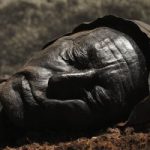 Continued: Granted not a pleasant act - but no form of sacrifice is - even though in those bygone days it was {to some} an acceptable act. As a representation of something. These days as explained elsewhere it would be thought of {with one or two exceptions - as is ALWAYS the case} - as atavistic - even to the present ancestors of the above examples. The main point however being - it was not SOLELY a superstitious act - as Mr Cox - would have us believe. Understand the parts to define the whole. See something other than what those first impressions only allow. Try ''superstition'' and/or ''sun'' and ''moon''.
Continued: Granted not a pleasant act - but no form of sacrifice is - even though in those bygone days it was {to some} an acceptable act. As a representation of something. These days as explained elsewhere it would be thought of {with one or two exceptions - as is ALWAYS the case} - as atavistic - even to the present ancestors of the above examples. The main point however being - it was not SOLELY a superstitious act - as Mr Cox - would have us believe. Understand the parts to define the whole. See something other than what those first impressions only allow. Try ''superstition'' and/or ''sun'' and ''moon''.
'The Goat Foot God' / Dion Fortune. {'sure footed?}.

What's the primary colour for M/F?
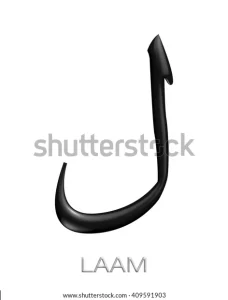
Twentythird letter. Fish hook?
Something ''closer to the mark'': ''We begin our journey to Khnum deep in the base of the island, travelling up to the surface through 'twentythree' layers of stone and mud {shades of grey?} - to reach a 'garden' with acacia and hibiscus 'flowers', herbs and trees {'forest'?}, and even a goat or two {'Pan'?}.....We are moving upwards through these 'layers of being' towards more clarity, the clarity you see from the top of a hill { or ''house''?} - as you approach a more spiritual dimension {'tower'?}. Known for its 'beauty' Elephantine is cradled by the Nile....surrounded by huge grey round boulders {hewn/UNhewn?} - from which it gets its name.''
New Name?
Laam?
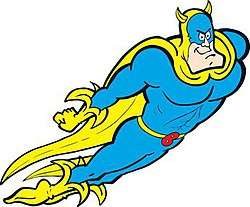
Primary colours? Herb feet, hands, cloak and horns? Red belt buckle? 'Wrist' to enlarge.
Side note: "Bananaman is a fictional character appearing in British comic books. Bananaman is a parody of traditional superheroes, being portrayed as a schoolboy who is transformed into a muscled, caped adult man when he eats a banana. The character originally appeared in Nutty as the back page strip in Issue 1, dated 16 {'sixteen'} February 1980 drawn by John Geering....He has since appeared in The Dandy and The Beano....In the strip, Eric Wimp, an ordinary schoolboy living at 29 Acacia Road, Nuttytown (later changed to Dandytown and then Beanotown when the strip moved to other comics), eats a banana to transform into Bananaman, an adult superhero, sporting a distinctive cowled blue and yellow outfit complete with a yellow two tailed cape resembling a banana skin.
His superpowers include the ability to fly, superhuman strength (often quoted as "twenty men... twenty big men"......"
A score is twenty or approximately twenty. The company already has around four score titles commissioned and planned for publication. The Bible states that the life of man is three score and ten....It's believed people would use marks or notches when counting large numbers of things, with each score indicating 20 items. For example, a shepherd might use notches on his staff to keep track of a large herd of sheep."
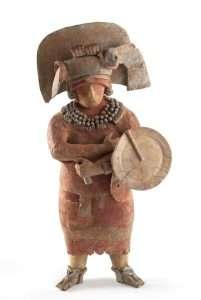
Semi-circular head gear? 'Potbellied'? ''Hoe money'' to enlarge.

'Spirit' or 'Soul'?
Continued: A working example: "Lady K'abel was considered the greatest ruler of the Late Classic period, and ruled with her husband, King K'inich Bahlam II for at least 20 years, from 672-692 AD," said Freidel. "She was the military governor of the Waka' kingdom for her family, the imperial house of the Snake King, and she carried the title Kaloomte' which translated to Supreme Warrior, higher even in authority than her husband, the king....Waka was situated near the confluence of two navigable rivers, the San Juan and the San Pedro Martir, as well as along trade routes that linked the regions highlands and lowlands....Research has revealed that she excelled as a stranger queen {'foreign'?} who won over the residents of her new home. A tomb discovered inside a pyramid in Waka - belonging to someone of great status - around the time Lady K'abel arrived in Waka were found human remains laid on a stone bench {'mastaba'?} accompanied by twentythree {23} painted ceramic figurines {'Pyramid texts'?} arranged as they would be during a royal resurrection ceremony. The tableau's central character, likely the deceased king, knelt next to a spirit embodied by a deer.'' ['Archaeology' / Jan-Feb 2023].
''Lady K'abel (7th-century - between 702 and 711) was the queen regnant of the Maya Wak kingdom between 672 and 692 AD. She is also referred to by the names Lady Water Lily Hand and Lady Snake Lord.''
El Qurn / 'Navigator' and Aberfoyle to enlarge.
Side note: "And as they were stoning Stephen, he prayed, "Lord Jesus receive my spirit." And he knelt down and cried with a loud voice, Lord do not hold this sin against them." And when he had said this he fell asleep." Acts 7:59-60 {Ash Wednesday: Stephen's Witness / Pilgrimage of Paul, Apostle of Hope / Magdala 2025}.
N.B Saul was present {i.e., who later became St. Paul} i.e., "laid down their garments {'cloaks'} at the feet of a young man." {i.e., Saul}.
'Encounter' to enlarge.
-

Did he have to leap there? Aegean creation?
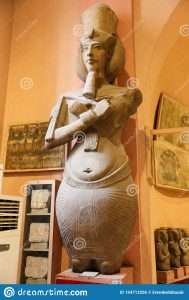
Whats the common factor between both pictures? Coincidence? Spirt or soul? N.B. 'Navel' = middle of human form.
''There are differing opinions about the Aegean sea and how it got its name. According to Professor Christos Doumas, head of the archaeological excavations at Akrotiri, the name Aegean has its origin in the Homeric verb ‘aisso’ which means 'to jump'.
The derivative noun from this verb is ‘aix’ = the goat, in other words an animal that jumps. In ancient times the Greeks called large waves ‘aig(y)es’ (as jumping goats). Thus we arrive at “Aegeon” = Aegean. In modern day Greek it is called 'Aig(y)aio'.''
A leap of the imagination {unconsciousness} ONTO dry land {consciousness}.
- Metal of the mind.
- Illumination {the sun}.
- 'Jumping spiders'?
-
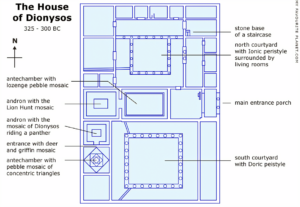 Side note: Aegina is a rocky and mountainous island in the Saronic Gulf located about 25 miles southeast of Athens. It was settled by the Dorians around 900 BCE and was named after the daughter of the Greek river god Asopos.
Side note: Aegina is a rocky and mountainous island in the Saronic Gulf located about 25 miles southeast of Athens. It was settled by the Dorians around 900 BCE and was named after the daughter of the Greek river god Asopos.Because of its limited availability of cultivable land, the inhabitants needed to leverage the sea for their livelihood. They became expert merchants and tradesmen, dominating the shipping industry early in the sixth century BCE. Their success and near-monopoly brought the island great wealth and power. They built a lavish temple to their local goddess, Aphaia, decorating it with numerous sculptures of beautiful artistic quality.
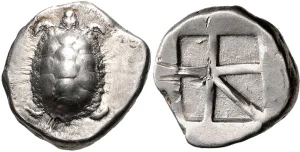 During their travels, the merchants encountered the developing early electrum ancient coins in Ionia and Lydia. They recognized the potential to not only store their considerable wealth in the form of portable ancient coins, but also to optimize trade through a global currency. Aegina therefore became the first of the Greek city-states to issue coined money, starting in the mid-sixth century BCE.
During their travels, the merchants encountered the developing early electrum ancient coins in Ionia and Lydia. They recognized the potential to not only store their considerable wealth in the form of portable ancient coins, but also to optimize trade through a global currency. Aegina therefore became the first of the Greek city-states to issue coined money, starting in the mid-sixth century BCE. - Turtle or tortoise?
A working example: ''Breathtaking, simply breathtaking. I'm feeling hugged by nature at the moment.
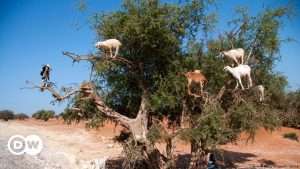
Flag or symbol? Tree of knowledge or tree of life?
Very cocooned, and very loved. Standing here and looking out on this incredible view - is reaching all my senses. In my life i have so much to do and sort out - but i cant remember a single one of them right now....Even though i don't believe in a higher power - i would say that this, to me, is the highest power you can get. This is heaven. What more do you want from heaven?.....

Stepping stone?
Side step: ''The 'flag' as a symbol of the presence of any ''divine'' being - god or goddess - harkens back to one of the oldest goddesses, Neith, the weaver. Her name in early hieroglyphs was written as N-t, and it meant ''the goddess.'' Subsequently, N-t-r became any god or goddess. N-t in hieroglyphs also is part of the word meaning ''to knit'' or ''to weave'' or ''to net'' {'153'?}....In Alexandria, the cosmopolis of ancient cultures where many languages merged, the ancient Egyptian word neter and the Coptic Christian word for ''the god'' came to be pronounced something like netjer; from this, the essence of the Latin word for NATURE, natura, emerged....the early Christian name for 'God'...." [Page 35 'The Union of Isis and Thoth' / N. Ellis and N. Scully].
 Continued: .....Go tell it to the mountains. Why do we say that? Because we need to see and be with something thats so much bigger than ourselves. Something that towers over us {'on the shoulders of giants'?}....I.m looking out at this view and thinking to myself how fortunate i am to turn off the noise and chatter of the city i live in, and breathe, to allow these hills to hold you {'She who loves Silence'?}. I don't feel lonely. I have not felt alone for a moment on this walk. I feel now that my head is clear of so much clutter, and the wind and the hills and the river Wye has just blown and washed them all away. I feel i can now return home being able to SAIL through whatever decisions and deadlines i need to meet - remembering that theres a place here where none of that matters.'' ['Walking With Shappi Khorsandi' / BBC2 /2021].
Continued: .....Go tell it to the mountains. Why do we say that? Because we need to see and be with something thats so much bigger than ourselves. Something that towers over us {'on the shoulders of giants'?}....I.m looking out at this view and thinking to myself how fortunate i am to turn off the noise and chatter of the city i live in, and breathe, to allow these hills to hold you {'She who loves Silence'?}. I don't feel lonely. I have not felt alone for a moment on this walk. I feel now that my head is clear of so much clutter, and the wind and the hills and the river Wye has just blown and washed them all away. I feel i can now return home being able to SAIL through whatever decisions and deadlines i need to meet - remembering that theres a place here where none of that matters.'' ['Walking With Shappi Khorsandi' / BBC2 /2021].
'Ploughing the waves'?
''The name Demelza is girl's name of Cornish origin meaning "fort on the hill". Complex and challenging modern Cornish name derived from a place name. The given name began to be used in the U.K. in the 1950s via the serialization on British TV of the Poldark novels of Winston Graham, whose heroine was named Demelza.
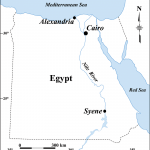
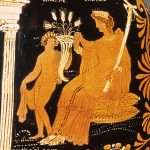 And/or: ''In December 1908, the British Egyptologist W. M. Flinders Petrie discovered the intact burial of a woman {with long/narrow neck and body}, and child while excavating in western Thebes, opposite the modern city of Luxor - {'child' more than likely a girl - because of spiral 'earings' and bead 'girdle',}. Found north of the road that led to the Valley of the Kings. The grave was not elaborate, just a shallow trench cut into the rock BELOW AN OVERHANG and masked from view by a group of boulders {'grey?}. Considering the simplicity of the burial place, the contents were of unexpected richness {'pine martin'?} and quality.'' [Page 15/22 'Hatshepsut' / same book].
And/or: ''In December 1908, the British Egyptologist W. M. Flinders Petrie discovered the intact burial of a woman {with long/narrow neck and body}, and child while excavating in western Thebes, opposite the modern city of Luxor - {'child' more than likely a girl - because of spiral 'earings' and bead 'girdle',}. Found north of the road that led to the Valley of the Kings. The grave was not elaborate, just a shallow trench cut into the rock BELOW AN OVERHANG and masked from view by a group of boulders {'grey?}. Considering the simplicity of the burial place, the contents were of unexpected richness {'pine martin'?} and quality.'' [Page 15/22 'Hatshepsut' / same book].
Demeter/Persephone?
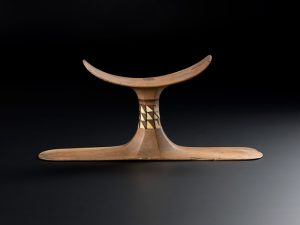
S/W? Take a closer look! ''Twentyfour'' in total?
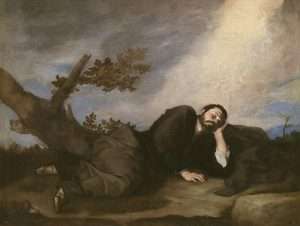
'Stump'?
Items included: 'Feathered' designed coffin peculiar to Thebes. SIX Nubian pots - {''placed in 'three' stringed nets/bags at one end of a large wooden pole}. Stone bowl decorated with monkeys; basket containing a horn - an 'eight' petalled one. Together with headrest - made in 3 pieces, octagonal middle, with elephant or hippo horn inlays {triangular in shape}.''
'Horn of Plenty'?
N.B. Elephants imported {'foreign'?}. Hippo's {local}.

West or east. Boiled or roasted?
SIDE NOTE: "The Egyptian name for Thebes was wꜣs.t, "City of the wꜣs", the sceptre of the pharaohs, a long staff with an animal's head and a forked base. From the end of the New Kingdom, Thebes was known in Egyptian as njw.t-jmn, the "City of Amun", the chief of the Theban Triad of deities whose other members were Mut and Khonsu. This name of Thebes appears in the Tanakh as the "Nōʼ ʼĀmôn" (נא אמון) in the Book of Nahum[6] and also as "No" (נא) mentioned in the Book of Ezekiel[7] and Jeremiah.[8][9]
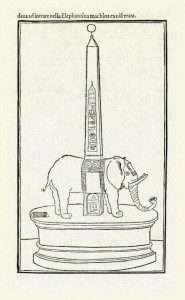
Moving 'mountains'?
"Thebes" is sometimes claimed to be the Latinised form of Ancient Greek: Θῆβαι, the hellenized form of Demotic Egyptian tꜣ jpt ("the temple"), referring to jpt-swt; the temple is now known by its Arabic name, Karnak ("fortified village"), on the northeast bank of the city. Since Homer refers to the metropolis by this name, and since Demotic script did not appear until a later date, the etymology is doubtful. As early as Homer's Iliad,[10] the Greeks distinguished the Egyptian Thebes as "Thebes of the Hundred Gates" (Θῆβαι ἑκατόμπυλοι, Thēbai hekatómpyloi) or "Hundred-Gated Thebes", as opposed to the "Thebes of the Seven Gates" (Θῆβαι ἑπτάπυλοι, Thēbai heptápyloi) in Boeotia, Greece.[n 1]
In the interpretatio graeca, Amun was rendered as Zeus Ammon. The name was therefore translated into Greek as Diospolis, "City of Zeus". To distinguish it from the numerous other cities by this name, it was known as the "Great Diospolis" (Διόσπολις Μεγάλη, Diospolis Megálē; Latin: Diospolis Magna). The Greek names came into wider use after the conquest of Egypt by Alexander the Great, when the country came to be ruled by the Macedonian Ptolemaic dynasty."
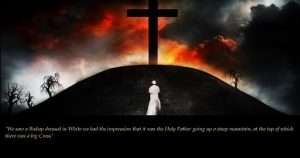
Any soldiers or centurions? "A weight off ones shoulders?"

Childs play?
And/or: "100 is the great round number of perfection. As the second power of the sacred ten it designated the perfect Good in the Hellenistic world. In the decimal system, "100 times" usually means "often". Haven't i told you a hundred times not to do that?" The Chinese expression "100 mouths" is very fitting for the whole extended family one has to feed. More recently from China comes Chairman's Mao's dictum, "Let 100 flowers bloom," which ushered in the Cultural Revolution. In terms of measure, there is the Zentner with its 100 {German} pounds { = 50kg}; this weight , as the centenarium, goes back to the old division of measures and weights in the decimal system.....The exact number of pounds was not so important, for the Zentner could have different weights up to the "Great 100," which is 120." ['The Mystery of Numbers'].
"In the Roman army during classical antiquity, a centurion (/sɛnˈtjʊəriən/; Latin: centurio [kɛn̪ˈt̪ʊrioː], pl. centuriones; Greek: κεντυρίων, translit. kentyríōn, or Greek: ἑκατόνταρχος, translit. hekatóntarkhos), was a commander, nominally of a century (Latin: centuria), a military unit originally consisting of 100 legionaries. The size of the century changed over time, and from the first century BC through most of the imperial era was reduced to 80 men."
'Captain'?
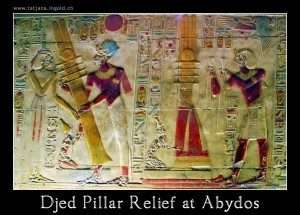
''Raising''?
 Continued: ''Twentyfour is the number of totality, since it is connected to the twentyfour hours of the day and night - although in antiquity the day was counted in 12 double hours of 120 minutes each - and in nautical reckoning, the glass, equalling 30 minutes measured by the hour glass, was maintained till recently. 24 also appears as a measurement: the ancient German Elle, or yard, consisted of 24 finger's' breadth.... It is the most important number in the Book of Revelation, where the 24 Elders embody the harmony of priest and king. The great harmony, therefore, of heaven, 12, and earth, 2.'' [Page 235 'Mystery of Numbers' / A. Schimmel].
Continued: ''Twentyfour is the number of totality, since it is connected to the twentyfour hours of the day and night - although in antiquity the day was counted in 12 double hours of 120 minutes each - and in nautical reckoning, the glass, equalling 30 minutes measured by the hour glass, was maintained till recently. 24 also appears as a measurement: the ancient German Elle, or yard, consisted of 24 finger's' breadth.... It is the most important number in the Book of Revelation, where the 24 Elders embody the harmony of priest and king. The great harmony, therefore, of heaven, 12, and earth, 2.'' [Page 235 'Mystery of Numbers' / A. Schimmel].
"The lid Of Tutankhamun's Sarcophagus was lifted on February 24th 1924." ['Battle For the Valley of the Kings' / CH. 5].
And/or: The 24 letters of the Korean alphabet used by both North and South.
"Abu Simbel probably completed by year 24 in the reign of Ramesses II...Imposing facade of four high colossi - celebrated Ramesses-Meryamun as a solar diety. Twice a year, the rising sun penetrated far into its cavernous interior {'back of'}, illuminating the innermost sanctuary where his statues shared equal status alongside seated figures of Amun-Ra, Ra-Horakhty, and Ptah. About 90m north, the smaller temple was dedicated to Queen Nefertari and Hathor of Ibshek {the name of the locality}." [Page 10 'Ancient Egypt' / Jan-Feb 2024].
"Meryatum (“Beloved of Atum”) was an ancient Egyptian prince and High Priest of Re, the son of Pharaoh Ramesses II and Queen Nefertari....He is shown as 16th {'sixteen'} on the processions of princes, and is likely to have been the last child born to Ramesses and Nefertari (after Amun-her-khepeshef, Pareherwenemef, Meritamen, Henuttawy and Meryre).[1] He is depicted in the Smaller Abu Simbel temple, dedicated to Nefertari. Inscriptions at Karnak and elsewhere show Nefertari was his mother."
''The Order of Merit (French: Ordre du Mérite)[n 1] is an order of merit for the Commonwealth realms, recognising distinguished service in the armed forces, science, art, literature, or for the promotion of culture. Established in 1902 by King Edward VII, admission into the order remains the personal gift of its Sovereign—currently Edward VII's great-granddaughter, Queen Elizabeth II—and is restricted to a maximum of 24 living recipients from the Commonwealth realms, plus a limited number of honorary members.[1][2] While all members are awarded the right to use the post-nominal letters OM and wear the badge of the order,[3] the Order of Merit's precedence among other honours differs between countries.''
Betty Boothroyd?
'Booth'?
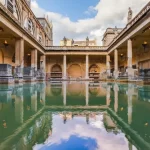 A work in progress: ''Twentyfour finely worked bronze statues found in ''the warm muddy waters'' at an Etruscan - Roman sanctuary connected to the Bagno Grande {'great bath'} of San Casciano dei Bagni, Italy. The largest deposit of bronze statues found in Italy. Some depict the deities who were worshiped there {Hygeia/Apollo}, while others represent individuals who MAY have visited the site, including children {'young'?}, matrons {'nurse'?} and even emperors. San Casciano dei Bagni is home to a natural thermal spring {aquae calidae}...First built by the Etruscans in the 3rd century BC.'' [Page 6 'World Archaeology' / issue117].
A work in progress: ''Twentyfour finely worked bronze statues found in ''the warm muddy waters'' at an Etruscan - Roman sanctuary connected to the Bagno Grande {'great bath'} of San Casciano dei Bagni, Italy. The largest deposit of bronze statues found in Italy. Some depict the deities who were worshiped there {Hygeia/Apollo}, while others represent individuals who MAY have visited the site, including children {'young'?}, matrons {'nurse'?} and even emperors. San Casciano dei Bagni is home to a natural thermal spring {aquae calidae}...First built by the Etruscans in the 3rd century BC.'' [Page 6 'World Archaeology' / issue117].
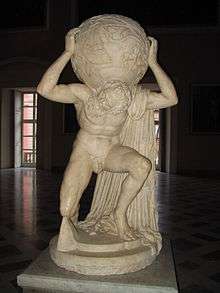
Elephantine?
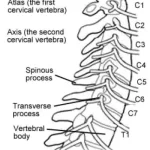
Atlas = ''the first cervical vertebrae.''
''Waters of the GAP.'' {i.e., between the top of the spine and base of head}.
Refresher: ''In Humans there are SEVEN vertebrae between the bone of the skull and the top of the shoulders.''
Kundalini?
And/or: Bronze/Copper to enlarge.
Geese, Ducks or Swans?

Scots pine?
Side note: An American-Mongolian student goes looking for the tomb of Genghis Khan. ''Because he was told that his ancestors had come from the north''. Finds the sacred mountain. 1ST level = ''grove of pine trees'' {in 'blue'} of which the roof tops {tiles} are found of a buried 'temple' {see Brian Cox quote on ''goats ears''}. 2nd level {higher up - 'above the clouds'?} reveals the ''Sea of Graves - just above the 2nd shoulder of the mountain''. Multiple stones that have been moved to the exterior to reveal an inner quality - a 'green' one {vegetation}. 'Stones' also covering the Mount of Olives. Just as on the shoulder of the pyramid of Khafre the suns SHADOW sets at a certain time of year lining up with the Sphinx below. The same applies at the 'right shoulder' at the palace of Herod {'overhang'} - built on top of the ''manmade'' Herodium - lining up with something below.
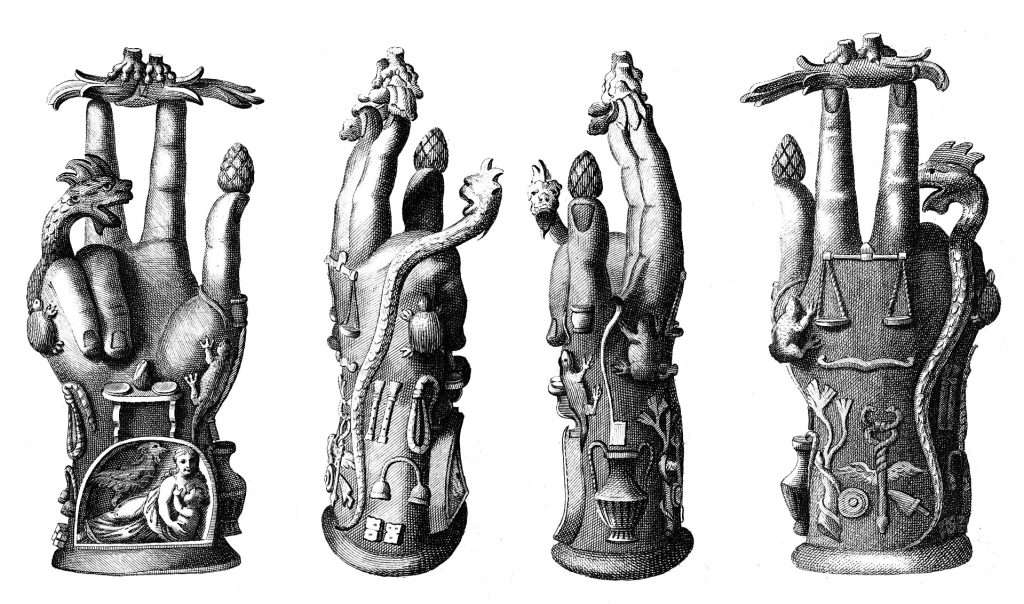
The hand of Sabazios. Thumb = pinecone?
''Escarpment'' as a means....?
'Still waters run deep' in relation to 'She who loves silence'?
Spirit and soul. Which and why?
Clue: Root to the name 'Herod' = ''hero''.
Culhwch?
''Sabazios is the horseman and sky father god of the Phrygians and Thracians. Though the Greeks interpreted Phrygian Sabazios as both Zeus and Dionysus.''

A Hardy Perennial.
Side note: Seahenge with pillars of split trunks all at 'shoulder' height {'shoulder to shoulder'?}. Each half 'facing' each other. That flat surface {in plank form} used in the construction of a 'second' circular seahenge {middle ground?} - with two logs of similar shape and form {as in the first one} laid in the horizontal position within a semicircular wickerbasket enclosure. Original conditions {prior to 'flooding' of sea} = MARSHLAND. ['Blowing Up History: Secrets of Seahenge' / S8 EP6].
'Sea of Change'?
Waun Mawn for a different perspective.
'Sleeping like a log'?
Has to be ''awakened'' for an understanding {wisdom?} - to be got?
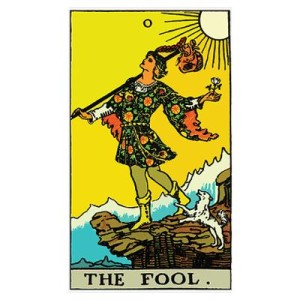
Cliff face?

Found at Tvaaker. Viking 'Sea of Graves'? Question. Whats the remedy for a 'sea'?
From a different perspective: The Great Serpent Mound / Ohio . Extensive layer of soil and stones all along its length. Built along a crater - made from something ABOVE. As above so below. That universal FORM of a 'serpent' connecting all to bring it 'alive' {'peacocks tail'?}. A birth. Like the serpentine spine of the body that joins at the head. That same head that ends at a cliff face with a stream below. Facing the setting sun at the summer solstice. An extra coil {'LOOP'?} added later on - on its RIGHT SHOULDER {Equinox?}. ['Secrets of the Underworld: Mystery of the Serpent Mound' / Sat. TV].
To stand on the shoulders of 'giants'?
''Sixes and sevens''?
Try Menkaure to enlarge.
From a different perspective: ''We are dealing with the priciples of the opposites which converge in the experience of the psyche....This is summed up in what might be considered the quintessence of the relationship of the human psyche and the starlike god-image that OVERSHADOWS it. Recognizing our descent from and dependence upon a higher unity we aware of the star which, like the legendary star of Bethlehem, shines down upon our own nascent divinity.'' [Page 200 'The Gnostic Jung' / S. Hoeller].

Tiye - wife of Amenhotep III
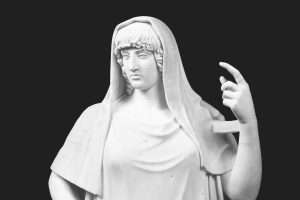
Hestia: N/W? UNveiled?
And/or: ''High winds. Torn clouds race across the sky. The gravestones moan; the trees seeth, flinging tattered rooks into the air {crows?}; squalls of rain batter the window pains. The GREEN is shrewn with leaves and twigs. Tim, Nora and i attempt a game of cards in the kitchen {'13' link?}, but end up sitting in silence, watching the 'fire' roar...Yesterday the peacocks tail filled the cellar {of the mind?} with its rainbow {Iris?}, stretching like Gods covenant between Above and Below. There was a subtle perfume of lilies {'nose' link? i.e., smell as opposed to say sound, i.e., ear}. The Hermetic glass is like a double prism that divides the world into its constituent hues and returns them to the single white light that is their source and goal. This is the mystery of multipilicity....'' [Page 338/9 'Mercurius' / P. Harpur].
Hera has a chariot pulled by peacocks. + Arabians associated Gemini with the 'peacock'. {'twin feathers'?}.
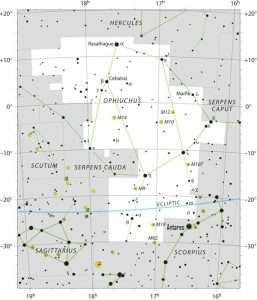 Pavo: The Peacock {male}. Placed in the Southern Hemisphere in 1603. Same time as the Greek alphabet was introduced to highlight 'bright' stars. A conjunction took place {Jupiter/Saturn} in 1604. And supernova in Ophiuchus in same year. {A-Z of Constellations / Part 4 / 'Mirthy'}.
Pavo: The Peacock {male}. Placed in the Southern Hemisphere in 1603. Same time as the Greek alphabet was introduced to highlight 'bright' stars. A conjunction took place {Jupiter/Saturn} in 1604. And supernova in Ophiuchus in same year. {A-Z of Constellations / Part 4 / 'Mirthy'}.
Side note: ''Earth actually travels through 13 signs, including Capricorn, Aries, and, yes, Ophiuchus, but some 3,000 years ago the Babylonians—not NASA—decided 12 was neater than 13, so excluded the 13th zodiac sign and divided the zodiac into 12 parts based on the 12 months of their calendar, according to NASA.''

The Mother Road.
And/or: ''The fascinating article entitled ''Triskaidekaphobia'' {i.e., fear of 13}, Paul Hoffman tells readers of the phobia that 13 plays in absenteeism in America.... Over the centuries it has assumed an increasingly negative character in popular belief. In the Christian tradition 13 is a remembrance of the Last Supper, where one of the disciples - the 13th - betrayed Jesus....Like eleven, the 13 is a number that transgresses a closed system, in this case 12, the number of the zodiac: the sun never appears along with all twelve signs to make up thirteen but rather, stands before one of them {12+1}. This notion is reflected in fairy tales and myths where the hero is not supposed to open a 13th door, which would destroy the perfect, circular 12.'' ['Mystery of Numbers].
Eleventh ?
Odds/Evens.
136+1?
land): ''each continent has been transgressed by continental seas.''
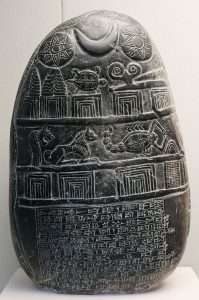 ''There is no evidence of the constellation preceding the classical era, and in Babylonian astronomy, a "Sitting Gods" constellation seems to have been located in the general area of Ophiuchus. However, Gavin White proposes that Ophiuchus may in fact be remotely descended from this Babylonian constellation, representing Nirah, a serpent-god who was sometimes depicted with his upper half human but with serpents for legs.''
''There is no evidence of the constellation preceding the classical era, and in Babylonian astronomy, a "Sitting Gods" constellation seems to have been located in the general area of Ophiuchus. However, Gavin White proposes that Ophiuchus may in fact be remotely descended from this Babylonian constellation, representing Nirah, a serpent-god who was sometimes depicted with his upper half human but with serpents for legs.''
Otzi to enlarge.
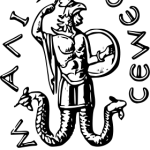
Abraxas
And/or: ''From Northern Hemisphere latitudes, the Serpent Bearer stands tall in the south to southwest sky on August and September evenings. From the Southern Hemisphere, Ophiuchus is closer to overhead. The bright red star Antares – brightest light in the constellation Scorpius the Scorpion – is also nearby.
Question. Did the Egyptians use the southern hemisphere?
''He has travelled around the whole of the two skies, he has circumambulated the Two Banks.'' [Pyramid Text utterance 273-274 - insert from the book 'Shamanic Wisdom in the Pyramid Texts' / Page 119].
Recall the upside down statues of Khafre found purposely in pits in the Sphinx temple. The beginning of the journey.
Refresher: "Not out but through."
Upstream or downstream to continue?
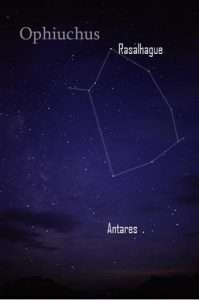 The official boundary lines for all 88 constellations were drawn up by the International Astronomical Union (IAU) in the 1930s. The photo below of the constellation Ophiuchus labels Ophiuchus’ brightest star, Rasalhague, and Scorpius’ brightest star, Antares. Rasalhague marks the head of Ophiuchus but is nowhere as bright as Antares, the star that
The official boundary lines for all 88 constellations were drawn up by the International Astronomical Union (IAU) in the 1930s. The photo below of the constellation Ophiuchus labels Ophiuchus’ brightest star, Rasalhague, and Scorpius’ brightest star, Antares. Rasalhague marks the head of Ophiuchus but is nowhere as bright as Antares, the star that 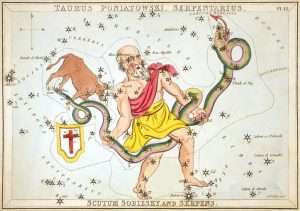 depicts the Scorpion’s beating heart....Poor Ophiuchus. Nobody ever claims him as a birth sign, despite the fact that the ecliptic runs across him, too. After all, the band of the zodiac extends some 8 degrees north and south of the ecliptic, spanning a total of SIXTEEN degrees in width....Yet the moon and planets do regularly move within boundaries of Ophiuchus. And so does the sun. The sun is in front of Ophiuchus from about November 30 to December 18 each year....The best time to observe Ophiuchus is during a Northern Hemisphere summer (Southern Hemisphere winter). From the Northern Hemisphere, late July and early August present this constellation high in the southern sky at nightfall and early evening. It’s seen in the southwest sky on autumn evenings in the Northern Hemisphere.''
depicts the Scorpion’s beating heart....Poor Ophiuchus. Nobody ever claims him as a birth sign, despite the fact that the ecliptic runs across him, too. After all, the band of the zodiac extends some 8 degrees north and south of the ecliptic, spanning a total of SIXTEEN degrees in width....Yet the moon and planets do regularly move within boundaries of Ophiuchus. And so does the sun. The sun is in front of Ophiuchus from about November 30 to December 18 each year....The best time to observe Ophiuchus is during a Northern Hemisphere summer (Southern Hemisphere winter). From the Northern Hemisphere, late July and early August present this constellation high in the southern sky at nightfall and early evening. It’s seen in the southwest sky on autumn evenings in the Northern Hemisphere.''

fish hook?

'Snake/Dragon head' on land. 'tail' in the sea.
And/or: The ancient astronomers saw that Draco curved around the still point of the ecliptic pole (fig. 4.9) and that its tail bent backward in the shape of the Arabic letter laam (see fig. 4.10). This is perhaps the basis from which the word El was derived. Reflected on the earth, however, this L of the Teli or Pole Serpent is reversed. If Allah is the God Most High, the L in the sky, then his daughter the earth is the reflection of that nature. And so the masculine “El,” or “Al,” becomes the feminine “al-Lat.”
Arabic Letter Lām (ل) is a fascinating part of the Perso-Arabic alphabet. It is the twentythird letter in the alphabet and resembles the bottom part of an umbrella.
The Arabic letter Lam is one of the most unique letters in any language. It is unique because it has the ability to be conjugated from both the right and the left sides.
This letter can be found in four different forms: Final, Medial, Initial, and Isolated.

'Spirit' or 'Soul'? Try Sidhe to enlarge.

''Suffice it to say that here the darkness has been tapped and an opening has been made through which the light might begin to shine and lead us home.'' [Page 213 'Imagining The World Into Existence'].
And/or: ''He makes me lie down in green pastures, he leads me beside quite waters.'' {Psalm 23}.
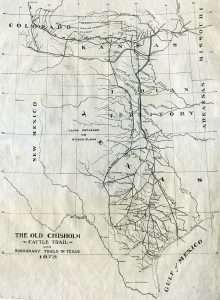
From south - north. Delphi to enlarge.
A working example: ''Come along boys and listen to my tale; I'll tell you of my troubles on the old Chisholm trail. Chorus: Come-a ti yi yippy, yippy, yay, yippy yay! Come-a ti yi yippy, yippy, yay! On a ten dollar horse and a forty dollar saddle; Ridin' and a punchin' them Texas cattle {Chorus}. We left old Texas October twentythird Drivin' up the trail with a U-2 herd {Chorus}. I jumped in the saddle an' I grabbed a-hold the horn, the best darned cowpuncher ever was born. I was on my best horse, and a going on the run....I'm up in the morning before daylight; Before I get to sleep the moon's shining bright. It's bacon and beans most every day, I'd sooner be a-eatin' the prairie hay. Feet in the stirrups and seat in the saddle, I hung and rattled with them long-horn cattle. Well the days are hot and the nights are cold This cowboy life is gettin' mighty old.
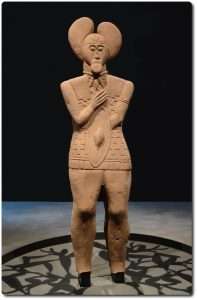
Mean or just Sad?
There's mud in the gully and dust in the draw The bossman's meaner than my mother-in-law. Spent two days lookin' for muley-headed calf. Ain't been to sleep in a week and a half....We rounded 'em up and put 'em on the cars, And that was the last of the old Two Bars. I'm going to the ranch to draw my money, Goin' into town to see my honey. I went to the boss to draw my roll, He figured me out nine dollars in the hole. I'll sell my outfit as soon as I can, 'Cause I ain't punchin' cattle for no mean boss man. So I sold old baldy and I hung up my saddle, And I bid farewell to the longhorn cattle.'' ['Old Chisholm Trail Song'].

An Egyptian 'horned' animal.
And/or: ''Edfu was one of several temples built during the Ptolemaic Kingdom, including the Dendera Temple complex, Esna, the Temple of Kom Ombo, and Philae. Its size reflects the relative prosperity of the time.[4] The present temple, which was begun "on 23 August 237 BC, initially consisted of a pillared hall, two transverse halls, and a barque sanctuary surrounded by chapels."[5] The building was started during the reign of Ptolemy III Euergetes and completed in 57 BC under Ptolemy XII Auletes. It was built on the site of an earlier, smaller temple also dedicated to Horus, although the previous structure was oriented east–west rather than north–south as in the present site. A ruined pylon lies just to the east of the current temple; inscriptional evidence has been found indicating a building program under the New Kingdom rulers Ramesses I, Seti I and Ramesses II.....A naos of Nectanebo II, a relic from an earlier building, is preserved in the inner sanctuary, which stands alone while the temple's barque sanctuary is surrounded by nine chapels.''
Coincidence or a meaningful one?

''Touch-wood.''
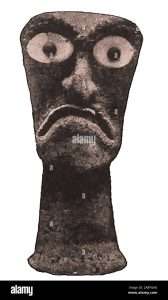
Whats the remedy for mad, bad or just sad?
A work in progress {'synchronistic'?}: ''It was first celebrated in Russia on the last Sunday of February 1913, in conjunction with the peace movement on the eve of the First World War. The demonstrations marking International Women’s Day in Russia proved to be the first stage of the Russian Revolution. In 1917, Russian women rallied on the last Sunday of February {'twentythird'} for their right to bread and peace. This demonstration was part of the movement that led to the February Revolution. Four days later the last tsar was forced to abdicate and women won their right to vote. After converting the date to the Gregorian calendar, 8 March became International Women’s Day.'' ['Royal History's Greatest Fibs: Russian Revolution'].
Side note: ''Shakespeare who was born on the same day as the one he 'died' on - April 23rd.'' ['Tipping Point' / ITV / 2020].
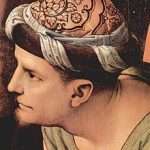
A covering for those ''bare bones''? 'Flower'?
Question: Can that tell us anything as to who really wrote those plays?
Continued: Peak? {i.e., as in - say - a peak experience}. REPRESENTED as the top of a ....?
And/or: ''Psi /ˈsaɪ/ (uppercase Ψ, lowercase ψ; Greek: ψι psi [ˈpsi]) is the 23rd letter of the Greek alphabet and is associated with a numeric value of 700.'' [Wiki].
 Side note: ''A supernova became visible on the North American continent in the early morning of July 5th 1054AD {near Aldebaran in Taurus}. It hung diagonally above the crescent moon - just above the eastern horizon... The violent death of a star....It became known as the Crab Nebula {Cancer?}...It is also known as M-1, the first object in Charles Messier's catalogue...On the evening of July 4th it was visible in the eastern sky over China...In the Sung Dynasty it was referred to as 'guest star' {from ''afar''?}....signifying either disaster or triumph...''T'ien-kuan'' was the name the Chinese called the area between the horns of Taurus - it was considered the 'Gate of Heaven'....Two accounts from China and Japan stated it remained visible {at high noon} for twentythree days.'' [Page 91 'The Orion Zone' / G. A. David].
Side note: ''A supernova became visible on the North American continent in the early morning of July 5th 1054AD {near Aldebaran in Taurus}. It hung diagonally above the crescent moon - just above the eastern horizon... The violent death of a star....It became known as the Crab Nebula {Cancer?}...It is also known as M-1, the first object in Charles Messier's catalogue...On the evening of July 4th it was visible in the eastern sky over China...In the Sung Dynasty it was referred to as 'guest star' {from ''afar''?}....signifying either disaster or triumph...''T'ien-kuan'' was the name the Chinese called the area between the horns of Taurus - it was considered the 'Gate of Heaven'....Two accounts from China and Japan stated it remained visible {at high noon} for twentythree days.'' [Page 91 'The Orion Zone' / G. A. David].
"The 23rd quadrant of the Gamma sector". {Galaxy Quest 1999}.
Side note: ''The 23rd figure of the Queen was unveiled at Madame Tussauds.'' ['The Chase'].
''It was on the Apollo Eighth Mission that first saw the dark side of the moon.'' ['The Chase'].
Side note: ''The way of 'marriage' seems fraught with....all consuming passion. More often than not, the hungry inner self has been eclipsed by the outer personality....Within these eclipsed areas - where our needs, wants and beliefs remain secret, even to ourselves - lies ones shadow....Two halfs never created a whole but only another half so long as the shadow remains eclipsed.'' [Pages 84/85/104 'Dreams of Isis: A Woman's Spiritual Sojourn' / N. Ellis].
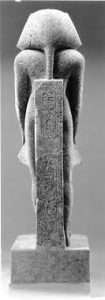
'Hung'?

Up or down?
And/or: "Cassiopeia is one of the oldest and popularly best known of our constellations, and her throne; ''the shinie Casseiopeia's chair'' of Spencer Faerie Queen, is a familiar object to the most youthful observer. It is also known as the Celestial 'W' when below the pole, and the Celestial 'M' when above it...Hyginus describes the figure as the Queen ''bound to her seat'' and thus secured when going around the pole - head downward- as a lesson selected by her 'enemies' {i.e., negative aspects}, the sea-nymphs - as a lesson in humility...Known by the Greeks as 'She of the Throne' but at one time in Greece it was the Laconian Key: 'A brazen key she held, the handle turned, with steel and polished elephant adorned' {Homer}. AND/OR 'Even as a folding door, fitted within with key; is thrown back when the bolts are drawn' {Aratos}. [Page 142/3 'Star Names and Their Meaning'].
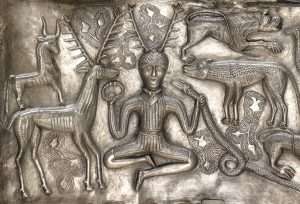
Seat {'foundation'?} of knowledge. Basalt?
Something hinted at: "Once during those last eerie, in-between moments of waiting, I thought I 'fancied' seeing a great pair of antlers move silently against the sky line and then vanish. ''So it was only a 'deer'...!" I said to myself, as if scolding a silly child....But I then saw those antlers again...''Listen to me...listen!'' it said in a low voice. 'The gateway of your soul lies in an ancient forest.' Then it was gone.'' [Page 389 of the book by Douglas Monroe. Chapter entitled 'Beyond Word and Deed'].
Astraea / Erigone.

Single mastaba with a limestone sarcophagus. Recall Recall the 'granite' one in the kings chamber ABOVE a 'void' {i.e., Grand Gallery}.
And/or: 'Twentythree' layers {limestone?} of the Parthenon - dedicated to Athene. S/W corner. Built in the aftermath of the Battle of Marathon. All marble. No straight lines. All curved. Tilted/slanted from the outside in. When projected towards the sky it forms a 'triangle'. ['The Acropolis: Secrets of the Ancient Citadel' / Nat. Geo / 2021].
And/or: ''Psi /ˈsaɪ/ (uppercase Ψ, lowercase ψ; Greek: ψι psi [ˈpsi]) is the 23rd letter of the Greek alphabet and is associated with a numeric value of 700.'' [Wiki].
''Sixes and Sevens''?
Menkaure to enlarge.
Side note: ''Thus the Septuagiunt translation of 'almah as PARTHENOS {virgin} is correct: as in Mathew 1:23 ....It is mentioned SIX times in the Bible. The more common name for 'virgin' betulah is used twice to refer to a married woman......Immanuel is a symbolic name, meaning 'God with Us'...'' [Page 1029 'King James Study Bible'].
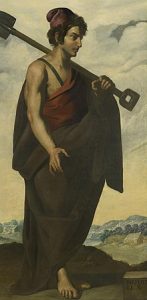
Best foot forward?
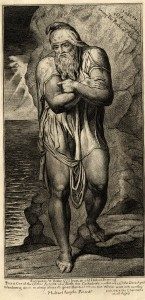 And/or: ''According to the Book of Genesis, Naphtali (/ˈnæftəlaɪ/; Hebrew: נַפְתָּלִי, Modern: Naftalī, Tiberian: Nap̄tālī, "my struggle") was the sixth son of Jacob and second son with Bilhah. He was the founder of the Israelite Tribe of Naphtali. Some biblical commentators have suggested that the name Naphtali may refer to the struggle between Rachel and Leah for the favours of Jacob. Bilhah was the handmaid of Rachel, who was infertile at the time, and had persuaded Jacob to have a child with Bilhah as a proxy for having one with herself.''
And/or: ''According to the Book of Genesis, Naphtali (/ˈnæftəlaɪ/; Hebrew: נַפְתָּלִי, Modern: Naftalī, Tiberian: Nap̄tālī, "my struggle") was the sixth son of Jacob and second son with Bilhah. He was the founder of the Israelite Tribe of Naphtali. Some biblical commentators have suggested that the name Naphtali may refer to the struggle between Rachel and Leah for the favours of Jacob. Bilhah was the handmaid of Rachel, who was infertile at the time, and had persuaded Jacob to have a child with Bilhah as a proxy for having one with herself.''
''The term 'ancillary' comes from the Latin for Handmaid.'' ['The Chase'].
According to Genesis 46:24, Naphtali had four sons: Jahzeel, Guni, Jezer, and Shillem. The name of his wife/wives are not given. He and his family migrated to Egypt, with the rest of the clan, where they remained until the Exodus. According to the apocryphal Testament of the Twelve Patriarchs, he died at 137 and was buried in Egypt. In this apocryphal material, Naphtali gave his sons no commandment except regarding the fear of God, that they should serve Him and follow after Him, also admonished them not to join themselves unto the sons of Joseph but join the sons of Levi and Judah. He also had a vision about the division of tribes of Israel and told to them that Abraham was chosen by God for his faith.'' [Wiki].

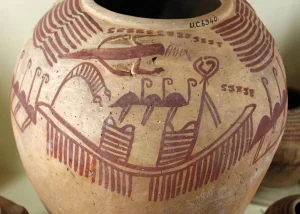
"A Predynastic pottery vase from UCL’s Petrie Museum. Its decoration includes a depiction of a shrine marked by the Bat standard." N.B. 'SIXTEEN' tassels to the left. 'Twenty' to the right.
Continued: German archeologist Gunther Dreyer attemting to work out the 'evolution of the afterlife' in Egypt: begins at Djet tomb complex at Abydos an exit in the S/W corner allows him to head towards the opening in the valley beyond: the entrance to the afterlife. Next he goes to nynetjer tomb complex {2nd Dyn} - finds an underground labyrinth of tunnels very similar to those found under the Step pyramid with one exception ALL SEEM TO BE CURVED WITH NO RIGHT ANGLES.''
Question. Did Imhotep express that 'female' concept in a different form?
Temple of Athene to enlarge.
And/or:
- According to Greek Mythology, the Aegean Sea owes its name to the King of Athens, Aigeas (Aegeas).
-

Turtle or tortoise? Carapace to enlarge.
King Minos 'Minoas' of Crete in order to punish the Athenians who had killed his son Androgeo, declared war on Athens and won. The Athenians subsequently became subjects of the Minoan Empire. King Minos then demanded that a tribute of honour be paid. At nine year intervals, seven Athenian boys and seven Athenian girls were to be sacrificed. They were to be sent to Crete and devoured by the mythical Minotaur, a monster with the body of a man and the head of a bull, who lived in the Labyrinth.
- Thiseas {Theseus}, the son of Aigeas and Aithra, decided that he would slaughter the Minotaur and end the shameful bloody sacrifices. He took the place of one of the seven young men and set sail for Crete. Before he left, it was agreed with his father Aigeas that they would hoist black sails as a 'show' of mourning, but that if they were successful and slayed the monster, they would hoist white sails on the journey home.
-
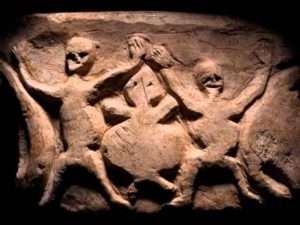
''Raised hands'' = 'Wet' or 'Dry'? As a means....?
On his journey he met and fell in love with Ariadne, daughter of King Minoas. She gave him a ball of string, 'Ariadne's Clue'. The idea was to unravel the string in the Labyrinth, so that after Thiseas slayed the Minotaur, he would find his way back to the entrance. The mission was successful and the Minotaur was killed.
Under the cloak of night, Thiseas, Ariadne and the others escaped to the port and embarked on the ship for the return journey. On the way they stopped at the island of Naxos. Story tells us that Thiseas abandoned Ariadne while she was sleeping and continued on his journey home, but forgot to raise the white sails as he had promised to his father Aigeas (some say that Ariadne laid a curse on Thiseas).
Forgetting/Remembering.
-
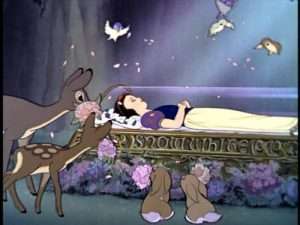
Soul asleep = forgetting.
Aigeas waited for his son to return. As he stood on the cape (Akrotiri) of Sounio, he spied the ship as it rounded the cape - it had black sails. Believing that his son was dead, the king despaired. He jumped off the cliffs into the sea from the temple of Poseidon and killed himself.
Forgetting/Remembering to enlarge i.e., due to 'sleep'.
- Question. What happened to him after his 'father' died - due {even if indirectly} to his own actions {or should that be - lack of it}.
From a different perspective: "After their departure from Troy, Odysseus and his companions stop at Ismaros.[2] They sack the town, and attack the Cicones, the inhabitants of the adjacent region. They kill the men and divide the women and treasures among themselves, then begin to feast, despite Odysseus' advice that they leave immediately. The Cicones, who have left in search of help, come back in the morning in great numbers. Odysseus manages to escape, although he loses several men in the process. He embarks with the survivors and continues his journey home to Ithaca.
While at Ismaros, Odysseus spares Maron, the son of Euanthes and the priest of Apollo, and his family. Because of this, Maron gifts him a "goatskin bottle of black wine", some gold, and a mixing bowl. The wine was a strong and divine drink, as for each cup of wine, 20 times as much water was added to it to dilute it. He uses this wine to lull the Cyclops Polyphemus to sleep."
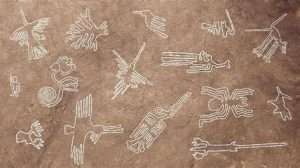
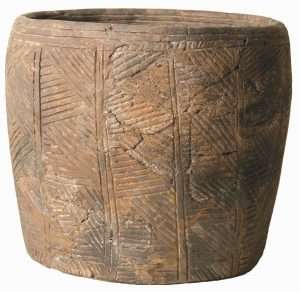
Whats the common form that is inscribed? 'Pyr'amid to enlarge.
Continued: ''Around Glastonbury there are many legends rooted in the land. Its strange Tor, standing like a bent pyramid above the then marshy lowlands, surrounded by a distinct circle of hills and the flat glitter of the sea. Here Joseph of Arimathea is supposed to have brought the Holy Grail, and when he came to land, planted his thornwood staff in the hillside. This miraculously grew, and its 'offspring' are to be found in the town to this day. They flower about Yuletide as well as late in May with other ordinary Hawthorns. Around the area is a vast Zodiac of great figures, laid out in ancient times by paths and hedges and the meandering patterns of streams and rivers. Some points are marked with small barrows, quarries and iron age Hill Forts. Others overlain with modern roads and railways {'stations'?}. From the air all twelve signs can be seen in their traditional forms {objective view?}, lying just where the stars of each constellation would indicate.'' [Page 102 'The Path Through the Labyrinth' / M Green].
''Sometimes we may have to pick through the thorns to find a rose.'' ['Expedition Unknown' S10 EP20].
'Station Of No Station'?
And/or: Alexandria is a port city on the Mediterranean Sea in northern Egypt founded in 331 BCE by Alexander the Great. It was the site of the Pharos (lighthouse), one of the seven wonders of the ancient world, and the legendary Library of Alexandria and was once the most vital cultural center of the ancient world, rivalling even Athens, Greece.
S/E - N/W? OR N/E - S/W?
''There is some copper on Rousay which could have been easily accessed, through the tin required to make this alloy from Cornwall, hinting at a very long commercial connection.'' [Page 24 'Current Archaeology' / March 2023].
''Yule (also called Jul, Julblot, jól, jólablót, joulu, "Yule time" or "Yule season") is a festival historically observed by the Germanic peoples. Scholars have connected the original celebrations of Yule to the Wild Hunt, the god Odin, and the pagan Anglo-Saxon Mōdraniht ("Mothers' Night").'' [Wiki].
'The Mother Archetype' {Page 81 'The Archetypes and the Collective Unconscious' / C. G. Jung].

''Half'' = semicircle?
From a different perspective {Macro?}: ''This 'Foundation Stone' of the Anthroposophical Society was formed at the Xmas conference 1923 out of the tragedy a year earlier when the Goetheanum building had gone up in flames during the last hour of 1922. The foundation stone of that building had been laid into the hill of Dornach during the stormy evening of 20th Setember 1913. It was a symbol of a deed which was to give visible and tangible form to the creative spirit of the world...In working with this meditation we should not forget that when it was originally heard, on Xmas morning 1923 {'twentythree'}, it was the first half of each of the three verses that constituted our Foundation Stone {in the hearts and souls} - whereas the second halfs, which are the Cosmic Reply, came a little later.'' [Introduction: 'The Foundation Stone Meditation' / R. Steiner].
'Twentyfour'?
Side note: Synchronistic link?..."By AD 900 a further dimension to the feminine principle was enacted in the institution of Feasts dedicated to the Mother of Mother of God, St, Anne. Although the cult of St Anne did not gain great force until the 15th and early 16th centuries, its seed appeared in the Institution of the Feast of the Conception of St Anne of Byzantium some six hundred years previously. At this time too, tradition has it that the holy Roman Emperor, Charles the Bald, the son of Charlemagne, left in his will the treasured relic of the shift that Mary had worn at the Annunciation. It was to provide a fitting edifice for such a priceless 'gift' that the present beautiful building of the cathedral of Notre Dame at Chartres was constructed in 1194, after the original church had been destroyed by fire, when the relic miraculously survived the conflagration." [From the book by G. Knight].
Spirit-fire or Soul?

The 'Dog' Star.

Lord Lyon King.
Continued: In story form {with a few extra nuggets?}: ''Look, Virgin Mary? Listen. This time i'm going to count to twentythree, and when i open my eyes, you try to come down from heaven and get into the closet. And i'll give up candy and cake.....I counted slowly with my eyes closed, trying to imagine at the same time the Virgin Mary {'M'?} winging her way down from the skies like some great WHITE bird and hovering over Brooklyn BRIDGE looking for my 'house'. ....No Virgin Mary just three more pups in the closet...Finally, i resigned myself to the fact that my efforts to lure heaven {to earth} had failed. I gave up the ghost of the dog as it were {i.e., lower aspect}. Empty and exhausted, i wandered over to the BAY window and sat there....looking out at the FIG tree blooming. ...Sitting there drowsy and unfocused, i must in my innocence have unwittingly tapped into the appropriate spiritual doorway, for suddenly the key turned and the door to the universe opened.'' [Page 64/5 'Imagining the World Into Existence'].
Skeleton key?
'Was' {Uas} staff symbol?
Sycamore?
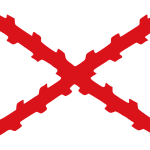
Flag of the Low Countries.

'High' country {Inverness}.
''Patience and Fortitude, the world-renowned pair of marble lions that stand proudly before the majestic Beaux-Arts building at Fifth Avenue and 42nd Street in Manhattan, have captured the imagination and affection of New Yorkers and visitors from all over the world since they were placed on their pedestals days before the building was dedicated on May twentythird, 1911.
During the Great Depression, New York City Mayor Fiorello La Guardia dubbed them “Patience” and “Fortitude”, after the qualities he felt New Yorkers needed to get through it. As the world has changed, our lions have been there to see it and be a witness to history—all while remaining a steadfast symbol for what the Library represents: a source of inspiration and strength for all.''
Side note: 'Fortytwo' nomes of Upper/Lower Egypt.
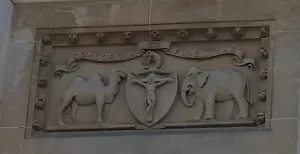 ''Of all the mysterious things about a place like the Northern Highlands, one of the greatest mysteries is found in the least expected place for such a thing. The front of the Inverness Town House is placed, in a position of prominent authority, above the grand front door is placed the Coat of Arms of Inverness.....On the shield of the Arms, Jesus is portrayed on the cross of his crucifixion. Above the shield is a stylised cornucopia, which means horn of plenty. The shield is supported on the left by a Bactrian camel and on the right by an Asian or Indian elephant. The entire arms are surmounted with the banner bearing the mottos of the Royal Burgh “Concordia et Fidelitas” – Fidelity and Harmony!''
''Of all the mysterious things about a place like the Northern Highlands, one of the greatest mysteries is found in the least expected place for such a thing. The front of the Inverness Town House is placed, in a position of prominent authority, above the grand front door is placed the Coat of Arms of Inverness.....On the shield of the Arms, Jesus is portrayed on the cross of his crucifixion. Above the shield is a stylised cornucopia, which means horn of plenty. The shield is supported on the left by a Bactrian camel and on the right by an Asian or Indian elephant. The entire arms are surmounted with the banner bearing the mottos of the Royal Burgh “Concordia et Fidelitas” – Fidelity and Harmony!''

Any 'camels'?
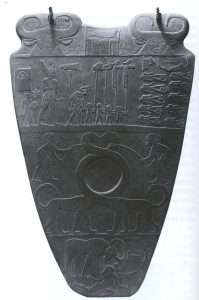
Narmer Palette.
Side note: ''The Bactrian camel (Camelus bactrianus), also known as the Mongolian camel or domestic Bactrian camel, is a large even-toed ungulate native to the steppes of Central Asia. It has two humps on its back, in contrast to the single-humped dromedary.''
Ungulates (/ˈʌŋɡjʊleɪts, -ɡjə-, -lɪts, -ləts/ UNG-gyuu-layts, -gyə-, -lits, -ləts) are members of the diverse clade Euungulata ("true ungulates"), which primarily consists of large mammals with hooves. Once part of the clade "Ungulata" along with the clade Paenungulata, "Ungulata" has since been determined to be a polyphyletic and thereby invalid clade based on molecular data. As a result, true ungulates had since been reclassified to the newer clade Euungulata in 2001 within the clade Laurasiatheria while Paenungulata has been reclassified to a distant clade Afrotheria.[4] Living ungulates are divided into two orders: Perissodactyla including equines, rhinoceroses, and tapirs; and Artiodactyla including cattle, antelope, pigs, giraffes, camels, sheep, deer, and hippopotamuses, among others. Cetaceans such as whales, dolphins, and porpoises are also classified as artiodactyls, although they do not have hooves. Most terrestrial ungulates use the hoofed tips of their toes to support their body weight while standing or moving. Two other orders of ungulates, Notoungulata and Litopterna, both native to South America, became extinct at the end of the Pleistocene, around 12,000 years ago.
The term means, roughly, "being hoofed" or "hoofed animal".
Even or odd toed?
Continued: ''The depiction on the Town House was not carved for placement there. It was actually commissioned for the old Bridge of Ness, whose modern replacement can be seen down the hill from the Town House.....We do know that what became Inverness was an important Pictish centre around the time of Saint Columba. Could those elephants supporting a camel have started as Pictish beasts? What might the camel have been in the days of King Brude? That would be fun. As you look across the river towards Craig Phadrig from the Town House steps, it’s something to think about.''
'Rainbows'?

'light oxen': "I bring up an individual type as a point of departure to talk about. The one {'emotion'?} that is strongest will pull you first." [Page 4 'Stopping and Seeing' / Translated by T. Cleary].
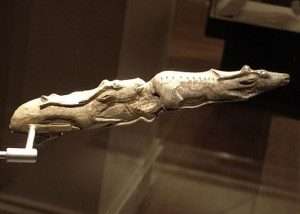
Female in front. Male behind. Found in the same location. Reindeer made from mammoth bone.
And/or: This term is a shortening of the straw that broke the camel's back , which conveys a vivid image of an overloaded animal being given one slight additional weight. The expression dates from the mid-1800s, and replaced the earlier the last feather that breaks the horse's back.
If an event is the last straw or the straw that broke the camel's back, it is the latest in a series of unpleasant or undesirable events, and makes you feel that you cannot tolerate a situation any longer.
Side note: ''One story mentions that a baby camel was buried with the Khan, so its mother would always be able to lead the Khan’s family to the exact location of his grave. And another version says that a river was temporarily diverted to hide the grave (as was done for the Sumerian king Gilgamesh, and the Visigothic king Alaric).''
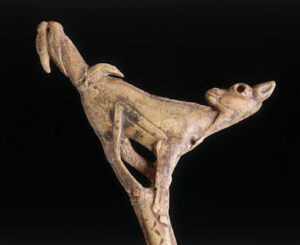
Spear thrower. 'Droppings'?
Side step: Some think that mushrooms are the spores of the galaxy, the life bringers, so coded with secrets that they must remain hidden, sequestered with the magic of their knowing. Thus their association with moonlight, the heartbeat of the woods, and fairies; a grounded ethereality is theirs. The Greeks always included in their feasts for the gods not just roasted flesh but also ambrosia. What was ambrosia? It was described by the second-century Greek scholiasts in Alexandria who wrote about such things as compounded of mele, which is honey; udor, water; karpos, fruit; elias, olive oil; and muke. Therein lies a mystery, for muke means sacred psilocybe mushroom. It was a secret that the food of the gods was a psychedelic substance so that the gods could get stoned, which is what gods do, you see. We are told that at Eleusis, initiates were served ambrosia, after which they had dreams and waking visions. A little side trip through the fields of theobotany may lead us to the origins of the expression holy cow. For way back when, say some fifty or sixty thousand years ago, if you were a hunter-gatherer, you dutifully followed a trail of ungulates’ droppings to find your dinner. And what grows out of these droppings but the psilocybe mushroom! We might picture these not-too-bright people following the trail and eating magic mushrooms, which, as we now know, activate the speech centers. The verbal mind—what I call the logos laser—was primed, perhaps, by cow patties. Such is the ecology of things in this divine world." ['A Mythic Life' / J. Houston].

'Higher/lower'. In a box or 'Tower'? ''Six'' aspects? AND/OR 'Tower' link to Saturn/Jupiter conjunction? {see Part 1}.

The Mammoth spear thrower is a spear thrower in the form of a mammoth, discovered at the "Montastruc rock shelter" in Bruniquel, France. It is from the late Magdalenian period and around 12,500 years old. The spear thrower was carved from a reindeer antler and depicts a mammoth with a hole for an eye which probably held a bone or stone insert originally. The hook has been repaired after the antler from which it was carved broke. The tusks of the mammoth appear on each side but have mostly been lost due to damage.
Continued: ''Sometimes this philosophy has been hidden from the public and at other times it has been placed in plain view - though always in such a way as to remain unrecognized by outsiders. To take one example, the frontispiece of the 'History of the World' by Sir Walter Raleigh, published in 1614, is on display in the Tower of London. Thousands file past it every day, missing the goat's head {'Pan'?} hidden in its design and other coded messages." [Introduction to the book 'The Secret History of the World' / J. Black].
And/or: ''The two statuettes were discovered in Ur's vast royal cemetery, which was in use between 2600 and 2400BC....a time before cuneiform writing was widely used.....A number of representations of goats in Mesopotanian art appear to show wild male goats, with upright ears and curled horns, facing a tree in a mountain setting....In contrast, these goats {i.e., from Ur} were domestic male goats, with floppy ears and twisted {'spiral'?} horns....Originally attached to the trees with silver chains .....Found either side of a ''Queen'' or ''Priestess''.....The animals face and legs encased in gold, while its horns, its eyes, the fleece around its shoulders are made of Lapis Lazuli....The author speculates on what that 'stump' behind the head could mean. Tower in shape with a flat top {old knowledge for new knowledge} - out with the old in with the new. If anything was placed on it - this reader speculates it to be the head of a wild goat with pointy ears - like the Janus symbol - hindsight/Foresight - as a means...?'' [ Page 46 'Archaelogy' / March/April 2021].
And/or: Something unknown becoming known as represented from a different point of view with Nephthys/Isis.
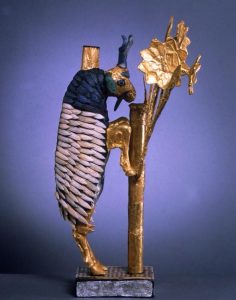
Question. What animal would be best to represent ''sure footedness'' on a mountain range. That same 'mountain' that is built from 'fiery' activity within ancient sea-beds {spirt-fire}. The peak of which leads to the next cycle {8 petalled} i.e., Tree of Knowledge and the Tree of Life {Soul}. 'Mineral' / Vegetable in relation to 'Animal'. From something 'wild' to something tamed. Pointy ears to 'floppy' ones {'domesticated'} Get it? In the spiritual SENSE of the word.
 As is: "I will tame the primal obsessions. Greed, anger, pride, hatred, and use them as powerful bullocks to plough the field of consciousness. Sowing the 'seed' of Om Kali Ma, transmitted to me by a skilful farmer. I will reap a vast harvest of illumination..." [Poem by Ramprasad Sen. Taken from the book 'The Path of the Priestess: A Guidebook for Awakening the Divine Feminine' / Sharron Rose]. Question. Anima/soul/ 'light'?
As is: "I will tame the primal obsessions. Greed, anger, pride, hatred, and use them as powerful bullocks to plough the field of consciousness. Sowing the 'seed' of Om Kali Ma, transmitted to me by a skilful farmer. I will reap a vast harvest of illumination..." [Poem by Ramprasad Sen. Taken from the book 'The Path of the Priestess: A Guidebook for Awakening the Divine Feminine' / Sharron Rose]. Question. Anima/soul/ 'light'?
Apis Bull {Shadow/spirit/ 'fire'?}. As a means...?
'Bull of the Mother'?
A working example: The Church of St. Trophime (French: Cathédrale Saint-Trophime d'Arles) (Trophimus) is a Roman Catholic church and former cathedral located in the city of Arles, in the Bouches-du-Rhône Department of southern France. It was built between the 12th century and the 15th century, and is in the Romanesque architectural tradition. The sculptures over the church's portal, particularly the Last Judgement, and the columns in the adjacent cloister, are considered some of the finest examples of Romanesque sculpture.
The church was built upon the site of the 5th-century basilica of Arles, named for St. Stephen.[1] In the 15th century a Gothic choir was added to the Romanesque nave. Along with other medieval and Roman buildings in Arles, in 1981 the church was designated a UNESCO World Heritage Site as part of the Arles, Roman and Romanesque Monuments group....

The Eastern Gallery, built the late 12th or early 13th century, has some Gothic features, including figures in the quoins of wise virgins and foolish virgins and the symbols of the Four Evangelists.

Seated on what?
The Passion story is told on the pillars, while the life of Christ is depicted on the carved capitals.
The scenes of Christ's childhood can be are read on the capitals from north to south; the Annunciation, the Visitation and the Nativity on the first capital; the next capital shows the coat of arms of Arles and an eagle with spread wings, the symbol of the Holy Roman Emperor, who at the time ruled Arles; the third capital shows the Annunciation to the shepherds, with two startled goats climbing the Tree of Life.
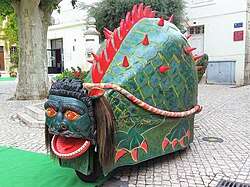
Tarasque
The church of Saint Trophime was the first stop on the Via Tolosa, one of the main pilgrimage routes through France leading to Santiago de Compostela in Spain. The church was also the episcopal seat, or home to the bishop’s chair, from the early fifth century until the early nineteenth century, giving this structure cathedral status.
According to legend, Trophimus of Arles becomes the first bishop of Arles.
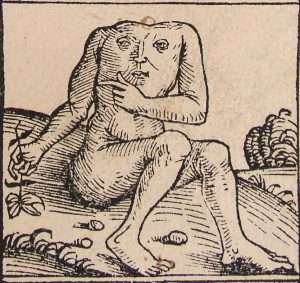
Remedy?
Trophimus is considered the protector against gout by the Catholic Church. His attributes include a bishop carrying his eyes or having his eyes put out. Feast Days: In the Roman Catholic Church, Trophimus is venerated on December 29. In the Eastern Orthodox Church, his feast day is January 4.
Provence to enlarge.
A practical {'natural'} example: ''The island {WEST} lies in the Firth of Clyde between Ayr and Ardrossan, and Kintyre. The profile of the north Arran hills as seen from the Ayrshire coast is referred to as the "Sleeping Warrior", due to its resemblance to a resting human figure. The highest of these hills is Goat Fell at 873.5 metres (2,866 ft). There are three other Corbetts, all in the north east: Caisteal Abhail, Cìr Mhòr and Beinn Tarsuinn. Beinn Bharrain is the highest peak in the north west at 721 metres (2,365 ft). [Wiki].
Glastonbury and White chalk Giant to enlarge.
Among others try ''Herodotus'' and ''Cicero'' to 'see' something beyond those first impressions, i.e.,both belonged to ''Mystery clubs''.
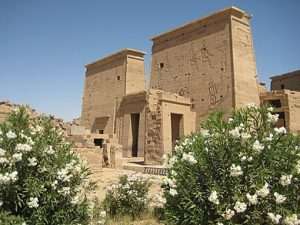
Helvia / Helen / Hestia ? 'H' awthorn?
Cicero was born in 106 BC in Arpinum, a hill town 100 kilometers (62 mi) southeast of Rome. His father was a well-to-do member of the equestrian order and possessed good connections in Rome. However, being a semi-invalid, he could not enter public life and studied extensively to compensate. Although little is known about Cicero's mother, Helvia, it was common for the wives of important Roman citizens to be responsible for the management of the household. Cicero's brother Quintus wrote in a letter that she was a thrifty housewife {'Hestia'?}.
Mineral - vegetative - Animal as a means......

That living face of one initiate was called Chick-pea. Coincidence?

Bean ears? Butter bean? i.e., ''double bean''. Mineral/Vegative/Animal as a means...? OR Broad bean?
Cicero's cognomen, or personal surname, comes from the Latin for chickpea, cicer. Plutarch explains that the name was originally given to one of Cicero's ancestors who had a cleft in the tip of his nose resembling a chickpea {'smell' link?}. However, it is more likely that Cicero's ancestors prospered through the cultivation and sale of chickpeas.[14] Romans often chose down-to-earth personal surnames: the famous family names of Fabius, Lentulus, and Piso come from the Latin names of beans, lentils, and peas, respectively. Plutarch writes that Cicero was urged to change this deprecatory name when he entered politics, but refused, saying that he would make Cicero more glorious than Scaurus ("Swollen-ankled") and Catulus ("Puppy"). [Wiki}. Try ''chickpea'' and/or ''nickname''.
Refresher: ''The Pyramid Text of Unas declares: 'It is Unas {as} the flowers that have sprung from pure earth....Unas gleams as Nefertem, as the lotus at the nostril {nose} of Ra.''
'Thirtythree' to enlarge.
Broad beans (Amharic: baqella) are one of the most popular legumes in Ethiopia. They are tightly coupled with every aspect of Ethiopian life. They are mainly used as an alternative to peas to prepare a flour called shiro, which is used to make shiro wot (a stew used widely in Ethiopian dishes). During the fasting period in the Ethiopian Orthodox Church tradition called Tsome Filliseta, Tsome arbeå, Tsome Tahsas, and Tsome Hawaria (which are in August, end of February, April, mid-November, beginning of January, and June–July), two uncooked spicy vegetable dishes are made using broad beans. The first is Hilibet, a thin, white paste of broad bean flour mixed with pieces of onion, green pepper, garlic, and other spices. The second is siljo, a fermented, sour, spicy thin yellow paste of broad bean flour. Both are served with other stews and injera (a pancake-like bread) during lunch and dinner.
''Pepper berry is another name for the peppercorn.''
 ''Falafel (/fəˈlɑːfəl/; Arabic: فلافل, [fæˈlæːfɪl] (
''Falafel (/fəˈlɑːfəl/; Arabic: فلافل, [fæˈlæːfɪl] (![]() listen)) is a deep-fried ball or patty-shaped fritter in Middle Eastern cuisine (especially in Levantine and Egyptian cuisines) made from ground chickpeas, broad beans, or both...The word falāfil (Arabic: فلافل) is of Arabic origin and is the plural of filfil (فلفل) 'pepper',[2] borrowed from Persian pilpil (فلفل),[3] cognate with the Sanskrit word pippalī (पिप्पली) 'long pepper'; or an earlier *filfal, from Aramaic pilpāl 'small round thing, peppercorn', derived from palpēl 'to be round, roll.''
listen)) is a deep-fried ball or patty-shaped fritter in Middle Eastern cuisine (especially in Levantine and Egyptian cuisines) made from ground chickpeas, broad beans, or both...The word falāfil (Arabic: فلافل) is of Arabic origin and is the plural of filfil (فلفل) 'pepper',[2] borrowed from Persian pilpil (فلفل),[3] cognate with the Sanskrit word pippalī (पिप्पली) 'long pepper'; or an earlier *filfal, from Aramaic pilpāl 'small round thing, peppercorn', derived from palpēl 'to be round, roll.''
'Chickpea' and/or 'Little boot' to enlarge.
Side note: ''Cuthbert had onions in his hand when close to dying.''
And/or: ''Onion is the Latin for large pearl.'' ['The Chase' / 2018].
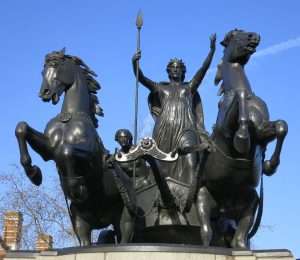
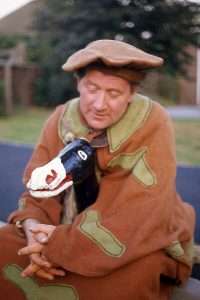
Flat top?
A work in progress: "In the British witch-cult the male sorcerer was dominant—though in parts of Scodand Hecate, or the Queen of Elfin or Faerie, still ruled—and The Coal Black Smith is likely to have been the song sung at a dramatic performance of the chase at a witches' Sabbath; the association of smiths and horned gods is as ancient as Tubal Cain, the Kenite Goat-god. The horned Devil of the Sabbath had sexual connexion with all his witch attendants, though he seems to have used an enormous artificial member, not his own. Anne Armstrong, the Northumbrian witch already mentioned, testified in 1673 that, at a well-attended Sabbath held at Allansford, one of her companions, Ann Baites of Morpeth, successively transformed herself into cat, hare, greyhound and bee, to let the Devil—'a long black man, their protector, whom they call their God'—admire her facility in changes. At first I thought that he chased Ann Baites, who was apparently the Maiden, or female leader of the coven, around the ring of witches, and that she mimicked the gait and cry of these various creatures in turn while he pursued her, adapting his changes to hers. The formula in The Coal Black Smith is 'he became a greyhound dog', or 'he became an otter brown', 'and fetched her home again'. 'Home again' is used here in the technical sense of 'to her own shape', for Isobel Gowdie of Auldearne at her trial in 1662, quoted the witch formula for turning oneself into a hare: I shall go into a hare With sorrow and sighing and mickle care, And I shall go in the Devil's name Aye, till I come home again....
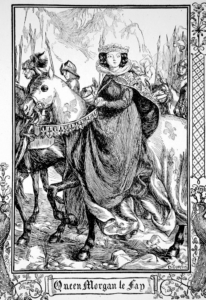

Live queen moor?
The love-chase is, unexpectedly, the basis of the Coventry legend of Lady Godiva. The clue is provided by a miserere-seat in Coventry Cathedral, paralleled elsewhere in Early English grotesque woodcarving which shows what the guide-books call 'a figure emblematic of lechery': a long-haired woman wrapped in a net, riding sideways on a goat and preceded by a hare. Gaster in his stories from the Jewish Targum, collected all over Europe, tells of a woman who when given a love-test by her royal lover, namely to come to him 'neither clothed nor unclothed, neither on foot nor on horseback, neither on water nor on dry land, neither with or without a gift' arrived dressed in a net, mounted on a goat, with one foot trailing in the ditch, and releasing a hare. The same story with slight variations, was told by Saxo Grammaticus in his late twelfthcentury History of Denmark. Aslog, the last of the Volsungs, Brynhild's daughter by Sigurd, was living on a farm at Spangerejd in Norway, disguised as a sooty-faced kitchen-maid called Krake (raven). Even so, her beauty made such an impression on the followers of the hero Ragnar Lodbrog that he thought of marrying her, and as a test of her worthiness told her to come to him neither on foot nor riding, neither dressed nor naked, neither fasting nor feasting, neither attended nor alone. She arrived on goatback, one foot trailing on the ground, clothed only in her hair and a fishing-net, holding an onion to her lips, a hound by her side.....
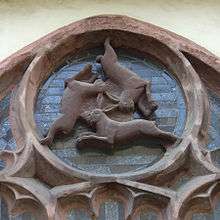
Man in the moon? hare?
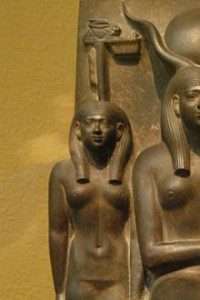
Hare - top left corner.
The May-eve goat, as is clear from the English witch ceremonies and from the Swedish May-play, 'Biikkerwise', was mated to the goddess, sacrificed and resurrected: that is to say, the Priestess had public connexion with the annual king dressed in goatskins, and either he was then killed and resurrected in the form of his successor, or else a goat was sacrificed in his stead and his reign prolonged. This fertility rite was the basis of the highly intellectualized 'Lesser Mysteries' of Eleusis, performed in February, representing the marriage of Goat-Dionysus to the Goddess Thyone, 'the raving queen', his death and resurrection. At Coventry, she evidendy went to the ceremony riding on his back, to denote her domination of him—as Europa rode on the Minos bull, or Hera on her lion....
 The hare, as has been pointed out in Chapter Sixteen, was sacred both in Pelasgian, Greece and Britain because it is swift, prolific and mates openly without embarrassment. I should have mentioned in this context that the early British tabu on hunting the hare, the penalty for a breach of which was to be struck with cowardice, was originally lifted on a single day in the year—May-eve—as the tabu on hunting the wren was lifted only on St. Stephen's Day. (Boadicea let loose the hare during her battle with the Romans in the hope, presumably, that the Romans would strike at it with their swords and so lose courage.)
The hare, as has been pointed out in Chapter Sixteen, was sacred both in Pelasgian, Greece and Britain because it is swift, prolific and mates openly without embarrassment. I should have mentioned in this context that the early British tabu on hunting the hare, the penalty for a breach of which was to be struck with cowardice, was originally lifted on a single day in the year—May-eve—as the tabu on hunting the wren was lifted only on St. Stephen's Day. (Boadicea let loose the hare during her battle with the Romans in the hope, presumably, that the Romans would strike at it with their swords and so lose courage.)
The hare was ritually hunted on May-eve, and the miserere-seat 'figure of lechery'—which is a fair enough description of the Goddess on this occasion—is releasing the hare for her daughters to hunt." ['The White Goddess'].
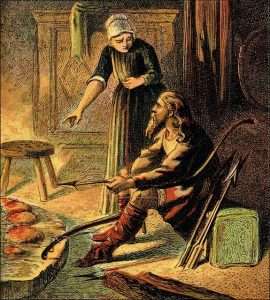
Leavened or UNleavened?

''The Birth of a New Man.''
'To know ones onions': ''The crucial fact is that the expression isn’t British but American, first recorded in the magazine Harper’s Bazaar in March 1922. It was one of a set of such phrases, all with the sense of knowing one’s stuff, or being highly knowledgeable in a particular field, that circulated in the 1920s. Others were to know one’s oats, to know one’s oil, to know one’s apples, to know one’s eggs, and even to know one’s sweet potatoes (which appeared in a cartoon by T A Dorgan in 1928). You may notice certain similarities between the substances mentioned, most being foods and most having names that start with a vowel.''

The Arch of Constantine. In the middle of the Seven Hills of Rome.
Sacred days of the year? {'five'?}.
CYPRUS.

'H'awthorn.
In articulatory phonetics, a consonant is a speech sound that is articulated with complete or partial closure of the vocal tract, except for the h sound, which is pronounced without any stricture in the vocal tract. Examples are [p] and [b], pronounced with the lips; [t] and [d], pronounced with the front of the tongue; [k] and [g], pronounced with the back of the tongue; [h], pronounced throughout the vocal tract; [f], [v], and [s], pronounced by forcing air through a narrow channel (fricatives); and [m] and [n], which have air flowing through the nose (nasals). Most consonants are pulmonic, using air pressure from the lungs to generate a sound. Very few natural languages are non-pulmonic, making use of ejectives, implosives, and clicks. Contrasting with consonants are vowels....The word consonant comes from Latin oblique stem cōnsonant-, from cōnsonāns 'sounding-together', a calque of Greek σύμφωνον sýmphōnon (plural sýmphōna, σύμφωνα).[1][2]
'Gathering'.
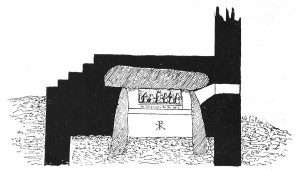
Christian Chapel of the seven Sleepers, built over a dolmen near Plouaret, France. [Chapter 3, 'The Secret History of the World' / J. Black]. Tomb or Womb?

Flag of Brazil. 'Twentysix' stars above the equator. The solitary one = Spica - below. 'Twentyseven' in total.
Dionysius Thrax calls consonants sýmphōna (σύμφωνα 'sounded with') because in Greek they can only be pronounced with a vowel.
Linear A/B?
ODSS/EVENS.
Side note: "A maximum break (also known as a maximum, a 147, or orally, a one-four-seven) is the highest possible break in snooker in normal circumstances[a] and is a special type of total clearance. A player compiles a maximum break by potting all 15 reds with fifteen blacks for 120 points, followed by all six colours for a further twentyseven points. Compiling a maximum break is regarded as a highly significant achievement in the game of snooker, and may be compared to a nine-dart finish in darts or a 300 game in ten-pin bowling.
Joe Davis made the first officially recognised maximum break in a 1955 exhibition match in London."

Three and four? Wide or long?

"A toothcomb (also called a tooth comb or dental comb) is a dental structure found in some mammals, comprising a group of front teeth arranged in a manner that facilitates grooming, similar to a hair comb. The toothcomb occurs in lemuriform primates (which include lemurs and lorisoids), treeshrews, colugos, hyraxes, and some African antelopes." 'Gotland' to enlarge.
Continued: The genus Equus was first described by Carl Linnaeus in 1758. It is the only recognized extant genus in the family Equidae.[9] The first equids were small, dog-sized mammals (e.g. Eohippus) adapted for browsing on shrubs during the Eocene, around 54 million years ago (Mya). These animals had three toes on the hind feet and four on the front feet with small hooves in place of claws, but also had soft pads.[10] Equids developed into larger, three-toed animals (e.g. Mesohippus) during the Oligocene and Miocene.[9][10] From there, the side toes became progressively smaller through the Pleistocene until the emergence of the single-toed Equus.[11]
The genus Equus, which includes all extant equines, is believed to have evolved from Dinohippus, via the intermediate form Plesippus. One of the oldest species is Equus simplicidens, described as zebra-like with a donkey-like head shape.
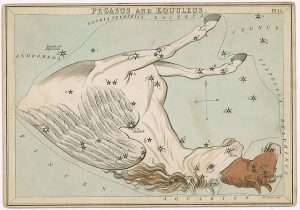
A ''quarter'' of something. 'Ploughshare'?
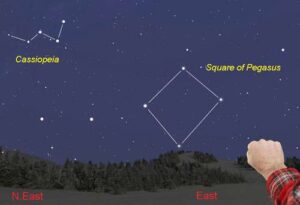 Equuleus is a faint constellation located just north of the celestial equator. Its name is Latin for "little horse", a foal. It was one of the 48 constellations listed by the 2nd century astronomer Ptolemy, and remains one of the 88 modern constellations. It is the second smallest of the modern constellations (after Crux), spanning only 72 square degrees. It is also very faint, having no stars brighter than the fourth magnitude....
Equuleus is a faint constellation located just north of the celestial equator. Its name is Latin for "little horse", a foal. It was one of the 48 constellations listed by the 2nd century astronomer Ptolemy, and remains one of the 88 modern constellations. It is the second smallest of the modern constellations (after Crux), spanning only 72 square degrees. It is also very faint, having no stars brighter than the fourth magnitude....
In Greek mythology, one myth associates Equuleus with the foal Celeris (meaning "swiftness" or "speed"), who was the offspring or brother of the winged horse Pegasus. Celeris was given to Castor by Mercury. Other myths say that Equuleus is the horse struck from Poseidon's trident, during the contest between him and Athena when deciding which would be the superior. Because this section of stars rises before Pegasus, it is often called Equus Primus, or the First Horse. Equuleus is also linked to the story of Philyra and Saturn.[10]
Created by Hipparchus and included by Ptolemy, it abuts Pegasus; unlike the larger horse, it is depicted as a horse's head alone.[2] [11]
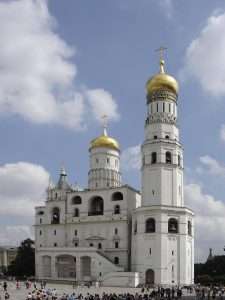
Onions.
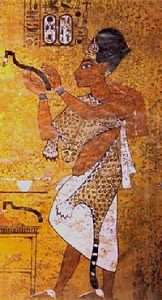 A working example: ''The fourth ceremony of the Unas liturgy {after the Opening of the Mouth - with 'flint'} - begins at the west end of the second register. It is the anointing with the seven holy oils....The transition from the fourth to the final part of the liturgy is marked by two purification rites involving fire and water. The final part has to do entirely with the great feast. The number fourteen has both lunar and Osirian significance, since it corresponds both to the cycle of the moon and to the mythological fact that Osiris was cut into 14 pieces by Seth. It is as if in this first part of the great feast, this full cycle of the death and rebirth of both moon and Osiris is ritually enacted {i.e., from the middle of the center register {of three} to the bottom} - on the North wall of the sarcophagus chamber}. After this there are twelve utterances, all of which are meat offerings, save the second, which is of onions {utts, 124-35}....Followed by 5 bird offerings...4 of bread and cake...7 drink offerings, each of two bowls, making fourteen bowls altogether. 1 of figs..5 wine offerings...2 of bread...14 {''two bowls each of 7''} of fruit and grain. Final offering two bowls each of 5 {i.e., ten}. Total = ? [Chapter headed 'The Sarcophagus Chamber Texts' from the book: 'Shamanic Wisdom in the Pyramid Texts' / J. Naydler].
A working example: ''The fourth ceremony of the Unas liturgy {after the Opening of the Mouth - with 'flint'} - begins at the west end of the second register. It is the anointing with the seven holy oils....The transition from the fourth to the final part of the liturgy is marked by two purification rites involving fire and water. The final part has to do entirely with the great feast. The number fourteen has both lunar and Osirian significance, since it corresponds both to the cycle of the moon and to the mythological fact that Osiris was cut into 14 pieces by Seth. It is as if in this first part of the great feast, this full cycle of the death and rebirth of both moon and Osiris is ritually enacted {i.e., from the middle of the center register {of three} to the bottom} - on the North wall of the sarcophagus chamber}. After this there are twelve utterances, all of which are meat offerings, save the second, which is of onions {utts, 124-35}....Followed by 5 bird offerings...4 of bread and cake...7 drink offerings, each of two bowls, making fourteen bowls altogether. 1 of figs..5 wine offerings...2 of bread...14 {''two bowls each of 7''} of fruit and grain. Final offering two bowls each of 5 {i.e., ten}. Total = ? [Chapter headed 'The Sarcophagus Chamber Texts' from the book: 'Shamanic Wisdom in the Pyramid Texts' / J. Naydler].
N.B. Multiples of 'seven' mentioned several times on both North and South walls.
East and west?
And/or: Utterance 32: This is your libation, Osiris. This is your libation, O Unas
Libation: Two pellets. Coming from your son, coming from Horus. I have come, I bring you the Eye of Horus, so that your heart may be refreshed by it. I bring it to you to carry you, (to be) under your soles. Take the efflux which comes out of you, that your heart may not be weary thereby. To say four times: Take! The voice has come out for you...........
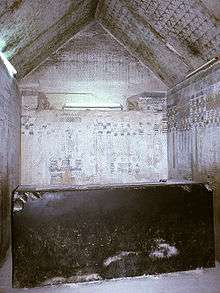
'Three and four'?

Common factors?
Osiris Unas, take the Eye of Horus, which is placed in the mouth for you!
Four idat-cakes behind you. Utterance 123: Osiris Unas, take the Eye of Horus, your cake, that you may eat! Four pat-cakes. Utterance 124: Osiris Unas, take the Eye of Horus, which he pulled out! Four pieces of roast. Utterance 125: Osiris Unas, bring to yourself these white and health teeth! Four bunches of onions. Utterance 126: Osiris Unas, take xpx [xpS ?], the Eye of Horus!
One foreleg. Utterance 127: Osiris Unas, dance! Geb did not sin against his heir who inherited!
One joint of meat. Utterance 128: Osiris Unas, take the Eye of Horus, [which you shall embrace].
One joint of sxn.w-meat. Utterance 129: Osiris Unas, takes what replaces the Eye of Horus!
One [swt-joint]. Utterance 130: Osiris Unas, take those who rebel against you!

Birds 'foot' for a 'navel'? lion cloth? Under ''ones belt''? Try ''Running the fields'' or ''Sed Jubilee'' to enlarge. And/or: The alternative name - for the Lynx constellation {now in disuse} was the Tiger - and with others it was the Little Fox with the Goose." [Page 280]. All as a means...? 'Spots and stripes'?
 To say four times: four ribs [of meat]. Utterance 131: Osiris Unas, take your assailant!
To say four times: four ribs [of meat]. Utterance 131: Osiris Unas, take your assailant!To say four times: one pot of roast. Utterance 132: Osiris Unas, take the Eye of Horus! May you go towards it! One liver. Utterance 133: Osiris Unas, take the Eye of Horus, towards which he goes!
One spleen. Utterance 134: Osiris Unas, take the Eye of Horus, which is on his brow!
One ha-meat. Utterance 135: Osiris Unas, take the Eye of Horus, which is on the brow of Seth!
Meat, forequarter. Utterance 136: Osiris Unas, take the severed heads of the Followers of Seth!
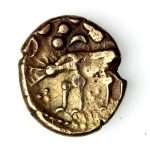 One ra-goose [sacrificed stage II]. Utterance 137: Osiris, take this heart?s desire! To say four times: one Trp-goose. Utterance 138: Osiris Unas, take the Eye of Horus, which he has brought.
One ra-goose [sacrificed stage II]. Utterance 137: Osiris, take this heart?s desire! To say four times: one Trp-goose. Utterance 138: Osiris Unas, take the Eye of Horus, which he has brought.One st-goose. Utterance 139: 86: Osiris Unas, take to you those who come being hot!
One sr-goose. Utterance 140: Osiris Unas, take the Eye of Horus! Prevent him from sickening on it! One pigeon. Utterance 141: Osiris Unas, take the Eye of Horus, which he pulled out!
One tasif-bread. [Pyramid Texts: Sarcophagus Chamber of Unas: North wall- second/ third register West - east].
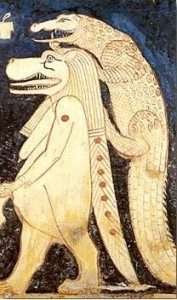 And/or: A face falls on a face, a face has seen a face. The mottled knife, black and green, went forth against it. It has swallowed that which it tasted." Utterance 229: To say the words: "This is the claw of Atum upon the dorsal vertebrae of the nHb-kA.w serpent, which stopped the strife in wnw. Fall! Glide away! Utterance 230: To say the words: "Let your two poison glands be in the ground! Let your two rows of ribs be in the hole! Pour out the liquid! The two Kites stand by [funerary role of two wailing women]. Your mouth is closed by the follower's tool. The mouth of the follower's tool is closed by the Lynx. The tired one is bitten by a serpent. 231: O Re, Unas has bitten the earth, Unas has bitten Geb, Unas has bitten the father of he who bit him.
And/or: A face falls on a face, a face has seen a face. The mottled knife, black and green, went forth against it. It has swallowed that which it tasted." Utterance 229: To say the words: "This is the claw of Atum upon the dorsal vertebrae of the nHb-kA.w serpent, which stopped the strife in wnw. Fall! Glide away! Utterance 230: To say the words: "Let your two poison glands be in the ground! Let your two rows of ribs be in the hole! Pour out the liquid! The two Kites stand by [funerary role of two wailing women]. Your mouth is closed by the follower's tool. The mouth of the follower's tool is closed by the Lynx. The tired one is bitten by a serpent. 231: O Re, Unas has bitten the earth, Unas has bitten Geb, Unas has bitten the father of he who bit him.
This is the being who has bitten Unas, Unas did not bite him. 232: It is he who comes against Unas. Unas does not go against him. The second moment later he sees Unas, the second moment later he perceives Unas. If you bite Unas, he will make you one, if you look on Unas he will make you two. 233: The male serpent is bitten by the female serpent, the female serpent is bitten by the male serpent. Heaven is enchanted, earth is enchanted, he male behind mankind is enchanted. 234: Enchanted will be the god Blind-is-his-head. You, yourself, Scorpion, will be enchanted. These are the two knots of Elephantine which are in the mouth of Osiris (Unas),
knotted for Horus over the backbone." Utterance 231: 235: Your bone is (made) into a harpoon by which you will be harpooned. Hearts are removed(?), the nomads are in the place of the spear, they are overthrown. This is the god Hemen! Utterance 232: 236: To say the words:
"mtj mtj mtj! tjw his mother, tjw his mother! mjtj mjtj! You are washed, O desert. (Let there be) Water! There is no dust!" [Sarcophagus Chamber. West Gable - north to south].
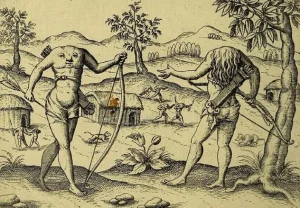
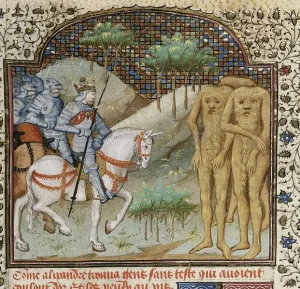 From a different perspective: "Their faces were on their chests, their name translates to chest-eyes. The early indirect reference to the Blemmyes occurs in Herodotus, “Histories”, where he calls them the akephaloi (Greek: ἀκέφαλοι “without a head”). In antiquity, the actual tribe known as the Blemmyes were said to be named eponymously after King Blemys (Βλέμυς). In various medieval sources, blemmyes are said to be six, eight, or even twelve feet tall and perhaps half as wide. Furthermore, they are often reported to be cannibals. Mela (a Roman Geographer, AD 43) was the first to name the “Blemmyae” of Africa as being headless with their face buried in their chest. Pliny the Elder in the Natural History reports the Blemmyae tribe of North Africa as “no heads, their mouths and eyes being seated in their breasts”. Pliny situates the Blemmyae somewhere in Aethiopia (in, or in the neighboring lands to Nubia).
From a different perspective: "Their faces were on their chests, their name translates to chest-eyes. The early indirect reference to the Blemmyes occurs in Herodotus, “Histories”, where he calls them the akephaloi (Greek: ἀκέφαλοι “without a head”). In antiquity, the actual tribe known as the Blemmyes were said to be named eponymously after King Blemys (Βλέμυς). In various medieval sources, blemmyes are said to be six, eight, or even twelve feet tall and perhaps half as wide. Furthermore, they are often reported to be cannibals. Mela (a Roman Geographer, AD 43) was the first to name the “Blemmyae” of Africa as being headless with their face buried in their chest. Pliny the Elder in the Natural History reports the Blemmyae tribe of North Africa as “no heads, their mouths and eyes being seated in their breasts”. Pliny situates the Blemmyae somewhere in Aethiopia (in, or in the neighboring lands to Nubia).
In the “Roman d’Alexandre en prose”, the golden-colored headless tribe encountered by Alexander measured just 6 feet tall, and had beards reaching their knees. In the French version, Alexander captures 30 of the headless to show the rest of the world, an element lacking in the Latin original. Other Alexander books that contain the headless people episode are Thomas de Kent’s romance and Jean Wauquelin’s chronicle. In AD 1211, an explorer named Fermes claimed he’d found a tribe of “men without heads, who have their eyes and mouth on their chests” living on an island in Ethiopia, adding that they were 366 centimeters (12′) tall. And 100 years later, Sir John Mandeville claimed to have seen them, too."
Side note: One common variation of “heads-down” is “head down”, which means to focus or concentrate on something without distractions. This variation is often used in work or study contexts, such as when someone needs to complete a project or assignment with minimal interruptions. Another variation is “keep your head down”, which has a similar meaning but also implies staying out of trouble or avoiding conflict. This phrase may be used in situations where someone wants to avoid getting involved in drama or controversy.
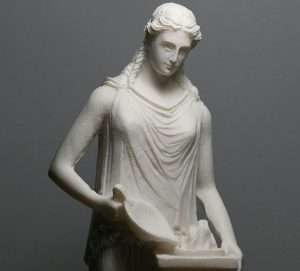
Hestia. Gravy train ? 'Station of no Station'?

Riveted chair?
And/or: '' A griddle also called a girdle, is a cooking device consisting mainly of a broad, usually flat cooking surface....Can be used for cooking pancakes and flatbreads.... Nowadays it can be either a movable metal pan- or plate-like utensil,[1] a flat heated cooking surface built into a stove or kitchen range,[2] or a compact cooking machine with its own heating system attached to an integrated griddle acting as a cooktop....The word griddle is attested in 13th-century English and it probably comes from Anglo-French gridil, which had developed over time from the Latin word craticula, 'small griddle' (craticula – graille – gredil – gridil),[1] possibly via the Latin craticulum, 'fine wickerwork'....In British English it is also called girdle...''
'Female' aspect?
UNleavened / Leavened.
'Pointy' top / Flat top as a means....?
Etruscans to enlarge.
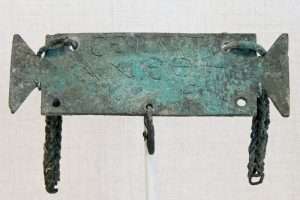
Common factors?
Working example: ''It has been established that midwinter was an important time of the year for the Stonehenge builders with ancient people bringing cows and pigs from as far afield as Scotland to take part in feasts at the site around the time of the winter solstice.

'flat'?
Archaeologists have also found evidence of the collecting and cooking of hazelnuts, sloes and crab apples and other fruit, with remnants of charred plant remains discovered at Durrington Walls, the settlement inhabited by the builders of Stonehenge in about 2500BC. They knew how to grow cereal crops, so could have made pastry out of wheat, hazelnut or acorn flour.
''English Heritage, which manages Stonehenge, concedes it is a bit of leap, but it is putting forward the festive theory that the engineers could have combined the two into a version of the mince pie, possibly baked using a flat stone or ceramic pot heated in the embers of a fire, rather like a Welsh 'cake'.'' ['The Guardian'].
''Rolling Pin'' to enlarge.
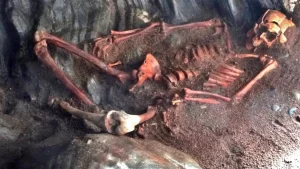
Found N/E Scotland. Large boulder/stone between the legs - as though giving birth.
Side note: ''In 1995 evidence of large-scale Mesolithic nut shelling, some 8,000 years ago, was found in a midden pit at Staosnaig {Colonsay} on the island's sheltered east coast, in a large, shallow pit full of the remains of hundreds of thousands of burned hazelnut shells. Hazelnuts have been found on other Mesolithic sites, but rarely in such quantities or concentrated in one pit. The nuts were radiocarbon dated to 7720±110 BP, which calibrates to c. 6000 BCE. Similar sites in Britain and its dependencies are known only at Farnham in Surrey and Cass ny Hawin on the Isle of Man.[8][9]
Overview: Colonsay {West Scotland} is known as the jewel of the Hebrides and with its spectacular beaches, good walks, friendly community, great food and two gin distilleries it's easy to see why. The arrival point { harbour?} is the tiny hamlet of Scalasaig with a post office, general store, café, bookshop and village hall.
This discovery gives an insight into communal activity and forward planning of the period. The nuts were harvested in a single year and pollen analysis suggests that the hazel trees were all cut down at the same time.[9] The scale of the activity, unparalleled elsewhere in Scotland, and the lack of large game on the island, suggests that Colonsay's inhabitants were largely vegetarian. The pit was originally on a beach close to the shore, and there were two smaller stone-lined pits, whose function remains obscure, a hearth, and a second cluster of pits.''
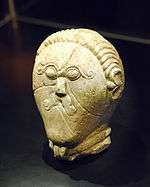
Celtic 'hero'. Twitching nose?
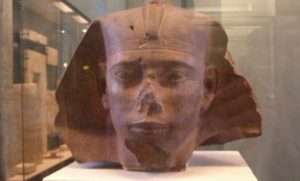
On the highest spot in Egypt. 1st to be identified with 'Son of'.
Continued: Pigs purposely brought to Durrington Wall at the Winter Solstice - from all over the British Isles - 'Feasting' took place after killing the pigs with 'bows and arrows' - in the 'ritual' sense of the word. ['The Stonehenge Enigma: What Lies Beneath'].
'Underworld' ?
Orkney to enlarge.
What animal has its nose closest to the earth?
Herd{ing} to enlarge.
And/or: Twenty very large 'pits' found that encircle {semi} both woodhenge and Durrington Walls onto the River Avon.
Upstream/Downstream as a means......?
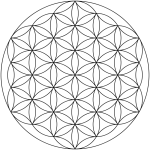
How many? Can u smell anything?

Supernova?
Continued: Baqella nifro (boiled broad beans) are eaten as a snack during some holidays and during a time of mourning. This tradition goes well into religious holidays, too. On the Thursday before Good Friday (in the Ethiopian Orthodox Church tradition, tselote hamus (the Prayer of Thursday)), people eat a different kind of nifro called gulban. Gulban is made of peeled, half beans collected and well-cooked with other grains such as wheat, peas, and chickpeas. This is done to mourn the crucifixion of Jesus Christ.
Boq'ullit (boiled, salted broad bean embryo) is one of the favorite snacks in the evening, the common story-telling time in north and central Ethiopia. It is particularly a favorite for the story-teller (usually a society elder), as it is delicious, and easy to chew and swallow.
Ripe broad beans are eaten by passers-by.
They are a gift item from a countryside relative in a period close to the Ethiopian Epiphany.
''Ethiopian epiphany is a colourful festival celebrated all over Ethiopia to commemorate the baptism of Jesus Christ by John the Baptist in the River Jordan. The commemoration starts on the eve of the main festival on 18 January. ... Hundreds of thousands participate in the actual festival on the following day – 19 January.''[Wiki].
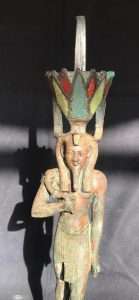

Salt-Cellar given by Bishop Fox to Corpus Christi College, Oxford.
Side note: ''The number eighteen {the 'double' nine}, which appears in pre-Columbian measures of TIME, has a certain importance in the West as well. This may be explained by the connection with the circular number 360, or possibly with an astral number, since eclipses of the sun and moon, recur in the same sequence after 18 years....In medieval Christian exegesis it is sometimes explained as the sum of 10+8, which is taken to mean the fullfilment of the Law through grace. This interpretation was taken from Luke 13:11, where it is told that Jesus healed a woman who had a spirit of infirmity for 18 years. Elsewhere, the number was taken as the product of 3x6, which represents faith in the trinity {3x3?} coordinated with pious works....More difficult to explain is the fact that 18 little barrels of salt formed 1 load in medieval, predominantly English, tradition {wagon and/or the 'Wain'?} .'' ['Mystery of Numbers' / A. Schimmel].
Pious Pelican?
Continued: "Marcus Tullius Cicero was a Roman orator, philosopher and politician who lived in the first century B.C. Apparently “Cicero” was the nickname given to one of his ancestors who had a big wart on his nose in the shape of a chickpea. This nickname, or “cognomen”, was subsequently passed on to following generations, and when Marcus Tullius started his political career he decided, against his friends’ advice, to keep it." [internet]. Try ''chickpea''.
''Cognomen'' in relation to cognitive. As a means...?
'Cognitive Behavioral Therapy: Techniques for Retraining the Brain' / J. Satterfield.

Tree of life or knowledge?
Side note: "Learning something new will help {any brain} age well...If you want to keep your brain as young as it can be, then learning something new is one of the best things you can do...It should be new and challenging, that in itself will help the brains capacity" ['How to Stay Young' /BBC1/Series 2. Episode 3].

From Giza to Saqqara?
''The term copycat (also written as copy-cat or copy cat) refers to the tendency of humans to duplicate the behaviour of others, as expressed in the saying, 'monkey see, monkey do'. The expression may have originated from observing the habits of kittens that learned by imitating the behaviour of their mother. Copycats are real. In a study published in Animal Cognition scientific journal, Claudia Fugazza—an animal behaviorist at Budapest's Eötvös Loránd University—and Fumi Higaki—a dog trainer—discovered that cats can imitate behavior. ... After 16 attempts, the cat completed the movements 80 percent of the time. So, why do cats copy human behavior? Researchers explain that a lot of people think cats are aloof but this study shows that cats are intelligent animals with long memories – and they adapt to what's going on in their surroundings.'' [Wiki].
"The crow {corvid family} is the only animal whose brain enlarges when it learns to play." ['Winter's Weirdest Events' BBC ].
The Wall of the Crow {at Giza}.
"Peering inside, I was at once heralded by an exciting flapping of wings, as the great raven Solomon { the wise} greeted me once again. How often I had wondered where this crafty bird resided when not with his master Merlyn.'' [ '21 Lessons of Merlyn: A Study in Druid Magic and Lore'].
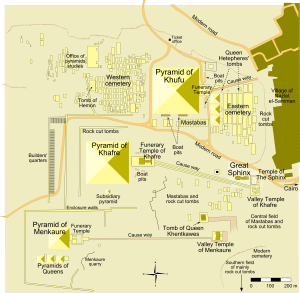
Which one is 'Master' of his house?

He is the king who introduced the royal title Sa-Rê (meaning “Son of Ra”) and the first to connect his cartouche name with the sun god Ra.
A working example: "In each operation are certain implicits. The previously held confused, and automatic intellectual concepts, those which have helped to crystallize consciousness and the emotional nature into a rigid and repressed entity, are to be broken down by a process of dissolution. The Raven must be decapitated. The root of evil, of imperfection and confusion lying latent in consciousness - that which primarily caused the inhibition of emotion, and the compulsive motivation of the mind by the repression mechanism - must be uncovered and recognized. Its clear recognition is in itself an act of destruction. For no man, unless he be psychically compelled or bound by folly and utterly without volition or common sense, will persist in a course of action which he knows will lead to his final destruction. With recognition comes an abreaction of the complex and a release of pent-up emotion and spiritual energy.
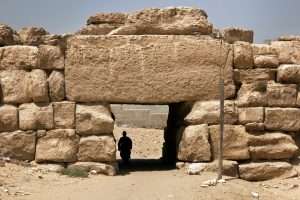
An unbelievable feat of ancient architecture, The Wall of the Crow is 656 feet long, 32 feet high and 32 feet at the base. Standing near the Sphinx, this ancient wall was constructed in the 4th Dynasty of Egypt and the true purpose still remains unknown. Question. Heaviness above, lightness below? 'Talatat' to enlarge.
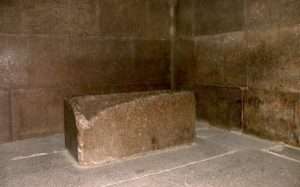
Beginning or end? North or South?
There is yet another sense in which this idea may be interpreted. As spirit is always in all systems of symbolism considered to be white in colour, pure in nature, and ubiquitous in its operation, so its opposite, the body and the personality, is symbolized by the colour black. By the decapitation of the Raven, a black bird, enjoined by Eudoxus, is meant a separation in understanding (thus the name of Alchemy, the Spagyric or separative art) of the head - the higher spiritual and intellectual principles - from the lower part of the body, the world of conflicting desires and instincts. In Splendor Solis, by Solomon Trismosin, there is a fine elaborate drawing in which is shown a raven with a black body but a white head, emphasizing this idea. It is the mystical death of the body. This can again be interpreted in the light of the quotation on a former page. That is to say, that the ancients considered two deaths to be possible. The one is the natural death which occurs to all men at the close of their particular span of life. This is involuntary and inevitable. But there is another death which the sages and saints cultivate, inasmuch as it culminates in life and in fullness of spiritual perception. This is the death induced." ['The Philosopher's Stone' / I. Regardie].
Coincidence? Or something used within a 'method'.
The 'three' eyed bird of Bran Stark? {Game of Thrones}.
''You cant kill it, you know, because the Raven is you." {Series 3. Episode 2}.

Goaty beard? End of a process? Peacock tail the beginning of another?

The city that ''strangers'' came to.
"The most beautiful thing we can experience is the mysterious. It is the source of all true art and science. He to whom the emotion is a stranger, who can no longer pause to wonder and stand wrapped in awe, is as good as dead; his eyes are closed. The insight into the mystery of life, coupled though it may be with fear, has also given rise to re-ligion. To know what is impenetrable to us really exists, manifesting itself as the highest wisdom and the most radiant beauty, which our dull faculties can comprehend only in their most primitive forms - this knowledge, this feeling is at the center of true religiousness." [Albert Einstein].
Cro-magnon man in relation to Neanderthal? Bear skulls in relation to Labyrinths? All as a means.…? Enlarged throughout.
 And/or..."People understand what 'knowledge' means. And they understand the possibility of different levels of knowledge. They understand that knowledge may be lessor or greater, that is to say, of one quality or of another quality. But they do not understand this in relation to ''being''. 'Being', for them, simply means existence to which is opposed non-existence. They do not understand that being or existence may be of very different levels and categories. Take for instance the being of a mineral and of a plant. It is a different being. The being of an animal and a man is again a different 'being'. But the being of two people can differ from one another more than the being of a mineral and of an animal. This is exactly what people do not understand. And they do not understand that knowledge depends on being. Not only do they not understand this latter but they definitely do not wish to understand it. And especially in the western culture it is considered that a man may possess great knowledge, for example he may be an able scientist, make discoveries, advance science, AND at the same time {''simultaneous'' link?} he may be, and has the right to be, a petty, egoistic, caviling, mean, envious, vain, naive, and absent-minded man. It seems to be considered here that a professor must always forget his umbrella everywhere. AND yet it is his being. And people think that his knowledge does not depend on his being. People of western culture put great emphasis on the level of a mans knowledge, but they do not value the level of a mans being and are not ashamed of the level of their own being. They do not even understand what it means. And they do not understand that a mans knowledge { ''true'' knowledge?} depends on the level of his being." ['In Search of the Miraculous'. Parenthesis/emphasis this readers].
And/or..."People understand what 'knowledge' means. And they understand the possibility of different levels of knowledge. They understand that knowledge may be lessor or greater, that is to say, of one quality or of another quality. But they do not understand this in relation to ''being''. 'Being', for them, simply means existence to which is opposed non-existence. They do not understand that being or existence may be of very different levels and categories. Take for instance the being of a mineral and of a plant. It is a different being. The being of an animal and a man is again a different 'being'. But the being of two people can differ from one another more than the being of a mineral and of an animal. This is exactly what people do not understand. And they do not understand that knowledge depends on being. Not only do they not understand this latter but they definitely do not wish to understand it. And especially in the western culture it is considered that a man may possess great knowledge, for example he may be an able scientist, make discoveries, advance science, AND at the same time {''simultaneous'' link?} he may be, and has the right to be, a petty, egoistic, caviling, mean, envious, vain, naive, and absent-minded man. It seems to be considered here that a professor must always forget his umbrella everywhere. AND yet it is his being. And people think that his knowledge does not depend on his being. People of western culture put great emphasis on the level of a mans knowledge, but they do not value the level of a mans being and are not ashamed of the level of their own being. They do not even understand what it means. And they do not understand that a mans knowledge { ''true'' knowledge?} depends on the level of his being." ['In Search of the Miraculous'. Parenthesis/emphasis this readers].
Side note: That final sentence in relation to the solution {answer} to Samson's riddle? Enlarged elsewhere.

Eyes and mouth? Any 'ears' ? Pleiades = minds eye? That ''lost'' one?

Left eye?
Analogy {i.e.,a work - or solution - in progress}: "The Bull Child, 'son of' the Moon Mother, is the 'hero' who comes to earth and shows men the way to salvation. He stands between heaven and earth {Top-down?}, for he is a man, subject to death as man is, but he is also Son of the 'virgin' moon mother, the 'eternal' and 'unborn' {see it?}. He partakes of the nature of both men and the gods. The initiate of Osiris was taught a 'word' of power to use as introduction to the world of the gods when he sought entrance there after 'death'. He was to proclaim himself Child of Earth and Starry Heaven {Bottom-up?}. Christ himself, in his mythological aspect, was such a divine son, the holy unicorn 'tamed' by the virgin and so, perhaps, transformed into Aries, the goat or, as he is more commonly known by - the lamb. In this aspect his non war like qualities are the ones that are emphasized. He is entirely docile and accepting. For the 'son of' the moon mother always accepted his fate and never resisted it even though he 'died' annually. This mildness is frequently the chief characteristic of the moon hero, as, for instance, where the hare carries this role. Because of his docility and lack of belligerence the hare is often able to find a way..." [M. Harding book. Emphasis, this readers].
"The eye with which i see 'god', and the eye with which 'god' sees me is the same eye." [Meister Eckhart].
Question. Should therefore the EXOteric equivalent of this subject {if indeed that is the case, i.e.,giving Mr Cox the benefit of the doubt} - have thrown 'eyeballs' over the rooftops?
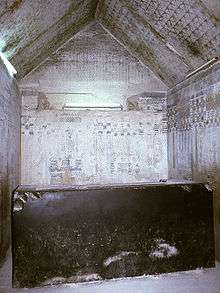
From a different perspective: ''He laboured for 21 years to decipher the 'book, and especially the 'pictures' which hid the secret of the First Matter {'upright' / vertical ones?]. Together with his wife Perrenelle, who was as eager as he was, he tried 'a thousand broileries' but with no success. In despair he embarked on a pilgrimage to St. James of Santiago....He took with him an 'extract of the pictures' for interpretation....'' [Page 431 'Mercurius' / P. Harpur].
King Unas of the fifth dynasty. On whose tomb walls were found the very first 'religious' texts...anywhere. The acclaimed Pyramid texts. That information once 'learned' is now given back to anyone who can understand it. Anyone who can 'read' it. Anyone who can 'see' it. One of the main [royal] symbols within his own cartouche was the long eared hare.
Side note: A {working?} example: ''Let us, therefore, go against [the Romans], trusting boldly to good fortune. Let us show them that we are hares and foxes trying to rule over dogs and wolves." When she [Boudica] had finished speaking, she employed a species of divination, letting a hare escape from the fold of her dress; and since it ran on what they considered the auspicious side, the whole multitude shouted with pleasure, and Boudica, raising her hand toward heaven, said: "I thank you, Andraste, and call upon you as woman speaking to woman ... I beg you for victory and preservation of liberty."

'Hare' in the Moon?
Continued: A good book with a possible explanation of why, could be 'The Leaping Hare' by G. Evans and D. Thompson i.e.,"The reading of the literature of the hare also brings up another question: why is it that the hare figures in so many divergent cultures in particular myths......an examination of those relating to the hare might well be worth while, if only for the light they might throw on the origin and structure of those myths that are linked with other animals. But before starting on our inquiry we are putting forward the hypothesis that there is much more involved than this. The hare is an archetype: that is, as the name implies,one of the original nuclei or formation-patterns of awareness that primitive man used as a tool of communication to come to terms with his environment and also with the internal environment of his instincts and feelings". [Chapter one].
Question. Why on the fifth tomb walls, and not the fourth. Considering the importance and 'magnitude' of the 'great pyramid'. Why king Unas and not Mr Khufu, or Mr Khafre or Mr Mykerinos?
Jubelo,Jubeba,Jubelum Freemasons equivalent of those once negative aspects. Jubel, Arabic for 'mountain', ['mountains' and 'valleys',[or 'quarries' and 'plateaus']... symbolic of higher/lower in its most basic physical 'representation' form, i.e.,Landscape symbolism, [explained elsewhere].
Side note: ''I met him soon after i arrived in Paris through a painter called Jean -Jacques who, heir to a fortune and title, was the leading light of our circle...'' [Page 101 'Mercurius'].
Cross and circle? 'Three and Four'?
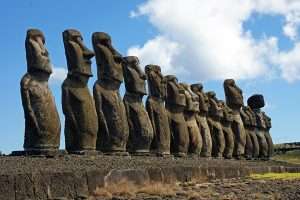
Inward or Outward?
And/or: ''Collected the Fulcanelli book today. So much of this mysterious French alchemist's history depends on the sparse testimony of the reclusive Eugene Canseliet...Fulcanelli's identity remains unknown. The name meaning 'little volcano' in Italian, is an alchemical pseudonym....A minute portion of Fulcanelli's Powder of Projection....took place at a 'gasworks' lab., at Sarcelles, in the presence of the chemist Gaston Sauvage {'lower'?} and the artist Jean-Julien Champagne {'higher'?}. The result was '100 grams of gold'.....'' [Page 317 'Mercurius'].
{J}ames the {J}ust? and/or: Pilgrimage to Santiago.
Question. {L}ucie {L}amy. Higher or lower?
 And/or: ''The alchemists describe their Art as one of 'cooking'. Their aim is simply to transform the right 'raw stuff' into the Stone by means of different degrees of 'natural fire', plus the one 'secret fire'....To know Nature herself, we must question her unconditionally, in her fullness, as the alchemist did who watched and waited....letting the secret fire gradually reveal herself....'' [Page 231/261 'Mercurius' / P. Harpur].
And/or: ''The alchemists describe their Art as one of 'cooking'. Their aim is simply to transform the right 'raw stuff' into the Stone by means of different degrees of 'natural fire', plus the one 'secret fire'....To know Nature herself, we must question her unconditionally, in her fullness, as the alchemist did who watched and waited....letting the secret fire gradually reveal herself....'' [Page 231/261 'Mercurius' / P. Harpur].
'Three parts land one water'?
Boiled or roasted?
Broad bean?

One of the daughters of Allah?
Working example: An enactment at Thebes within the Sed Festival of Amenhotep showing - monkey, pintail duck and a leaping bull calf in relation to: 'A new royal body has to be roasted and created by the female {Hathor} if the king is to be reborn again...The coming of 'gold' that reinfuses him with life and vitality, initiating him to a new shining existence at dawn.'' [Pages 27/8 'Hathor Rising' / A. Roberts].
Heart of Eleanor?
''An intellectual-sounding name of French and Greek origins, Eleanor is an English variation of the Provençal name Alienor. It means "light-hearted" or "shining light" and has been associated with successful women from the Whitehouse to the silver screen, and many places in between.''
Westward leading, still proceding, guide us to......?
'Sun' or 'moon'?

Going west?
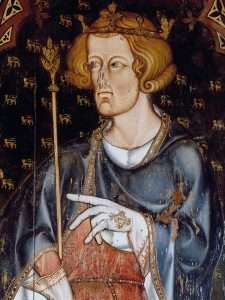
Giving directions?
And/or: ''In the early medieval era, many high-profile warriors died fighting in the crusades and needed transporting home for burial.
The bodies of German fighters were often boiled after death for several hours until the flesh separated from the bone, in a process known as excarnation. Skeletons were easier and more hygienic to transport than corpses that had begun to decompose.
English and French medieval knights preferred their bodies to be eviscerated, which is the process of removing the viscera (guts).''
''The Western Valley is also known in Arabic as the Wadi al-Gurud (the "Valley of the Monkeys"), on account of the representations of baboons in several tomb paintings found within the wadi...."Valley of the Monkeys" has two tombs, that of king Ay. KV23 and Amenhotep III KV22.  King Ay, who assumed power in mysterious. circumstances after the death of Tutankhamun.''
King Ay, who assumed power in mysterious. circumstances after the death of Tutankhamun.''
REFRESHER: 'The star of your Being is rising'? And/or: 'Dawn always begins in the BONES.'
'Twentytwo/Twentythree'?
N.B. Twentyfive monkeys in total i.e., twelve in Tutankhamuns tomb and twelve in Ay's. And ONE found with 'finger to his mouth' in the "ritual pit" found by Mr Hawass in the western branch.

Someone's pet monkey?
The term monkey came from soldiers returning from India, where the 500 rupee note had a picture of a monkey on it. They used the term monkey for 500 rupees and on returning to England the saying was converted for sterling to mean £500.
5x5=25.
'Five'.
 Continued: But that has not been taken into account, by two of Freemasons candidates, of which the originators of 'Freemasonry' most surely do know...and which each candidate has to 'work out'...is this subjects 'oral' tradition. That same subject that was passed down 'orally' before the written word came into common use. Different words make different sounds that depending on intention can begin at the back of the mouth [Greek equivalent, 'cave' [key]], and move forward to the 'opening' of same. Representing from darkness to light. Or from something 'unknown' to something now 'known', [Greek equivalent Hades in relation to Zeus. Explained elsewhere].
Continued: But that has not been taken into account, by two of Freemasons candidates, of which the originators of 'Freemasonry' most surely do know...and which each candidate has to 'work out'...is this subjects 'oral' tradition. That same subject that was passed down 'orally' before the written word came into common use. Different words make different sounds that depending on intention can begin at the back of the mouth [Greek equivalent, 'cave' [key]], and move forward to the 'opening' of same. Representing from darkness to light. Or from something 'unknown' to something now 'known', [Greek equivalent Hades in relation to Zeus. Explained elsewhere].
That link to the word 'Gnosis' [or what that word - through the course of multiple generations - came to imply ], and/or Plato's 'shadows,' [intention of].

What are the common factors?
Or as in this case from a negative into a positive in order to make the candidate aware, [known] of something. Those three negative aspects of thought/emotion/will, represented in Freemasons case by the above 'names'...that when spoken in their correct order form, [link to Plato's forms]...begin at the back of the mouth and end at its front.  Hence the reason why the same 'three'..."lament in a cavern", [link to darkness, while 'repentance' is a movement 'in the right direction', i.e., towards the light,['opening of mouth'. Link to the Egyptian equivalent of same]].
Hence the reason why the same 'three'..."lament in a cavern", [link to darkness, while 'repentance' is a movement 'in the right direction', i.e., towards the light,['opening of mouth'. Link to the Egyptian equivalent of same]].
Notation.
Finally that link to 'mountain' and 'cavern.' From bottom to top. From 'lower' to 'higher'. From negative into a positive. From shadow, [unknown] into light, [known]. All for the sake of the 'candidate', in relation to his 'understanding' by way of a 'story' of Freemasonrys true purpose, with the individual/candidate in mind.
"Another passage in the ceremony of 'opening of the mouth' is : ''The Bees, giving him protection, they make him exist.'' In the hieroglyph text there are three bees in a row....."................"When Ra weeps again, the water that flows from his eyes upon the ground, turns into working bees. They work in flowers and trees of every kind, and wax and honey come into being." Recall what three; or in this case ''triple''; in the main; is a representation of. Together with the words [keys] highlighted. All found within. [Chapter 11, 'The Sacred Bee'. Mentioned elsewhere].
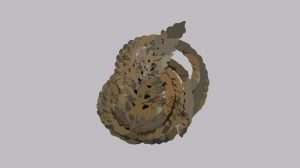 As are the "three brothers" of Christian Rosenkreutz fame "who binds unto himself"...to be faithful, diligent and secret. [Chapter thirteen, same book], i.e.,Brother G.V...Brother J.A...Brother J.O....but now in reverse to the above example, i.e.,the names when pronounced start/form at the front and finish at the back. Top down as opposed to bottom up. Something learned that is to be imparted below, [Hangman symbolism, or 'sky' re-ligion. 'Elder' relative to 'younger'. Explained elsewhere ]... in 'profile' as opposed to 'face on'. Explained elsewhere. Dry way as opposed to wet. 'Oral' representation of.
As are the "three brothers" of Christian Rosenkreutz fame "who binds unto himself"...to be faithful, diligent and secret. [Chapter thirteen, same book], i.e.,Brother G.V...Brother J.A...Brother J.O....but now in reverse to the above example, i.e.,the names when pronounced start/form at the front and finish at the back. Top down as opposed to bottom up. Something learned that is to be imparted below, [Hangman symbolism, or 'sky' re-ligion. 'Elder' relative to 'younger'. Explained elsewhere ]... in 'profile' as opposed to 'face on'. Explained elsewhere. Dry way as opposed to wet. 'Oral' representation of.
Hence the link to the 'omission' of vowels within the spoken word ,i.e., 'silent'. Something that has to be thought about...for it then 'to be' spoken. For it then to be part of the spoken word. From something 'unknown' to now 'known'. Something that was once lost, is now found?
Those names and more importantly the sounds and forms they make in such examples [in relation to 'hard c'], as the letter 'H' in both the Sumerian and Hebrew language [Page 15 'The 12th Planet'. Z. Sitchin]. Think about it relative to YHVH.
 Or Khufu/Khan/Christ and even such words as Loch or its equivalent Lake, of the same ilk. The difference being one group begins at the back and moves towards the front. The others in reverse. Think about it. Or in this case...'say' it. Try it in 'silence,' i.e.,"still waters run deep." Hear anything? If you do then attempt to understand the implications of the spelling of the word 'Afrokhans', in the book, 'The Legacy of the Black Gods' by P. Simons.
Or Khufu/Khan/Christ and even such words as Loch or its equivalent Lake, of the same ilk. The difference being one group begins at the back and moves towards the front. The others in reverse. Think about it. Or in this case...'say' it. Try it in 'silence,' i.e.,"still waters run deep." Hear anything? If you do then attempt to understand the implications of the spelling of the word 'Afrokhans', in the book, 'The Legacy of the Black Gods' by P. Simons.
Sumerian equivalent? = ''Duku'' which means holy mound. Enlarged elsewhere. Du {front of mouth?. Ku {back}. Try it.
Something to ponder on: "The term ''Celt'' did not exist in the ancient languages of the Irish, Scots and Welsh. There is only the Pictish Khaltis, most likely signifying invaders from France, Belgium, Germany, Galatia and Ulkraine. The term ''Celt'' {Keltoi} was first employed by incompetent Greek historian Herodotos..." ['The Irish Origins of Civilization' / M. Tsarion].
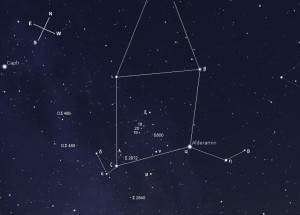
Triangle and square base? as a means? ''three and four''? Question. Benben stone?
Synchronistic {?}: Bore-hole H -8 in relation to the ''money pit''. ['Curse of Oak Island'. March 2019].

Yet another?
SIDE NOTE: "Cepheus is an inconspicuous constellation , but evidently was highly regarded in early times as the Father of the Royal family, and his story well known in Greek literature of the 5th century before Christ. The name {associated} by Brown to Khufu of Great Pyramid fame, was the source of many queer titles from errors in Arabic transcription... the stars Identified as the Fire-kindler...some of which are also seen for Bootes...Known as the Ape God when its stars were pole stars of 21000 and 19000BC...Cepheus has many 'fiery epithets' that do not seem appropriate for so faint a figure, unless originating from the fable {myth?} that the ''tables of the Sun'' {'inner' one?}, were spread in Aethiopia, the land where Cepheus reigned when on earth.
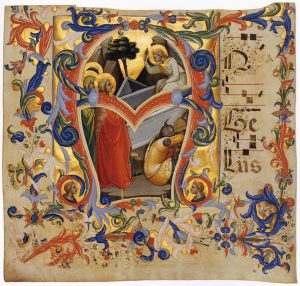
The 'three' Mary's at the tomb of Christ. Tree roots? Sarah/Kali to enlarge.
Some however, have suggested that they are from the fact that his head is surrounded and illuminated by the Milky Way, although itself is an entirely bare {'bald'?} spot in the great circle {'Ain Sof'?} of light...His head is marked by a triangle...of 4th magnitudes...also near the Knees forming an equilateral triangle with Polaris....Some see in his stars a large 'K' open towards Cassiopeia....Known in Chaldaea 23 centuries before our era - when the earthly King was recognised in that country's myth's as the Son of Belos, of whom Pliny wrote: 'Inventor hic fuit sideralis scientiae'..." [Page 155/6: 'Star Names and Their Meanings'].
''Cepheus was the King of Aethiopia. He was married to Cassiopeia and was the father of Andromeda, both of whom are immortalized as modern day constellations along with Cepheus.''
And/or: ''The Ethiopian mythical king Memnon was killed in the Trojan war.''
Side note: Coffin found at Saqqara - extra knees carved - on coffin belonging to a woman with a disability. Not the knees. ['Tomb Hunters: Mystery of the Painted Mummy'].

Spirt or soul? A pregnant PAUSE?

Same question.
A working example: ''The secret is hidden not in the top but in the roots of the tree....The roots extend into the inorganic realm {bacteria/fungi?}, into the mineral kingdom. In psychological terms, this would mean that the self has its roots in the body, indeed in the body's chemical elements.'' ['Alchemical Studies' / C. G. Jung].
And/or: ''The spirit hidden in the roots is like a spirit {'mercurius'} sealed inside a bottle....which is like the numen of the tree....As the life principle of the tree, it is a sort of spiritual quintessence abstracted from it....The tree would then be the outward and visible sign of the realization of the self....According to the same source, Christ himself is this 'tree' i.e., ''Behold in the Father the root, in the Son the branch, and in the Spirit the fruit: for the substance in the three is one.'' [Page 195/6 'Alchemical Studies'].

Book {'catalogue'} = remedy?
And/or: ''A weakling babe, a greybeard old, surnamed the Dragon me they hold, in darkest dungeon lanquishing that i may be reborn a 'king'. A fiery sword makes me to smart. Death gnaws my flesh and bones apart. My soul and spirt fast are sinking, and leave a poison, black and stinking. To a black crow am i a kin, such be the wages of all sin. In deepest dust i lie alone, O that the THREE would make the ONE! O soul, O spirit with me stay, that i may greet the light of day. HERO of peace, come forth from me, whom the whole world would like to see.'' [Page 228/9 ].

'Mercury', 'Sulphur' and 'Salt'. Which and why?
And/or, something hinted at {as a means...?}: ''The number seven, or the septenary, is the sacred number of all theogonies and all symbols, because it is composed of the triad and the tetrad....The number seven can be thought of as a combination of the pyramid and the 'cross' and/or the alchemical symbol for Sulphur {i.e., a 'triangle' on top of a 'cross'}. What I would have you notice particularly about this sign which we use as a symbol of 'Self-consciousness', is that when it is carefully drawn, all the lines composing it are of equal length. Thus it is a figure composed of FIVE equal lines, and it is one of those universal pentacles, or sacred figures, which have come down to us as emblems of the Life-Power {''bit''?} and its laws. For the sign of alchemical Sulphur is a unity, as a sign. Yet this one is also 'three' {the triangle}, and 'four' {the cross}, and 'five' because it is made of five equal lines. Hence it is a sign which corresponds to the alchemical definition of the First Matter, concerning which it is written: It is One, which is also Three, and Four and Five. The same number appears in the construction of the Great Pyramid. Its base being a square {four}. The lines which bound it meet at five points, and the base and sides make five FACES. All within triangles...." [Pages 37/8 'Occult Fundamentals and Spiritual Unfoldment'].
Question. What {who?} would represent 'subconsciousness'?
 Continued: "How might we interpret these strange ideograms in use among the Gobekli builders so soon after the end of the last ice age? Let's start with the 'H' glyph. Searching the archives of prehistoric symbolism throws up very little. They could be shields made of animal hide, as examples in prehistoric art do occasionally resemble the letter H. Yet if so, why do they appear so many times on the same pillar? Also apparent is that the H character resembles two letter T's joined stem to stem. It is an association that might not be without meaning, especially in view of the general appearance of the T-shaped pillars..." [From the book by A. Collins].
Continued: "How might we interpret these strange ideograms in use among the Gobekli builders so soon after the end of the last ice age? Let's start with the 'H' glyph. Searching the archives of prehistoric symbolism throws up very little. They could be shields made of animal hide, as examples in prehistoric art do occasionally resemble the letter H. Yet if so, why do they appear so many times on the same pillar? Also apparent is that the H character resembles two letter T's joined stem to stem. It is an association that might not be without meaning, especially in view of the general appearance of the T-shaped pillars..." [From the book by A. Collins].
Question. When all the available information is assessed what do you think? i.e.,within a stylized 'belt' {or 'girdle'?} - right 'side'? The buckle {'open/close'?} of which - in the form of a U-shape. Enlarged elsewhere. Question. Any 'glyph' on the left side?
"A clue to this mystery lies in the fact that at least half of the standing pillars ...{same book].
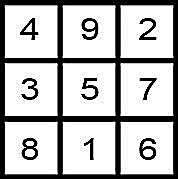 A change of pace...In number symbolism, fifteen,[12+3] represents the start of a possible journey i.e.,unconscious/unknown 'start' point. Think about it...in relation... to the symbolism of 'twelve' and its possible outcome. Together with 'three' symbolism taken together...with the result of that same possibility...which could be either a positive or a negative. Lower -higher. Or higher-lower. Seventeen its 'conscious' start point. Hence the link to the origins/birth/start point of; amongst other things; the Freemasons Grand Lodge order in 1717.
A change of pace...In number symbolism, fifteen,[12+3] represents the start of a possible journey i.e.,unconscious/unknown 'start' point. Think about it...in relation... to the symbolism of 'twelve' and its possible outcome. Together with 'three' symbolism taken together...with the result of that same possibility...which could be either a positive or a negative. Lower -higher. Or higher-lower. Seventeen its 'conscious' start point. Hence the link to the origins/birth/start point of; amongst other things; the Freemasons Grand Lodge order in 1717.
'A Treatise on White Magic' or 'The Way of the Disciple' by A. Bailey...i.e.,fifteen 'stages' from beginning to end. Or the sixteen steps that lead down to the tomb of the 'Golden Child' and therefore those same steps that can lead upwards - towards the 'light'.
That ''awakening'' of something - The symbol of which became the 15th Nome of Egypt.
The zenith of Lunar power?

The Short Way?
Something hinted at: "Our adept means hear to speak of the first sulphur, which is the gold of the sages, the green, unripe fruit of the tree of knowledge. While the Latin phrase betrays some disappointment relative to a normal result, which many would like very much to obtain, it is because by means of this 'sulphur' the transmutation can no longer be hoped for. Indeed the philosophical gold, is not the 'stone', and Philalethes carefully warns the student that it is only its first matter. And since this sulphur principle, according to the same author, requires an uninterrupted work of approximately one hundred and fifty days, it is logical to think that such a result could not satisfy the artist who anticipated reaching the 'elixir' in one bound, as it can happen in the short way." [Page 340 'The Dwellings of the Philosopher' / Fulcanelli].
''A song of steps, from the depths I call you O god {YHVH}.'' [King David].

Double vision?
"Fifteen represents the zenith of 'lunar' power, and its relation to the moon can be deduced from the name of an old German measure called Mandel, - 'a little moon, part of a moon', which consisted of 15 items such as..." [Taken from the book 'Mystery of Numbers'. Mentioned elsewhere].
"The 15 also has an important mathematical and religious meaning as the sum of the first 5 integers as well as the product of two sacred numbers, that is 3x5." [Same book].
Question. What would the zenith of 'Solar' power be represented by?
The author of 'The Experience of Eternity' defines the same as the 'Great Experience'.
The legend of Beowulf another good example. The ‘Dragon’ slayer, i.e., ’Higher’ overcoming ‘Lower’, [ Dragon / serpent. One of the same thing...in the sense that is, of both being opposing ends, on the same 'pole'. The tail end of something and the beginning of something else.
That final destination; as mentioned; represented in [A] In the form of a pilgrimage. Or implied symbolically in those most famous and frequently used three words...The holy grail. Which has a certain logic to it when thought about. After all the available information is assessed. An intuitive one,i.e.,as an example...
"The holy grail was presented in oral form on mount Sinai and in written form by Rabbi Shimon. No one has ever made an attempt to alter the Zohar itself."[Introduction by Rav Berg to the Zohar. Volume one,unabridged edition, English translation]. All as a representation of something.
Also represented by the ‘Apprentice’ column in Rosslyns Chapel or Horus of Egyptian lore to name but a few. All esoteric lore have the Apprentice / Adept relationship. Gnosticism no different,as explained throughout in such well researched books as ' The Master Game'. Mentioned elsewhere. Normally represented within the lesser / higher divisions in the so called ‘Mystery clubs'.
The Great pyramid strangely has both ‘divisions’ within it. Up to the ‘Great Step’ equates to the ‘Lesser’, [ A-B / or single –double uraeus ]. Beyond the Great Step relates to the ‘Greater’, [ B-C ]. Hence the reason that the "shaft" in the 'lower' half = "incomplete". As opposed to the one in the 'higher' half. [i.e.,partial knowledge in relation to a 'completion'. In 'profile' as opposed to 'face on'. Something 'unknown' in relation to something now 'known' ].
"Dominique paused and cast a profound look at his audience. 'How can i make you experience this subtle moment of tension which is the great step between the psychic and the spiritual..." ['Journey into the Light']. Try ''great step''.
Onehundred and sixtyfour?
'Rabbit' to enlarge.
A working example {and/or refresher}: ''When i was a better churchman i used to think of it as the Holy Ghost; now i think of him as Mercurius. But i also think of her - especially when i lean my back against the Blind Dancer {Intihuatana Stone?} and watch the spring perform her annual transformation - as the Immagination of Nature.'' [Page 305 'Mercurius' / P. Harpur].
2:2 to enlarge
 Or as mentioned/speculated in chapter fifteen of .'The Master Game' in relation to chapter one of the Sepher Yetzirah [Hebrew tree of life]..."it is stated that 'ten' are the numbers of the ineffable Sephiroth, ten not nine, ten not eleven. Learn this wisdom and be wise in the understanding of it; investigate these numbers and draw knowledge from them; fix the design in its purity, and pass from it to its creator seated on the throne".
Or as mentioned/speculated in chapter fifteen of .'The Master Game' in relation to chapter one of the Sepher Yetzirah [Hebrew tree of life]..."it is stated that 'ten' are the numbers of the ineffable Sephiroth, ten not nine, ten not eleven. Learn this wisdom and be wise in the understanding of it; investigate these numbers and draw knowledge from them; fix the design in its purity, and pass from it to its creator seated on the throne".
If ten or multiples of [see below] equates to the 'Great Step', think about it in relation to 'nine' and 'eleven'. From something unknown to something now known, before 'moving on'., in relation to an 'individual effort', represented by that effort to 'climb' progress onto [by way of] that 'great step' in order to look back and evaluate [in hindsight], before deciding/understanding how to progress further...in order to be 'seated on ones own throne'...represented in the Egyptian example as... the 'Kings' chamber. Think about it, in relation to higher/lower, together with the Egyptian 'goddess' Seshat, and 'her' relationship with the number ten, [www.recoveredscience.com].

'Eight' pyramids built from Djoser to Djedefre. Khufu =Fifth. THEN Djedfere {'six'} THEN BACK TO Khafre {'seven'}. Menkuare = eighth {i.e., the 'offset' one}. Question. Was the concept of Orions BELT made before or after the pyramid built on the HIGHEST spot in Egypt?
"Abu Hurayrah related that the messenger of god is reported to have said, "In the times of which you are living, anyone who abandons a tenth of what he is commanded will perish; but a time is coming when anyone who does a tenth of what he is commanded will be saved." [Tirmidhi]. Taken from 'The Book of Hadith'. Mentioned elsewhere.
"The number ten in ancient Egypt was concerned with the process of delimiting and was a basis of common measurement...our own mathematical system is derived from this scheme. Hieroglyphic notation of numbers was decimal, rendered in multiples of ten, followed by single units to denote parts of a tenth. And multiples of ten...30, 60, 110...stood for the essential cycles in nature and human life. Ten units of measures represented the manifestations or existence of a temporal principle." [Chapter two, 'The Sacred Tradition of Ancient Egypt'].
10000

The Zodiac man. Lower in relation to higher. Representation of. [ in that inner sense ]. All cultures apply the same principles, to the same ends. Alpha / Omega. Question. Myth or fairy story or something else? Why go to all this effort?
"The zodiac is a 360 degree circular path [called the ''ecliptic'' in astronomy] over which the planets inscribe a continual path as they revolve around the sun. In our era it is distinguished by 12 divisions of stars [constellations] associated with the Greek and Roman mythology. The Egyptians divided their zodiac into 36 sectors, referred to by the Greeks as dekanoi [singular dekan, a ''tenth'' or ''unit of ten''].
"As seen from a different perspective: "The British Druids were connected, through the distribution of the Celtic peoples, with the Trotten mysteries of northern Europe. The northern mysteries shared with those of other parts of the world, especially Egypt, a certain characteristics, which was based on a universal principle. It is this: All the ancient wisdom regarding the twelve encircling constellations of the zodiac are as spiritual powers, groups of creator beings {aspects of?} - who worked formatively upon the whole structure of man's body, and upon the capacities {senses} to which this structure belongs. The ancients recognised twelve parts of the body, and - not all of them clearly - twelve senses {'seven' above; 'five' below. Enlarged elsewhere}...It is the principle of the archetypes of all things. And it is the principle upon which the foundations of the 'New Jerusalem' are built." ['The Flaming Door'].
''Great Step'' and all the above {as seen from a different perspective}: "The extract quoted a little way back about the music of the sphere's may be taken as an illustration of the mystical experience of an initiated Bard; but let us imagine further that the Bard felt that he himself - as a copy in miniature of the whole living starry system - was the one who, looking back from the heights upon the great 'cosmic instrument' in its 'twelve' and 'seven' fold order, played upon it and extracted its melodies and harmonies. It was not his own lower personality that could command this heavenly 'music', but his Higher Self; and the name for this higher self, identified with divinity, was IAU, called the ''Younger''. In oriental mysticism, presented in a certain poetical form in the stanzas of Dzyan, we read: 'Behold, O Lanoo, the Radiant Child of the Two, the unparalleled refulgent glory, Bright Space, son of Dark Space, who emerges from the depths of the Great Dark Waters! It is OEAOHOO the Younger. He shines forth as the Sun. He is the blazing divine Dragon of Wisdom' {or serpent?}...The idea that this being IAU is the ''Younger'' will remind readers of the Dionysos myth. IAU is the re-born Dionysos..." ['The Flaming Door'].
''Younger'' in relation to Menkaure. Question. Could the Giza complex have been built in stages? i.e., Menkaure/Djedfre {'younger/elder'}. Recall the ''attributes'' given to the ''name'' of Menkaure relative to the others. Positive /Negative. Enlarged elsewhere. Understanding subject material {parts within the whole} gives that hypothesis - credibility.
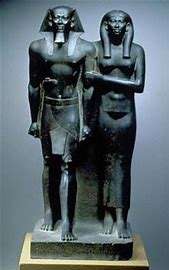
Wednesday's Child?
Something to ponder on: ''So the poetic answer to Job's poetic question: 'Where shall wisdom be found and where is the place of understanding?'' Which his respect for Jehovah the All-wise prevented him from facing is: 'Under the apple tree, by pure meditation, on a Friday evening, in the season of apples, when the moon is full.' But the finder will be Wednesday's child.'' IN RELATION TO:
SUN = Sunday = Birch {or Broom} = {B}. MOON = Monday = Willow = {S}. MARS = Tuesday = Holly/Kerm-oak = {T}. MERCURY {Mercurius} = Wednesday = Hazel/Almond {or Ash} = {C}. JUPITER = Thursday = Oak/Terebinth = {D}. VENUS = Friday = Apple/Quince = {Q}. SATURN = Saturday = Alder/Pomegranate = {F}.

Flat top? Question. Who first witnessed the 'resurrection'?
A work in progress: "The expression 'God the Father' had never been revealed to anyone. When Moses himself asked god who he was, he heard another name {"I am"?}. The 'Fathers name' has been revealed to us in the Son. For the name 'Son' implies the name 'Father'. How do we know the father? Again, by looking at the son....
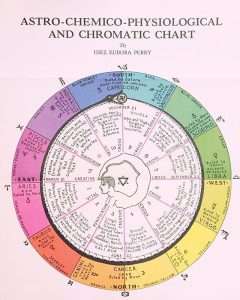
The phrase “hot on the heels” means in close pursuit of someone or something, or immediately after some event. It originates from hunting terminology, where the “on the heels” part refers to a hunter’s literal closeness behind their quarry. The word “hot” alludes to the warmth of an active living creature, as opposed to the cold of a corpse or the unconsciousness of being “out cold”. When hounds are close to their prey, they are said to be “in hot pursuit.”
And here, just like any other church, there are symbols of the Holy Spirit, because its the spirit himself who helps us, who fills us with the grace to recognize god, to see the father in the son. You see around this rock, different images of birds, of which the Holy Spirit is often made in the image of a dove. But these birds are of a different type especially the silver one - it is a hunted bird. He has been hunted, sacrificed. And that is exactly the soul of the son. And these two smaller birds that are around the cup or chalice - is the Will that Jesus is going to drink. The Will of HIS father.....
Refresher: "You have three guesses: why does the proverb say ''Good things come in threes'', and why does the psychologist think that 3 restores the damaged 2 caused by dividing? The reason , as Ludwig Paneth has stated, is that the triad leads to a new integration, one that does not negate the duality preceding it but rather, overcomes it, just as the child is a binding element that unites the male and female partner." [from the chapter: The Embracing Synthesis {3} / 'Mystery of Numbers' / Annemarie Schimmel].
'HOT-CROSS BUN',
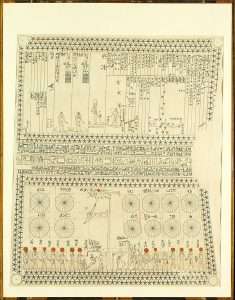
Astro ceiling in Senenmut bare tomb chamber. 'Folded'?
And/or: The ankh is sometimes seen as a sandal with a toe strap. For not only does the pun {sacred ones?} apply that the sandal cares for the comfort of the sole i.e., soul {where no foot may tread?}....The Egyptian word ankh is from the Old Egyptian hnk, meaning 'narrow' / 'embrace' / 'strangle' - a reminder of birth into life - suggesting something that binds. A contemporary symbol would be a wedding ring. Eliade points out that ankh may be derived from Sumerian An, meaning 'Sky' and 'Ki' meaning 'Earth' - born out of the Great Mother, Chaos....Originally 'close together' {no space between}...First offspring forces 'them apart' {light i.e., luminosity and/or numinosity} - only in this 'created space' {''being''?} can naming of the various parts of the world be carried out {'fifteen'?}.'' [Pages 220/294 'Fruits of the Moon Tree' / A. Bleakley].
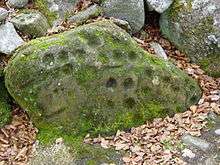
Cup marks.
Continued: "As it says in in the First Letter of John - our Fellowship is with the Father and Son. We are stepping into the trinity. The most common practice of prayer is in Gethsemane and that is Adoration every Thursday...The holy hour. 'Father' means being re-born to eternal life in the holy hour {"our joy may be made complete"}...The guardian will sprinkle this rock within the {'Church of Nations'} with rose petals like that blood that fell from the brow of Christ...The Father {in part} has adopted us as sons and daughters ....through the BODY of Christ." [Day 37 {'thirtyseven'} Pilgrimage of Prayer: Church of Nations: Lent 2024]
KA / Doppelganger?
"Not out but through."
'The rose that blooms at the centre of the cross'.
The Church of All Nations, also known as the Church of Gethsemane [1] or the Basilica of the Agony, is a Roman Catholic church located on the Mount of Olives in East Jerusalem, next to the Garden of Gethsemane. It enshrines a section of bedrock where Jesus is said to have prayed before his arrest. (Mark 14:32–42
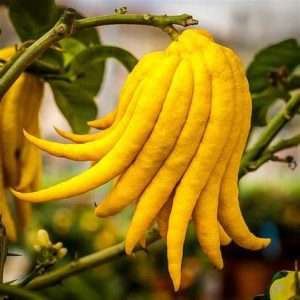
Citrus medica var. sarcodactylis, or the fingered citron, is an unusually-shaped citron variety whose fruit is segmented into finger-like sections, resembling those seen on representations of the Buddha. It is called Buddha's hand in many languages including English, Chinese, Japanese, Korean, Vietnamese, and French.
And/or: "Mardi Gras (UK: /ˌmɑːrdi ˈɡrɑː/, US: /ˈmɑːrdi ɡrɑː/;[1][2] also known as Shrove Tuesday) is the final day of Carnival or Shrovetide before Ash Wednesday.[3] Mardi Gras is French for "Fat Tuesday", reflecting the practice of the last night of consuming rich, fatty foods in preparation for the fasting season of Lent.
Related popular practices are associated with Carnival celebrations before the fasting and religious obligations associated with the penitential season of Lent. In countries such as the United Kingdom, Mardi Gras is more usually known as Pancake Day or (traditionally) Shrove Tuesday, derived from the word shrive, meaning "to administer the sacrament of confession to; to absolve"...
 The festival season varies from city to city, as some traditions, such as the one in New Orleans, Louisiana, consider Mardi Gras to stretch the entire period from Twelfth Night (the last night of Christmas which begins Epiphany) to Ash Wednesday.[5][6] Others treat the final three-day period before Ash Wednesday as the Mardi Gras.
The festival season varies from city to city, as some traditions, such as the one in New Orleans, Louisiana, consider Mardi Gras to stretch the entire period from Twelfth Night (the last night of Christmas which begins Epiphany) to Ash Wednesday.[5][6] Others treat the final three-day period before Ash Wednesday as the Mardi Gras.
The three-day Carnival of Binche, near Mons, is one of the best known in Belgium. It takes place around Shrove Tuesday (or Mardi Gras) just before Lent. Performers known as Gilles wear elaborate costumes in the national colours of red, black and yellow. During the parade, they throw oranges at the crowd.[9] In 2003, it was recognized by UNESCO as one of the Masterpieces of the Oral and Intangible Heritage of Humanity....In the Czech Republic, it is a folk tradition to celebrate Mardi Gras, which is called Masopust (meat-fast, i.e. beginning of the fast there). There are celebrations in many places including Prague,[11] but the tradition also prevails in villages such as Staré Hamry, whose door-to-door processions made it to the UNESCO World Intangible Cultural Heritage List.....

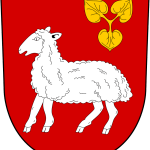 The name Staré Hamry literally means "old hammer mills" and refers to the hammer mills which were here in the 17th century. It was initially called only Hamry, the attribute Staré was added later after hammer mills in Baška ("new hammer mills") were founded.....Baška (Polish: Baszka) is a municipality and village in Frýdek-Místek District in the Moravian-Silesian Region of the Czech Republic. It has about 4,000 inhabitants....The name is probably derived from personal name Baška. According to less probable theories, the name is derived from the folk name for the sheeps that were bred here."
The name Staré Hamry literally means "old hammer mills" and refers to the hammer mills which were here in the 17th century. It was initially called only Hamry, the attribute Staré was added later after hammer mills in Baška ("new hammer mills") were founded.....Baška (Polish: Baszka) is a municipality and village in Frýdek-Místek District in the Moravian-Silesian Region of the Czech Republic. It has about 4,000 inhabitants....The name is probably derived from personal name Baška. According to less probable theories, the name is derived from the folk name for the sheeps that were bred here."
Sheep decans.
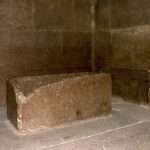 Side note: ''The catkins found on the hazel tree is called Lamb's Tail.'' ['The Chase'].
Side note: ''The catkins found on the hazel tree is called Lamb's Tail.'' ['The Chase'].
And/or: ''Morticia is the mother of Wednesday in the Addams Family TV series.'' ['The Chase'].
Refresher: ''The green triangle in a box/tin of Quality Street has hazelnut in it.''
'Green gold'?
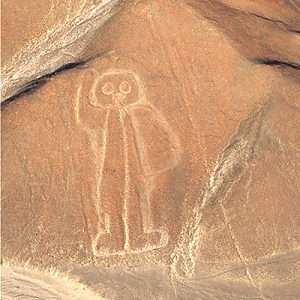
And/or: ''In the Mr Men characters, it is Mr Clever who wears a green hat with glasses.''
''Spectacles'' to enlarge.
And/or: ''Binoculars comes from the Latin for having two eyes.''
Side note: ''The 2023 Masters Par 3 Contest will be held on Wednesday, April 5, starting at noon. Live streaming video coverage will be available on Masters.com at 2:00 p.m.
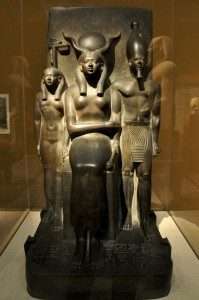
Menkaure = Wednesdays child.
Of all the traditions at the Masters, none is more endearing than the annual Par 3 Contest. This beloved event, held on Wednesday of Tournament week and now televised around the world, is above all a family affair. Wives and girlfriends, children and grandchildren, nieces and nephews-all happily serve as caddies. The sight of toddlers, outfitted in miniature Augusta National jumpsuits, toting a light bag or tending a flagstick more than twice their height brings smiles to onlookers near and far.
Part competition, part stress relief on the eve of the crucible that is competing at the Masters, the Par 3 Contest dates back more than half a century. The inaugural exhibition was held in 1960 and won by Sam Snead (who would win again in 1974, one month shy of his 62nd birthday). The varied field consists of Tournament participants and noncompeting past champions. Together they wind their way around a short, nine-hole layout nestled in the northeast corner of the Augusta National grounds. The holes, ranging from 70 to 140 yards, play over DeSoto Springs Pond and Ike's Pond. There have been 102 holes-in-one made over the years, including a record nine in 2016.
The original idea for the Par 3 Contest came from Augusta National Chairman Clifford Roberts. He conceived of it as a potentially distinctive pre-Tournament attraction, but not everyone shared his vision. Roberts had to overcome resistance from within the ranks of the Club's members, some of whom derided the notion of a "Tom Thumb course." Little did they know what a cherished tradition the Par 3 Contest would one day become.''
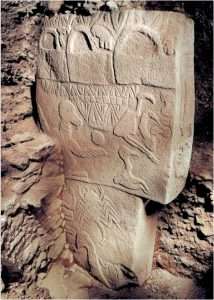
Bag? Cranes chickens or storks?

From a different perspective {Macro?}: "The Met's collection of ancient Egyptian art consists of approximately twentysix thousand objects of artistic, historical and cultural importance, dating from the Paleolithic to the Roman period."
Continued: Woden's day is wednesday, the MIDDLE day, where both sides of the week can be spanned or viewed {'Janus'?}....Odin moves with ease between Upperworld and Underworld {higher/lower?} - so the traditional half day closing in England is Wednesday {'three and a half'?}.....Half in half out....Odin rules all scripts, runes, hieroglyphs, alphabets - soul language or psyche's tongue; both metaphor and symbol...In European mysteries, Thoth is an Ibis headed scribe in the 'underworld', recording the judgements passed by Maat {Truth} as souls are weighed against a feather. In European mysteries, Odin's languages are bound up in a bag made from the skin of a crane {'Stork'?}....In Irish myth this BAG is kept by the son of the sea god Lir {Poseidon?}....''
And/or: "In Oxfordshire the largest Anglo-Saxon great feasting hall {longhouse} to be found so far in Britain. Built around the time of Sutton Hoo. A little over 30 meters long and just under 11 meters wide. The height unknown but it had to have the space for a three and a half meter suspension chain that was hung from the crossbeams over and above the fire for the bronze cauldron. Which we know about because of Sutton Hoo."
"Iron chain, consisting of twelve or more lengths of corroded iron. The pieces are straight but looped around each other; there are also twisted pieces of metal fastened to flat plates. This chain was used in the suspension of cauldron 1939,1010.113."

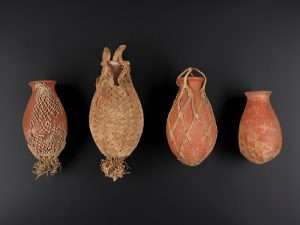
And/or: "8th-10th century AD. A bronze vessel and suspension chain comprising: a sheet bronze container or cauldron formed from three separate rivetted panels, waisted profile with rolled rim, domed base, tinned interior, one circumferential and two vertical reinforcing bands at the joints, applied iron plates beneath the rim on each side each with a median iron hoop projecting above the rim, flat-section curved handle with returned and scrolled ends; the suspension chain of twentysix iron links, each waisted in profile and twisted, a flat-section hook, two decorative lower distributors with two links between, flat-section suspension hook with bull-head finial and lateral twisted bars, additional meat-hook or suspension hook with three spurs, twisted ring. See Carver, M. Sutton Hoo. A Seventh Century Princely Burial Ground and its Context, London, 2005 for discussion. 4.5 kg total, chain: 248cm overall, cauldron: 29cm at the handle (11 1/2 - 97 1/2"). From the family collection of a London gentleman; formed in the late 1940s-1950s; thence by descent. There are parallels for the bronze cauldron from across northern Europe, most notably from the 7th century ship burial in Mound 1 at Sutton Hoo, Suffolk, England (Carver, 2005"). The waisted profile of the present piece is unusual for such a vessel, but the rounded underside is a common feature. The chain is an elaborate item, again similar to the example from Sutton Hoo although shorter."
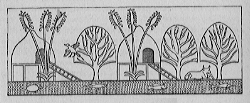
'Reed' huts? Thatched?

Wednesday's child.
A work in progress: ''One evening i sat on a low rock and watched the sun set behind the pyramids at Giza....As i left the plateau in dusky light, i caught a glipse of the moon over my 'shoulder'. A breeze kicked up and blew sand into my face. Worse than feeling like a fool, i felt like a tourist, 'foreign' in a place that i longed for as Home. On the evening train from Cairo to Luxor, i met a 'young man' who told me that the day before he had climbed the pyramid of Menkaure at sunrise. He had bribed the guard with a 'five' hundred dollar bill...Where i wonder were the miracles for which Egypt is legendary....Stories of the making of labyrinths and the mysteries of initiations...One of the more intriging stories is about the singing Colossus of Memnon {made of 'Quartz'} - one of a pair of statues that rise sixty feet above the plain of West Thebes {'overlook'?}. Both represent Amenhotep III. After they were shattered by an earthquake in 27AD - the 'southern' one was said to emit a three musical note at 'dawn' - one note each hour; variously described as plaintive singing, the blowing of a trumpet {'rooster'?}, and the striking of a gong {'bells'?}....The Romans gave it the title of oracle and was said to signify Memnon greeting his mother, the dawn....I woke before sunrise {heliacal?} on the train the next morning. Before dawn the plains of Qena seemed GREY and lifeless, but at the moment the sun crested {Kingfisher?}, the world filled with colour. Green fields lay in even squares {'sixtyfour'?} as donkeys grazed under the date palms clustered around the mud brick and thatched houses....In the foreground, the upper most fronds of 'palm trees' waved like hands, grasping wind, catching light. Three white cranes, swooped one at a time over the green fields of Qena.'' [Page 30/31 'Dreams of Isis: A Womans Spiritual Sojourn' / N. Ellis].
'Wattle and daub'.

Folded or UNfolded?
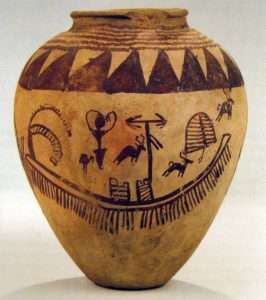
Palm fronds? Edge of a forest? Heading north? Question. Fire and water symbol. Which and why? Little and large?
Analogy: ''At the age of 'six' or 'seven' Gadadhar had his first experience of spiritual ecstasy. One day in June or July {'solstice'?}, when he was walking along a narrow path between paddy-fields, eating the puffed rice he carried in a basket, he looked up at the sky and saw a beautiful dark thundercloud. As it spread, rapidly enveloping the whole sky, a flight of snow white cranes passed in front of it. The beauty of the contrast overwhelmed the boy. He fell to the ground unconscious. Some villagers found him and carried him home. He said later that in that state he had experienced an indescribable joy.'' [Page 4 'The Gospel of Sri Ramakrishna'].
Place of Rowing?
Gebel el Silsila to enlarge.
Side note: ''El-Gabal el-Ahmar (Arabic: الجبل الأحمر) is located today within the boundaries of modern-day Cairo, in the area of Nasr City. The name means "The Red Hill". The site was in full production in the times of Akhenaton, Amenhophis III, Tutankhamon and Ramses III. The quarry was directed by Huy also known as "Chief of the King's Works" and also by Hori.
The famous Colossi of Memnon are made from blocks of quartzite sandstone probably quarried at El-Gabal el-Ahmar.''
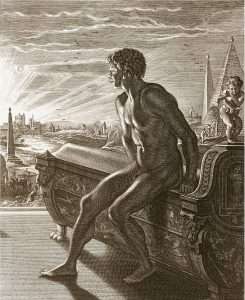
Memnon. Heliopolis/Karnac? Death-Rebirth?
Continued: ''In Greek mythology, Memnon (/ˈmɛmnən/; Ancient Greek: Μέμνων means 'resolute'[1]) was a king of Aethiopia and son of Tithonus and Eos. As a warrior he was considered to be almost Achilles' equal in skill. During the Trojan War, he brought an army to Troy's defense and killed Antilochus, Nestor's son, during a fierce battle....According to Manetho Memnon and the 8th Pharaoh of the 18th dynasty Amenophis was one and the same king.''
'Station of No Station'?

Three Cranes? 'V' formation?
And/or..."You may care to dwell upon the parable which indicates that 'God' is not to be found in the strong wind nor the earthquake, nor in the fire but only within the silence of the still small voice." [From the book 'The Silent Road'. Mentioned elsewhere].
'Singing' voice?
''Little'' to enlarge.
Side note: His name in Greek, Ἀγαμέμνων, means "very steadfast", "unbowed" or "resolute".[3] The word comes from *Ἀγαμέδμων (*Agamédmōn) from ἄγαν, "very much" and μέδομαι, "think on"....On the account of Dares the Phrygian, Agamemnon was described as ". . ...blond, large, and powerful. He was eloquent, wise, and noble, a man richly endowed.''
The word "moustache" is French, and is derived from the Italian mustaccio (14th century), dialectal mo staccio (16th century), from Medieval Latin mustacchium (eighth century), Medieval Greek μουστάκιον (moustakion), attested in the ninth century, which ultimately originates as a diminutive of Hellenistic Greek μύσταξ (mustax, mustak-), meaning "upper lip" or "facial hair",[3] probably derived from Hellenistic Greek μύλλον (mullon), "lip".[4][5]
staccio (16th century), from Medieval Latin mustacchium (eighth century), Medieval Greek μουστάκιον (moustakion), attested in the ninth century, which ultimately originates as a diminutive of Hellenistic Greek μύσταξ (mustax, mustak-), meaning "upper lip" or "facial hair",[3] probably derived from Hellenistic Greek μύλλον (mullon), "lip".[4][5]
An individual wearing a moustache is said to be "moustached" or "moustachioed" (the latter often referring to a particularly large or bushy moustache).
Research done on this subject has noticed that the prevalence of moustaches and facial hair in general rise and fall according to the saturation of the marriage market.[6] Thus, the density and thickness of the moustache or beard may help to convey androgen levels or age.[7]
The Gauls are tall of body with rippling muscles and white of skin and their hair is blond, and not only naturally so for they also make it their practice by artificial means to increase the distinguishing colour which nature has given it. For they are always washing their hair in limewater and they pull it back from the forehead to the nape of the neck, with the result that their appearance is like that of Satyrs and Pans since the treatment of their hair makes it so heavy and coarse that it differs in no respect from the mane of horses. Some of them shave the beard but others let it grow a little; and the nobles shave their cheeks but they let the moustache grow until it covers the mouth.''
And/or: ''Staccato ([stakˈkaːto]; Italian for "detached") is a form of musical articulation. In modern notation, it signifies a note of shortened duration,[1][2] separated from the note that may follow by silence.[3] It has been described by theorists and has appeared in music since at least 1676.''
''Staccato means played with a short GAP between each notes.'' ['Impossible' / S4 EP21].
The opposite musical articulation of staccato is legato, signifying long and continuous notes.''

"In fact, the word itself stems from the 15th century, being defined as “full of meaning.” So as a pregnant body is full of meaning with a little human, a pregnant pause is full of meaning with silence."
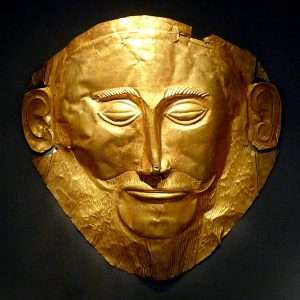
Moustache? Big ears? Asleep - ready to be awakened?
And/or: ''The Ash is the tree of strength, and a masculinised tree, representing the animus, or ''inner husband'' of the woman. At the moment of 'destruction' of the world in Norse myth, Yggdrasill becomes a guardian mother, regenerating a whole new race of people. The world tree is always pregnant with possibilities....The Ash is held sacred to the male god Poseidon, husband of the growth-goddess who rules cereals - Demeter....The Ash is the last tree to come to leaf in the forest....The Ash's winter appearance, where the fruits dry to form silvery 'keys', gives the Ash a head of moons. Ash twigs placed in a circle are a traditional protection against adders, reminding us of the snake that gnaws away at the root of the Yggdrasill; the serpent who represents unrestrained libido, or instinctual life. This is the Ash root of the south, place of FEELING, its branches reaching to the north as flowering of symbolic language, where he meets his marriage partner, the Alder, anima of man...The man Ash marries the woman Alder at the spring equinox....'' [Pages 96/7 'The Fruits of the Moon Tree' / A. Bleakley].
Side note: ''In France and elsewhere, the King Cake is traditionally served at the Epiphany festival.'' ['Tipping Point' / 2020].
“Let them eat cake.”
''This quote has been famously attributed to the French queen Marie-Antoinette. Many people believe that this flippant phrase helped spark the French Revolution in 1789. Historians say that there’s no proof to substantiate the story and that it’s likely apocryphal. But it’s still such a well-known quote that would be ironically amusing in these circumstances.''
ICING?

“Most certainly, I tell you, one who doesn’t enter by the door into the sheep fold, but climbs up some other way, is a thief and a robber."
''Covering cakes with powdered sugar or other materials was introduced in the 17th century.[5] The first documented case of frosting occurred in 1655, and included sugar, eggs and rosewater.[6] The icing was applied to the cake then hardened in the oven. The earliest attestation of the verb 'to ice' in this sense seems to date from around 1600,[7] and the noun 'icing' from 1683.[8] 'Frosting' was first attested in 1750.''
“Death leaves a heartache no one can heal, love leaves a memory no one can steal.” [Kate Wight].
This quote is often attributed to author Richard Puz. When you lose your partner to death, it can feel as though they have been stolen from you. But as these words convey, your love for them and your memories of them will keep them alive in your heart.''

Stamp of remembrance?
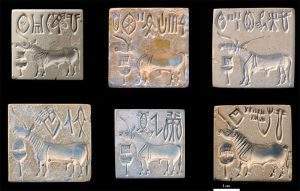 ''The funeral cakes that were traditional in some denominations in this country, mostly Protestant, were often meant not only to provide refreshment for mourners, but also to be a token of remembrance. A pair of these cookie-like cakes, sometimes called seedcakes in old cookbooks, might be wrapped in black crepe paper or paper printed with such symbols as skulls, and given to mourners to take home as keepsakes....Funeral cakes came here from Europe. They were common in northern Europe, and today the tradition is maintained primarily in rural areas of Sweden....Typically, funeral cakes resembled shortbread. They were often seasoned with spices and, for some reason, caraway seeds, and were often served with ale or Madeira....The cakes were decorated with symbolic patterns. Molds carved from wood, or sometimes made of iron or stone, were used to stamp decorative impressions on the cakes before baking. Mr. Weaver has several molds, including one of marble carved by a gravestone maker from Schenectady, N.Y. Mr. Weaver said the Hudson Valley was also a center for the carving of wooden molds from apple or beech wood....The rose and the heart were the most common designs,'' he said. ''The rooster, symbolizing resurrection, was also used, as was the fish, for Christ, and the dove. Designs used on gravestones frequently show up. The three plumes that decorate a hearse and the Masonic symbol were some others...Among the Pennsylvania Dutch a raisin pie was usually served after a funeral, often having been brought by mourners as a gift to the family of the deceased, a tradition imported from Germany {Celts?}. [The New York Times: 'An Old Custom: Funeral Cakes' / Florence Fabricant / 1988].
''The funeral cakes that were traditional in some denominations in this country, mostly Protestant, were often meant not only to provide refreshment for mourners, but also to be a token of remembrance. A pair of these cookie-like cakes, sometimes called seedcakes in old cookbooks, might be wrapped in black crepe paper or paper printed with such symbols as skulls, and given to mourners to take home as keepsakes....Funeral cakes came here from Europe. They were common in northern Europe, and today the tradition is maintained primarily in rural areas of Sweden....Typically, funeral cakes resembled shortbread. They were often seasoned with spices and, for some reason, caraway seeds, and were often served with ale or Madeira....The cakes were decorated with symbolic patterns. Molds carved from wood, or sometimes made of iron or stone, were used to stamp decorative impressions on the cakes before baking. Mr. Weaver has several molds, including one of marble carved by a gravestone maker from Schenectady, N.Y. Mr. Weaver said the Hudson Valley was also a center for the carving of wooden molds from apple or beech wood....The rose and the heart were the most common designs,'' he said. ''The rooster, symbolizing resurrection, was also used, as was the fish, for Christ, and the dove. Designs used on gravestones frequently show up. The three plumes that decorate a hearse and the Masonic symbol were some others...Among the Pennsylvania Dutch a raisin pie was usually served after a funeral, often having been brought by mourners as a gift to the family of the deceased, a tradition imported from Germany {Celts?}. [The New York Times: 'An Old Custom: Funeral Cakes' / Florence Fabricant / 1988].

feathers.

Striding forwards/upwards? Shu?
Side note: An interesting feature of the Qurna coffin is the decorated foot. The image is believed to depict Isis and Nephthys, the sister-goddesses involved in funerary rites in ancient Egypt. Isis and Nephthys are frequently shown together as mourners; mourning is represented in a number of ways but the raised, bent arm is the most common. The gesture on the Qurna coffin is clearly a little different, and may also have been protective.
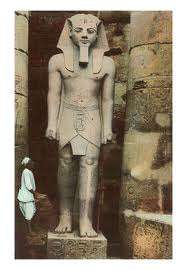
Pulling what?
And/or: In the pantheon of Ancient Egyptian gods and goddesses, one figure often overlooked is Nephthys, the goddess of mourning and protection.
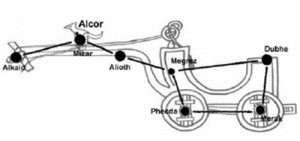
While her sister Isis is widely known and revered, Nephthys remains a lesser-known figure in Egyptian mythology. In fact, she is often referred to as the “forgotten goddess” due to her overshadowed presence in ancient texts and archaeological findings. However, Nephthys played a crucial role in Egyptian mythology and society, and her story is as rich and complex as those of her more famous counterparts.
Nephthys was the daughter of Geb, the earth god, and Nut, the sky goddess, making her a sister to Isis, Osiris, and Set. She was often depicted as a woman with a headdress in the shape of a basket or house, symbolizing her role as the protector of the dead. Nephthys was also associated with the wind and the desert, further highlighting her connection to mourning and death.
'H'estia?
'Consonant'.

Watling Street: Offa's Dyke close to the end of it. 'Sheep decans' to enlarge. Question. When the red line is extended {as the 'crow' flies} where does it end. Who 'lived' there. What symbol do you 'see'? Westward leading, still proceeding, guide us to thy ....?

Offa's Dyke: Edge of the wood? Sides/banks = 'raised up'?
Continued: ''Shearing cake, or cacen gneifo (pronounced “c-ack-en guh-nigh-fo”) in Welsh, was traditionally made to celebrate Shearing Day. A simple, buttery sponge, the cake was studded with heady caraway seed, lemon rind, and candied citrus peel, and finished with a dusting of confectioners’ sugar. While some older generations have nostalgic memories of baking it with family members, today many struggle to recollect shearing cake. It’s possible shearing cake evolved from caraway bread (bara carawe), a buttermilk-enriched dough scattered with caraway seeds that also appears in traditional Welsh recipe books. Aside from using less sugar or honey and the omission of lemon zest, there is a strong resemblance between caraway bread and older shearing cake recipes. Both would have been made similarly to scones.....Prominent in both bara carawe and cacen gneifo, caraway seed was an auspicious ingredient on Welsh farms. Brought to Wales by the Romans, the seeds were symbolic of a prosperous harvest and cited in old folk stories as a way to help keep lovers infatuated and as a mild anesthetic, perhaps due to their heady, aniseed-like flavour....Sheep shearing is still celebrated through competitions and agricultural shows. On a world level, Welsh sheep shearers are renowned for their skills. Each year, people gather together for the Royal Welsh Show and each county hosts their own annual agricultural shows. In 2019, an event on Anglesey, a small island off the coast of North Wales, even featured a shearing cake competition.'' ['Atlas Obscura'].

An unbelievable feat of ancient architecture, The Wall of the Crow is 656 feet long, 32 feet high and 32 feet at the base. Standing near the Sphinx, this ancient wall was constructed in the 4th Dynasty of Egypt and the true purpose still remains unknown.
Continued: ''Why is it Called Madeira cake? {almonds and lemon}: Contrary to what one might think, this cake does not come from Madeira (Portugal), it's actually named as such because it was traditionally served with Madeira wine, which is similar to Port.''
'New Zealand' for something extra.
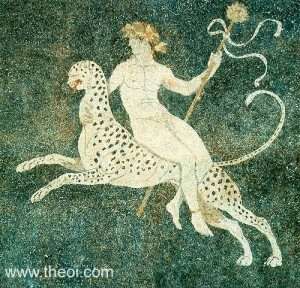 ''The roots of Madeira's wine industry date back to the Age of Exploration, when Madeira was a regular port of call for ships travelling to the East Indies. By the 16th century, records indicate that a well-established wine industry on the island supplied these ships with wine for the long voyages across the sea. The earliest examples of Madeira were unfortified and had the habit of spoiling at sea. However, following the example of Port, a small amount of distilled alcohol made from cane sugar was added to stabilize the wine by boosting the alcohol content (the modern process of fortification using brandy did not become widespread until the 18th century). The Dutch East India Company became a regular customer, picking up large (112 gal/423 L) casks of wine known as "pipes" for their voyages to India.
''The roots of Madeira's wine industry date back to the Age of Exploration, when Madeira was a regular port of call for ships travelling to the East Indies. By the 16th century, records indicate that a well-established wine industry on the island supplied these ships with wine for the long voyages across the sea. The earliest examples of Madeira were unfortified and had the habit of spoiling at sea. However, following the example of Port, a small amount of distilled alcohol made from cane sugar was added to stabilize the wine by boosting the alcohol content (the modern process of fortification using brandy did not become widespread until the 18th century). The Dutch East India Company became a regular customer, picking up large (112 gal/423 L) casks of wine known as "pipes" for their voyages to India.
The intense heat in the holds of the ships had a transforming effect on the wine, as discovered by Madeira producers when one shipment was returned to the island after a long trip. The customer was found to prefer the taste of this style of wine, and Madeira labeled as vinho da roda (wines that have made a round trip) became very popular. Madeira producers found that aging the wine on long sea voyages was very costly, so they began to develop methods on the island to produce the same aged and heated style. They began storing the wines on trestles at the winery or in special rooms known as estufas, where the heat of the island sun would age the wine.''
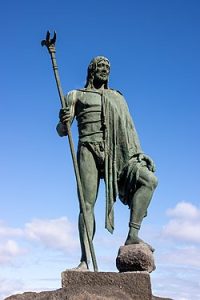
The Guanche were the indigenous inhabitants of the Spanish Canary Islands, located in the Atlantic Ocean some 100 kilometres (60 mi) to the west of modern Morocco and the North African coast.[1] The islanders spoke the Guanche language, which is believed to have been related to the Berber languages of mainland North Africa; the language became extinct in the 17th century, soon after the islands were colonized.
It is believed that the Guanche may have arrived at the archipelago some time in the first millennium BC. The Guanche were the only indigenous people known to have lived in the Macaronesian archipelago region before the arrival of Europeans. There is no accepted evidence that the other Macaronesian archipelagos (the Cape Verde Islands, Madeira and the Azores) were inhabited.
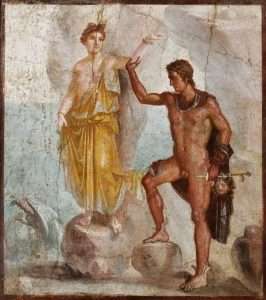
'Silks' ?
''Madeira (/məˈdɪərə/, /məˈdɛərə/,[3][4][5] Portuguese: [mɐˈðɐjɾɐ]), officially the Autonomous Region of Madeira (Portuguese: Região Autónoma da Madeira), is one of two autonomous regions of Portugal, the other being the Azores. It is an archipelago situated in the North Atlantic Ocean, in a region known as Macaronesia, just under 400 kilometres (250 mi) to the north of the Canary Islands and 520 kilometres (320 mi) west of the Kingdom of Morocco.[6][7] Madeira is geologically located on the African Tectonic Plate, although it is culturally, politically and ethnically associated with Europe, with its population predominantly descended from original Portuguese settlers.[8][9][10] Its population was 251,060 in 2021. The capital of Madeira is Funchal, which is located on the main island's south coast......

El Hierro was used in various parts of Europe for more than 500 years as the prime meridian, especially outside of the future British Empire. By the 2nd century CE, Ptolemy already considered a definition of the zero meridian based on the westernmost piece of land in the (known) world, giving a few maps with only positive, eastern longitudes. In 1634, in France, as ruled by Louis XIII and his minister Richelieu, it was decided that Ferro's meridian should be used as a key reference of maps, in consideration of the island's historic meridian and status as the westernmost-known land {'153'?} of peoples of the 'Known World'. Flores Island is the westernmost Azore discovered by the Portuguese navigators in the early 15th century—after the First Voyage of Columbus in 1492 scholars and cartographers sometimes grouped them among the new world. The Paris elite considered El Hierro to be exactly 20° west of the Paris meridian (1⁄18th of its relevant parallel of the globe).[citation needed] Old[clarification needed] international maps (outside of Anglo-North American realms) often have a common grid with Paris degrees at the top and Ferro degrees (offset by 20 from Paris) at the bottom. Louis Feuillée also worked on this problem in 1724.[citation needed] The most important festival of El Hierro is the Bajada de la Virgen de los Reyes, held every four years, on the first Saturday of July (the last occasion was in 2021, and the next will be in 2025). During the festival, the Virgin of the Kings (Virgen de los Reyes, patron saint of the island of El Hierro) is taken from her sanctuary in La Dehesa (in the municipality of La Frontera) and carried to the capital of the island, Valverde, making a tour of 44 kilometres and running through all the towns of El Hierro. The annual festival of the Virgin is celebrated every September 24. Main article: List of animal and plant symbols of the Canary Islands The official natural symbols associated with El Hierro are Gallotia simonyi machadoi (El Hierro giant lizard) and Juniperus {'juniper'} phoenicea (Sabina).
In 1418, two captains, João Gonçalves Zarco and Tristão Vaz Teixeira, while exploring the African coast in the service of Prince Henry the Navigator, were driven off course by a storm to an island which they named Porto Santo (English: "holy harbour") in gratitude for divine deliverance from a shipwreck.
The following year, Zarco and Vaz organised an expedition with Bartolomeu Perestrello. The trio travelled to the island of Porto Santo, claimed it on behalf of the Portuguese Crown, and established a settlement. The new settlers observed "a heavy black cloud suspended to the southwest" and upon investigation discovered the larger island they called Madeira[25][26] (Portuguese: madeira, lit. 'wood').
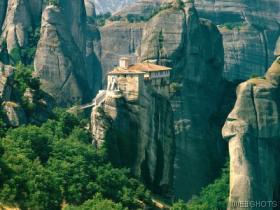
Above or below the clouds?
N.B. Canary Islands owned by Spain. Madeira by Portugal.
"The Independence of the U.S.A. was toasted with medeira wine."
'Freedom' link?
And/or: Before the arrival of humans, the Canaries were inhabited by prehistoric animals including the giant lizard (Gallotia goliath), the Tenerife and Gran Canaria giant rats,[65] and giant tortoises, Geochelone burchardi and Geochelone vulcanica.
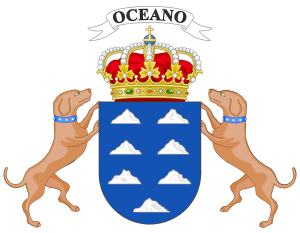
Coat of Arms: Canaries
Although the original settlement of what are now called the Canary Islands is not entirely clear, linguistic, genetic, and archaeological analyses indicate that indigenous peoples were living on the Canary Islands at least 2,000 years ago, possibly 3,000, and that they shared a common origin with the Berbers on the nearby North African coast.[66][67][68]
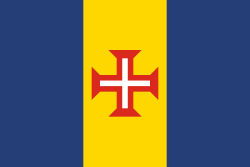
Flag of Madeira. Templar links?
Reaching the islands may have taken place using several small boats, landing on the easternmost islands Lanzarote and Fuerteventura. These groups came to be known collectively as the Guanches, although Guanches had been the name for only the indigenous inhabitants of Tenerife.[69]
Continued: A working example: {i.e., in respect of a mind set}: ''Each tree or plant for the Druids, had numerous spiritual and magical associations with it: The Birch = New beginnings {'boulders'?}. The Rowan = Protection. The Willow = Intuition. The Ash = Interconnection. The Oak = Strength. The Holly = Balance. The Hazel = Wisdom. The Apple = Abundance. The Yew = Transformation.
So to seek the above energies that the tree represented to be applied into their own life's, a Druid if he was seeking {say} 'abundance' would eat apples, use a wand {in ritual} made from apple, meditate under an apple tree, etc etc.'' [Page 68 'Idiots Guide to Paganism' / C. McColman].

Herdsman or ploughman. Ploughshare?
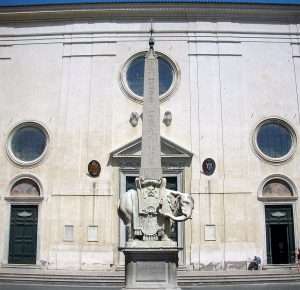
What is said about elephants?
And/or: ''In his mythical triology Lord of The Rings, J R R Tolkien tells the tale of a mythical ancient wood inhabited by Ents - walking, talking tree herders tasked with the protection of Middle Earth's primeval woodlands. Today, situated within middle Europe, there stands another ancient wood. In the German state of Rhineland-Palatinate, nestled tightly along the Belgium border, sits the 4000 year old Ruheforst {'Resting Forest'}, comprised of beeches, West Germany's indigenous tree species....stretching to the horizon....Biologists have long been aware that trees can count, remember and learn from their experiences. They also pass their knowledge on in real time to the seedlings growing around them {'ancestors'}. Future seedlings receive handed down wisdom from mother trees - the oldest and most dominant trees in the forest - while sick trees are supported by their community of tree neighbours. The sharing and redistribution of food and nutrients from one tree to the next takes place within the intertwined web of root systems throughout an ancient wood {'Queendom'}....

New growth.
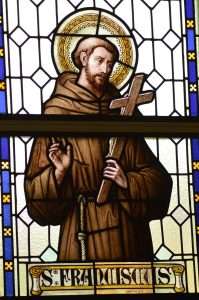
Cedar wood?
Communication between trees takes place by electrical signals {'137'?} via the mycelium, a fungal and root network just below the ground surface. it's referred to by scientists as the 'Wood Wide Web'. This web is key to systems of communication and mutual support within the forest....An old stump belonging to a tree felled 400-500 years ago is still alive. The inner section of hardwood has rotted but the bark is new and the layer beneath, where the essential sapwood and cambium lies, is still alive. Without photosynthesis from leaves in its canopy, it should have died. Its roots however are being fed a sugar solution by the surrounding beeches. These processes are only observed in ancient woodlands.'' ['Readers Digest' / April 2017. Brackets - this readers].

Shoeless Joe Jackson.
''To cast ones net far and wide.''
''In a forest, fast growth is always a negative. Mother trees shroud their offspring with the huge canopies they produce, so only 3% of light reaches the ground. Slow growth of young trees is proven to be a prerequisite of longevity. Fast growing always leads to an early demise within tree years.''
Overshadow?
'Dappled'.
Amarna to enlarge.

Center of 'brow'?
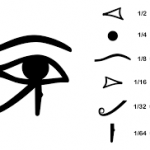
A work in progress: Taliesin's name in Welsh means 'radiant brow', a characteristic of Apollo's, but the 'TaF syllable is often present in the primitive names of Hercules. In Crete he was Talus, the man of bronze, whom Medea killed. In Pelasgia he was the tortured Tan-talus, from whose name the word 'tantalize' derives. The Irish Tailltean Games are probably called after an agricultural Hercules the first syllable of whose name was Tal. In Syria he was Telmen. In Greece he was Atlas Telamon, and 'Atlas', like 'Telamon', was derived from the root Tla or Tal which contains the senses 'take upon oneself, 'dare', and 'suffer'. Dr. MacCulloch suggests that 'Taliesin' is also a divine name and that the swallowing of the grain of corn by the black hen in the Romance of Taliesin proves Taliesin to have been a Barley-god. The time has now come to draw closely around the thicket where the Roebuck is known to be harboured. And here is a hunting song from Gwion's poem, Angar Cyvyndawd:

Hands?
I have been a roebuck on the mountain,
I have been a tree stump in a shovel,
I have been an axe in the hand.

Feet?
But we must transpose the lines of the couplet, because logically the axe comes first, then the tree is cut down, and one cannot put the oak-stump into one's shovel unless it has been reduced to ashes—which are afterwards used to fertilize the fields. So:
I have been a roebuck on the mountain,
I have been an axe in the hand,
I have been a tree stump in a shovel.
If one looks carefully again at the names of the fifteen consonants of the Boibel-Loth, or the Babel-Lota, one notices clear correspondences with Greek legend. Not only 'Taliesin' with 'Talus', and 'Teilmon' with 'Telamon', but 'Moiria' with the 'Moirae', the Three Fates; and 'Cailep' with 'Calypso', daughter of Atlas, whose island of Ogygia—placed by Plutarch in the Irish Seas—was protected by the very same enchantment as Morgan le Faye's Avalon, Cerridwen's Caer Sldi, or Niamh of the Golden Hair's 'Land of Youth'. {'The White Goddess'}.

'Stones' and 'stumps' as a means.....?

"Once a year the eyes of the nation turn to this tiny {'little'} hamlet in WESTERN Pennsylvania to watch a MASTER at work. The master? Punxsutawney Phil the worlds most famous weather man - the groundhog....Who legend says can predict the COMING of an early spring. So the question today is...does Phil feel lucky? Same old stuff every year. The guy comes around with a big stick, and raps on the door. They pull the little rat out and talk to him - the rat talks back - and then they tell us the verdict." [Groundhog Day].
Enjoying the journey can be difficult in a world that has become increasingly outcome-obsessed....

Thumb?

Practical example.
But their are many ways we can foster this approach in our lives. The first one requires slowing down a little and realizing that joy comes from the doing, not the completing. So instead of rushing for it to be done, take a moment to enjoy the doing, and remember that lots of things in our lives are never truly done - but constantly evolve just like we do. Another vital step is acknowledging the small wins. Have lots of stepping stones to a big goal to pause on. Celebrate each new stone, look back and celebrate how far you have come from the first one {Karnak} - and look forward to the many stones in front." [Page 59 'Readers Digest' / April 2022].
Fostering / adopting?

In North Germany Alkor, as there written, has been der Hinde, the Hind, or Farm Hand; in Lower Germany, Dumke; and in Holstein, Hans Bumken, Hans the Thumbkin, — the legend being that Hans, a wagoner, having given the Saviour a lift when weary, was offered the kingdom of heaven for a reward ; but as he said that he would rather drive from east to west through all eternity, his wish was granted, and here he sits on the highest of the horses of his heavenly team. A variant version placed Hans here for neglect in the service of his master Christ ; and the Hungarians call the star Oontzol, with a somewhat similar tale. Another Teutonic story was that their giant Orwandil, our Orion, having frozen one of his big toes, the god Thor broke it off and threw it at the middle horse of the Wagon. where it still remains.
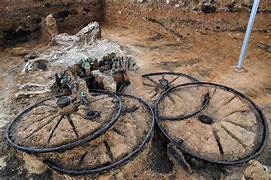
Two horse skeletons and the remains of a chariot dating back to the Iron Age have been found on a housing development in East Yorkshire.
Archaeologists started working on the Pocklington site in 2014 and have excavated more than 75 burial graves, known as barrows. They described the latest find as "highly unusual". Other finds include human skeletons, including a "young warrior", swords, spears and shields.
And/or: "All myth, legend and poetry derives from the Mysteries in some sense they are the potential sparks to ignite a sense of the wonders of creation and the purpose of life. Almost any of the countless themes, characters, fragments of tales — whether from ancient Greek, Egyp- tian or Welsh Triads can be quarried and utilized for exploration individually or with a group. Once you begin to work with the matter of the mysteries you will find it like controlling a team of eager, high-stepping horses. Feel the reins in your hands and the pull of their heads at the bit. Your chariot will carry you far, across land and sea, both in Inner and Outer realms.
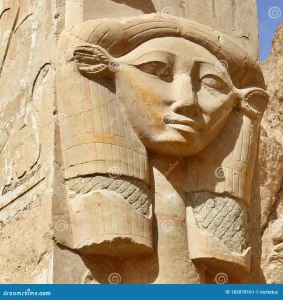
Spirit or soul?
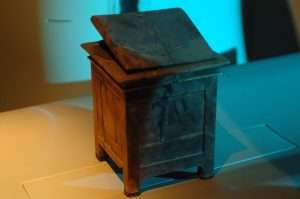
Solitary 'tooth' {and liver} found in a 'square' box belonging to Hatshepsut.
The mysteries are not something locked away in dusty tomes on a library shelf — they are here and now, living lines of contact with which to enter a wholly different dimension . The object of the Hermetic search is that life which is capable of being transmitted to a specific being in order to lead that being to its own perfection....this available ‘life-essence’ is called the King, cosmic man, but it must be recognized that attaining the aim of the Hermetic opus is not an end; it is the beginning of the light that illuminates reality . . the true King, is the living being who has reached the stage of immortal and conscious return to the source of the SOUL that animates him (298) . This return to the source is the objective that animates all magical work, fuelling Orphite and Hermeticist, Gnostic and Cathar alike . As we shall see in the next chapter, it is present in esoteric Christianity as well as the Hermetic schools. Divine knowing is all important if we are to find our way further than the first few steps on the road we have elected to travel." [Page 240 'The Western Way'].
"Nike is the goddess of victory in Greek mythology1234. She is the daughter of the giant Pallas and the river Styx, and the sister of Cratos, Bia, and Zelus234. She is a friend of Zeus and an attribute of Athena, the goddess of wisdom23. She has wings and can run very fast134. She is often represented as a small figure carried in the hand by Zeus or Athene....
While the Greek word νίκη (nikē) is of uncertain etymology, R.S.P. Beekes has suggested a Pre-Greek origin.[11] However, it has also been speculated to have derived from the Proto-Indo-European neik- meaning to attack or "start vehemently." If this is true it would make the word cognate with Ancient Greek νεῖκος (neîkos, "strife") and Lithuanian ap-ni̇̀kti ("to attack")."
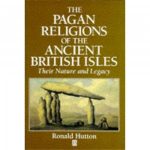
''Error runs down a plain while truth has to....?
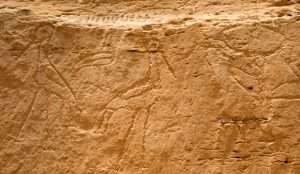
The oldest symbol found for the ''horizon'' symbol/hieroglyph = An Ibis bird between two Storks. Question. A 'BALANCE' of something? Center/middle ground? {i.e., can balance on one leg}. "At the town of Hermopolis, ibises were reared specifically for sacrificial purposes {i.e., middle ground between Upper and Lower Egypt}, and in the Ibis Galleries at Saqqara, archaeologists found the mummies of one and a half million ibises.[14]
According to local legend in the Birecik area, the northern bald ibis was one of the first birds that Noah released from the Ark as a symbol of fertility....The mascot of the University of Miami is an American white ibis named Sebastian. The ibis was selected as the school mascot because of its legendary bravery during hurricanes. According to legend, the ibis is the last of wildlife to take shelter before a hurricane hits and the first to reappear once the storm has passed."
N/W?
Try ''semi-circle'' and/or ''cakes'' and/or ''marsh'' and/or ''three'' to enlarge INTO THAT MINDSET.
Recall what these ISLANDS are built UPON. All converging on the Salisbury Plains?
Hyperborean? Orkney?
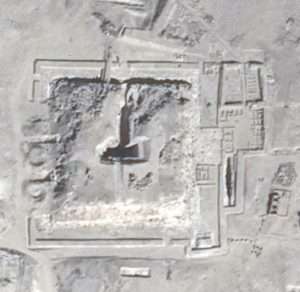
Shape of small surrounding wall that later on became covered with a larger one {grassed over} that takes on the form of a pyramid shape.
And/or: Enclosure wall {'navel/thigh' height} surrounding the heathland {'marsh'?} in East Wales {N/E?} at the top of Penycloddiau hill. Earlier than that a HAZEL fence that began it all - 3000 years ago in the Bronze Age. ''This formed an earlier enclosure at the summit.'' All timbers seemed to be burnt PRIOR to the 'small wall' being built. Thought it to be a hill fort. Now not so sure. A very cold and windy place {'North wind'?} - believe it to be occupied only in the summer months: ''herbs, livestock and sheep and to exchange ideas.'' ['Digging for Britain: Iron Age Revealed' / 19.12.18].

Coincidence?
And/or: ''The ninth tree is the hazel {3x3?}, in the nutting season. The nut in Celtic legend is always an emblem of concentrated wisdom: something sweet, compact and sustaining, enclosed in a small hard shell - as we say: 'this is the matter in a nut shell' - the nine hazels of poetic art which produced flowers and fruit {i.e., beauty and wisdom} simultaneously. ....Nine is the number sacred to the Muses....the hazel was the venerated tree of rath {woe?}....In the History of Ireland the Son of the Hazel was one of the three earliest rulers of Ireland - who themselves married the 'triple' goddess of same....The hazel is the tree of wisdom and the month extends from August 5th to September the 1st.'' [Pages 176/7 'The White Goddess' / R. Graves].
''Hard nut to crack?''
Refresher: ''The green triangle in a box/tin of Quality Street has hazelnut in it.''
'Green gold'?

Bristles?
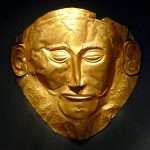 ''A nine day wonder is an interesting event that is soon forgotten.'' ['The Chase'].
''A nine day wonder is an interesting event that is soon forgotten.'' ['The Chase'].
Question. Whats the remedy?
Try ''nine'' as simple as it might seem - if only to those FIRST IMPRESSIONS''.
Forgetting/Rembering as a means....?
Side note: Burnt nuts {hazel?} found by Alice Roberts and co. that gave a date for the standing stones at Waun Mawn in relation to Stonehenge.
Cassiopeia link?
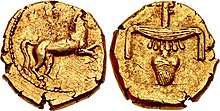
Costly?
And/or: ''A charred hazelnut shell, recovered in 2007 during excavations in Tankerness on the Mainland {Orkney}, has been dated to 6820–6660 BC, indicating the presence of Mesolithic nomadic tribes.[27] The earliest known permanent settlement is at Knap of Howar, a Neolithic farmstead on the island of Papa Westray, which dates from 3500 BC. The village of Skara Brae, Europe's best-preserved Neolithic settlement, is believed to have been inhabited from around 3100 BC.[28] Other remains from that era include the Standing Stones of Stenness, the Maeshowe passage grave, the Ring of Brodgar and other standing stones. Many of the Neolithic settlements were abandoned around 2500 BC, possibly due to changes in the climate.''

Facade at Philae. 'H' form? Hawthorn blossoms?
''The seven trees of the Irish grove all belong to the summer months except B the birch, which has taken the place of H , the hawthorn: and has apparently been chosen because it is the leading letter of the first flight of the five trees, as H is the second. But, as will be shown in the next chapter, B was used as the cypher equivalent of H not only in Hyginus's fable 271 but in the 3rd century AD Ogham inscription on the Callen Stone. So it seems that Sunday's original letter was not B, but H, of which the Hebrew tree, corresponding with the hawthorn, was the sant, or wild acacia, the sort with golden flowers and sharp thorns, better known to readers of the Bible as 'shittim' wood, i.e., from Cyprus.'' [Pages 252-6 'The White Goddess' / R. Graves].
''Sharp Nose''? or should that be ''hooked''?

''Beethoven's fifth is morse code for the letter 'V'.....'' ['The Chase']. And/or: ''Five is the human soul. Just as mankind is comprised of both good and evil, so the five is the first number made up of even and odd.'' ['The Mystery of Numbers' / A. Schimmel].
Side note: "Aries {Ram} = 'head'. Gemini {Twins} = arms. Leo {Lion} = heart. Libra {Scales} = pelvis. Sagittarius {Man-horse} = thighs. Aquarius {Waterman} = lower leg. Taurus {Bull} = neck and throat. Cancer {crab/crayfish} = chest and breasts. Virgo {Virgin} = stomach, womb. Scorpio {Scorpion} = sexual parts. Capricorn {Goat-fish} = knees. Pisces {Fish} = feet.
All as a means...?

A work in porogress: "During my time in hostpital, various doctors came to speak to me. They were all very nice and polite but one stuck out in my mind. He was actually the most JUNIOR of them all, but something about his manner was incredibly calming and reassuring. It took a while before i put my 'finger' on what it was he was doing that was making me feel so relaxed and reassured. Whenever he camer to my bed to speak to me, he knelt down so he was at my eye level. It seemed such a small simple thing, but it meant that he never loomed over me as all the other doctors and nurses did. Just that one simple act of kneeling down made all the difference. Its a trick i'm going to start using myself. Theres something to be said about going down to your patients level." [Dr Max: 'Readers Digest' / December 2023].
Bee's knees?
A {working?} example: "Wide ruler and 'King of Men', Agamemnon of golden Mycenae, the commander in chief of the Greeks, is Regulus {Leo}. Although only the 21st brightest star, Regulus gains its great status by being the brightest on the ecliptic, the apparent path of the Sun. The name ''Regulus'' is a diminutive of 'Rex' {King}, and in Babylonia, too, the star was named Sharru, the King. Homer exults in describing Agamemnon in the glittering terms which befit his standing, particularly when Agamemnon as Leo rises at one time of the year at the same moment as the Sun and travels across the daytime sky covered or occulted by the brightest object in the skies." [Homer's Secret Iliad' / F. and K. Wood].
Red lion or Green lion?
Temple of the Winged Lion at Petra. Question. Red or Green?
Think about it - relative to ''King'' and ''Pharaoh'', i.e., Regulus = E/W. Therefore what would something ''greater'' {'Great House'} be represented by.
"Twenty one is connected to perfection, since it is the product of the sacred numbers 7 and 3." ['Mystery of Numbers']. Coincidence or a meaningful one?
'Mans Search for Meaning' / Viktor Frankl.

A right angled neter ? What would 180 represent?

"EYE LEVEL"? An objective eye? Above or below the horizon line?
A side step: Each was depicted as a 'divinity,' carefully annotated in both temple and tomb for a system of timekeeping that was 'religious' in nature, though still highly accurate and efficient. It is very significant that the 36 dekan 'gods' and the 42 neteru, together number the 78 sacred principles associated with the traditional Tarot card deck. Ascribed to a Hermetic origin, the Tarot images represent archetypal forces at work in human life. Intended through the ages to be used as a system of spiritual instruction, occult legend says that the images were fabricated into playing cards because mans proclivity for gambling would never cease...a guarantee for the systems survival." [Chapter two, same book]. Therefore that 'negative' aspect being used as a means to begin an understanding - and/or a focal point - for the 'start' of something? The beginnings of something.

Venetian glass?
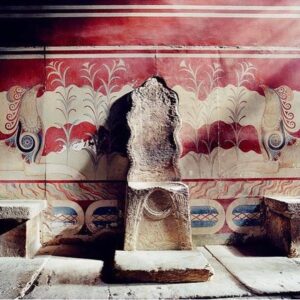
The throne of Minos. Griffin in background..........."The griffin, griffon, or gryphon (Ancient Greek: γρύψ, romanized: grýps; Classical Latin: gryps or grypus;[1] Late and Medieval Latin:[2] gryphes, grypho etc.; Old French: griffon) is a legendary creature with the body, tail, and back legs of a lion, and the head and wings of an eagle with its talons on the front legs."
Continued: "Tarot cards were merely pictorial representations of the same forces shown in the plays and songs, and told the same eternal story. Possibly the pictures were at one time related to the old oral tradition of worship, as were the Icons used in Eastern Christianity. The pagan worship-system was banned and suppressed, so the images passed into the folk tradition. Only in recent years have the Tarot emerged from anonymity into the clamour of 'occultism', where writers and practitioners forget that no 'secret' body of knowledge is required to account for the images present in the mind of mankind, and that 'magical' orders were open for all in folk-song and ceremonies throughout the centuries." [Taken from the book 'Where is Saint George'. Mentioned elsewhere].
Compare to Greek 'goddess' Hekate and 'her' relationship to 100, in relation to the 'great year'.[Chapter five.'The Sirius Mystery'].
Or "if a ' hundred' is actually a "ten of tens", what then does 'ten' itself mean? What sort of image or idea does this number concept embody"....."The writer Notker of St. Gall, once explained the name of the Greek goddess Hekate, who was amongst other things the goddess of growth or increase, by the number 100." Together with....
 ''Where did the term ''turning the light around'' begin? It began with the adept, Wenshi. When the light is turned around, the energies of heaven and earth, yin and yang, all congeal. This is what is termed as ''refined thought'', ''pure energy'', or ''pure thought''....Only after 'hundred' days of concentrated work is the light real, only then is it the 'fire' of spirit....a point of true positive energy ....produces a 'pearl'.....'' [ Verse headed 'Turning the Light Around and Keeping to the Center' FROM the book 'The Secret of the Golden Flower' / T. Cleary].
''Where did the term ''turning the light around'' begin? It began with the adept, Wenshi. When the light is turned around, the energies of heaven and earth, yin and yang, all congeal. This is what is termed as ''refined thought'', ''pure energy'', or ''pure thought''....Only after 'hundred' days of concentrated work is the light real, only then is it the 'fire' of spirit....a point of true positive energy ....produces a 'pearl'.....'' [ Verse headed 'Turning the Light Around and Keeping to the Center' FROM the book 'The Secret of the Golden Flower' / T. Cleary].
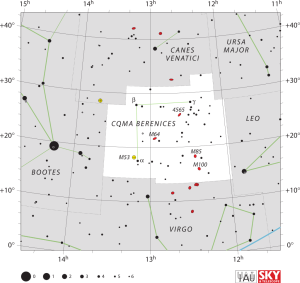
a 'right angle'?
Side step: "An essential datum is that there are similarities between the mathematical structure of the Parthenon and that of the Great pyramid. In both constructions the corners deviate deliberately from a right angle. I have established that the elevation of the fronts of the Parthenon was calculated by the factor of the 'golden mean' and that the elevation of the flanks was calculated by the factor of 'Pi' [3.142]. According to the data available, i have interpreted the elevation of the Great pyramid to be such that the north side was calculated by the factor of the 'golden mean', and that the west side by the factor of Pi.
Side note: Parthenon..."Mostly curves, very few right angles; dedicated to Athene..." {PBS America}. Born from the 'forehead' of Zeus - 'fully armed'. Slow to anger. Goddess of wisdom. Archaeoastronomically aligned to the Hyades constellation - the 'five' daughters of Atlas - who became known as the weeping sisters - associated with 'rain'. {Wiki}.
Question. 'Shadow' or 'anima' / Male or Female / Sea water or fresh water / 'spirit' or 'soul' {'S/W' or 'S/E'?} - ALL AS A MEANS...?
N.B. Hyades 153 ly {47pc} to the cluster center from earth. Coincidence or a meaningful one?
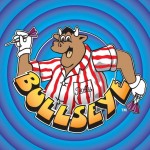

Refresher: ''Beethoven's fifth is morse code for the letter 'V'.....'' And/or: ''Five is usually connected with human life and the five senses, it is the number of love, and sometimes, of marriage, as in Plato's Laws, where there are 5 guests in the chapter on marriage.'' ['The Mystery of Numbers'].
"The Parthenon is called Heka-tompedon, "one hundred foot temple" in Greek texts, and these texts indicate also that its width was 100 feet." [Page 359, 'Secrets of the Great Pyramid']. Think about both the above, relative to 'fall' symbolism in relation to horizontal / vertical, i.e.,'right angle'. And 'North' relative to the golden ratio, while 'West' is relative to the Pi factor. i.e.,the tail end of something, being indicative of the beginning of something else. Represented now, in this example within 'number' symbolism. Question. Which came first? [And Why].
Together with the connection of 'hand' and 'hound' to those same numbers, i.e.,to touch, 'grasp' something, [representational or symbolic of], as explained on page 131 'Number Words and Number Symbols' [a cultural history of numbers] by K. Menninger.
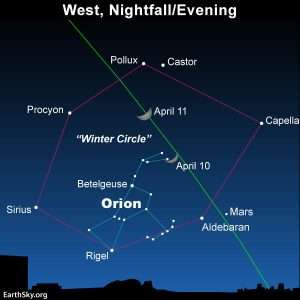 That final link to the symbolism of 'raised arms/hands'. Benefit of. Explained elsewhere. Together with Egyptian equivalent of number symbolism represented within the royal cubit, [see Stecchini info]. Six hands relative to seven hands, in relation to the geodetic landscape of same. The Macro and the Micro.
That final link to the symbolism of 'raised arms/hands'. Benefit of. Explained elsewhere. Together with Egyptian equivalent of number symbolism represented within the royal cubit, [see Stecchini info]. Six hands relative to seven hands, in relation to the geodetic landscape of same. The Macro and the Micro.
As seen from a different perspective: "The Arabs utilized this, with Procyon, to mark the terminal points of their short Cubit...Their long Cubit being the line between Castor and Pollux of Gemini. " [Info. within Canis Minor 'Star Names and Their Meaning'].
Higher/lower as a means...? [if only from a different perspective].
Akhenaten Talatat's?
'Hands' / 'Altar' ?
And/or {simplified?}: "Everyone has an internal thought process: that silent other self who speaks to you; the one you debate with." [First sentence; first paragraph; first page of the book by Q. S. Lam].

Trickster?
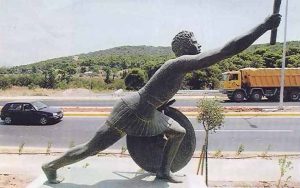
Statue of_Pheidippides_along_the_Marathon. AND/OR: "In geometry, a hypotenuse is the side of a right triangle opposite the right angle.[1] It is the longest side of any such triangle; the two other shorter sides of such a triangle are called catheti or legs. The length of the hypotenuse can be found using the Pythagorean theorem, which states that the square of the length of the hypotenuse equals the sum of the squares of the lengths of the two legs.....The word hypotenuse is derived from Greek ἡ τὴν ὀρθὴν γωνίαν ὑποτείνουσα (sc. γραμμή or πλευρά), meaning "[side] subtending the right angle" (Apollodorus),[3] ὑποτείνουσα hupoteinousa being the feminine present active participle of the verb ὑποτείνω hupo-teinō "to stretch below, to subtend", from τείνω teinō "to stretch, extend". 'Spine' to enlarge.
'Geodesic Measures' within the book 'Egyptian Mysteries' by L. Lamy.

''Raising''?
Continued: That implication; if a correct one; together with others, [mentioned within], leads to further questions. How is it that such a monument that was supposedly built in early dynastic Egypt contains elements of ‘understanding’ that only came about; in the main; many decades later. In other words B-C identified in Egypt as the ‘triple’ uraeus was only finally understood in complete form in Cleopatra's time.
Those ‘possibilities of ’...in relation to the ‘third’, began around the time of ‘Nefertiti’, as indicated in such books by J.Tyledsley, ...and/or especially... ‘Current research in Egyptology ll ''. By A. Cooke and F. Simpson, [ 2005 ]. Or ‘Seti the first ‘...as indicated with the three serpents depicted on his tomb walls, [ ‘Chasing mummies’ program...but not on his head gear. Khufu and co. [ 4th dyn ]...only identified with the ‘Single’ Uraeus and the beginning's of the second represented by ‘Ra’, [chapter Eleven. 'The Mythical Origin of the Egyptian Temple'. Mentioned elsewhere]. Or 'The Cult of Ra' by S. Quirke.

Feather in the CAP?
Apprentice/Adept also represented by ‘Headgear’. The ‘cap/hat’ of Khufu, [ small figure of same. Found at Abydos ], in relation to the Pschent/Uraeus of the other pharaoh's. Khufu was still ‘learning’. Question. If Khufu was still 'learning' how could he build something that contains 'everything'?...as indicated in the Westcar Papyrus. A 3500-year-old-text. Pharaoh Khufu who wished to know "the secrets of the dwelling of the god Thoth." Others call it ' secret, or hidden chambers.' Information that was known from at the earliest, in the old kingdom, as informed to the reader of the 'Sphinx Mystery'. Chapter seven. Mentioned elsewhere. Common parlance...'inner recess of the mind' . A link to those aspirations and inspirations that lead to an 'understanding'.
Thoth a link to 'wisdom' as is the Hebrew word Solomon, or the female [anima] equivalent...Seshat. Together with...
"And my eyes saw the secrets of lightening and thunder, the secrets of clouds and of the dew...I saw the chambers out of which come the 'Sun' and the 'Moon' and where they go." ['Third Book of Enoch]. Recall what the 'sun / moon' are symbolic of. What they represent.
"It is he who doth show you The Lightening, by way, of both fear and hope. It is he who doth raise up the clouds, heavy with fertilizing rain." [Quran 13:12].
Question. Coincidence or a meaningful one?

"An 1820 depiction of three marara (carved trees), a dhabuganha (burial) in the centre and ‘mourning’ seats to the right. G. H. Evans / National Library of Australia." Three stripes?

Common factors?
"They ask thee concerning The Spirit of inspiration. Say: 'The spirit cometh by command of my 'Lord': Of knowledge it is only a little communicated to you..."[Quran 17:85/86].
'Tower' in relation to 'tree' ?
Think about in relation to 'higher/lower'. Finally put ''teacher'' in the usual box. Islams equivalent [if only for this reader]. Question. Once again - Coincidence or a meaningful one?
The word 'niche' another example. Explained elsewhere, [link to the holy of holies, in relation to the 'divine bit' ]. The word 'dwelling' [and/or 'chambers']... of the same ilk, by Mr Fulcanelli, as is the book and quote by the same. All mentioned within. 'See' anything? If you do...then Mr Khufu should most certainly have done. In other words the question should never have been asked, by someone who should know. Only asked by someone who does not. Indicative of.
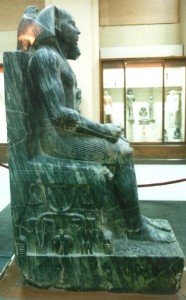
Knees in relation to those right angles, or 90 degrees, relative to horizontal / vertical. indicative of.
Another indication of ‘student’ as opposed to ‘adept’ = 'Knee' symbolism, [ key ]. Notice Khufu...one hand on knee as opposed to the other two, [ explained elsewhere ]. Or the Phrygian cap of Greek/Persian fame. Wherever you look you will see those differences. Freemasonry a good example. Different ‘degrees’ represent different ‘knowledge’ levels. Which in turn represent different insigna/clothing worn. Just a different deviation from the normal headgear symbolism.
The 'head gear', or more importantly, the lack of it, gives clues as to Nefertiti's true 'purpose'. The 'flat top', of which unlike all other 'kings or queens' has nothing on top. Purposely, left 'vacant', i.e.,"Our only positive sighting of Nefertiti dressed in a Kingly crown comes from etc etc....."we must assume that she did wear this crown on at least one occasion, although as he [the artist] does not accord her kingly titles, it is again tempting to speculate that the artist may well have confused his royal crowns". [Chapter six, 'Nefertiti' / J. Tyldesley].
Head gear...Indicative of their 'status'. Even Hatshepsut, the queen pharaoh was no different. Only the 'status' of Nefertiti is 'missing'. That 'status' that has to worked out by the observer or reader. Same purpose as with the intentional flat 'top' of the great pyramid or the same of Glastonbury Tor. Something purposely left 'unfinished'. Or the 'flat tops' mentioned throughout, in the book 'New View over Atlantis', in relation to landscape symbolism. Mentioned elsewhere.

Fisherwoman or 'fish'?
Side note: {something hinted at}: " After the stress and shock of the sudden awakening to the fundamental error of separateness - after the lightening flash of true knowledge has toppled the crown off the Tower of Common Sense - as shown in the 16th Major Trump, there comes a period of calm and gradual growth. In the second stage which we considered in the previous lesson, there is a sudden and painful overthrow of the 'false' wisdom of the world, a momentary, but never-to-be-forgotten glimpse of reality, of the absolute unity of life. In the 'third' stage this new conception of the Oneness of all, begins gradually to unfold. What happens to this unfoldment, and the specific activities involved therein, we may discover from the study of the 17th key of the Tarot....This picture develops the esoteric meaning of the Hebrew letter Tzaddi, named the ''fish hook''....That which pulls the 'fish' {Nun, i.e.,14th letter} OUT of Water {Mem, i.e., 13th letter}….''To hook'' is to draw, to entice, to procure....Has a particular application to the Christian aspects to the Ageless Wisdom, i.e., Jesus chose fishermen for disciples, and promised them that they should become 'fishers of men'...." [Pages 96/159 of the book by P. F. Case. Vol 1]. Try ''153'' and/or ''Moses''.

'Apron'?
Side note: ''The Sycamore tree did not only created a clear line of vision for Zacchaeus, 'it helped him to rise above the crowd and see the Lord clearly....

Division?
It placed him in the right position for the invitation that would follow. Jesus told him to come down for he was coming to his house!''
Coming / Going.
Side note: "The Betsey B. Creekmore Special Collections and University Archives at UT Libraries has multiple copies of this rare Bible housed in their collections. The Geneva Bible, also known as the “Breeches Bible,” was first published as a whole in 1560 and was the first to be divided into verses. It is called the Breeches Bible because its wording of Genesis 3:7 reads, “Then the eyes of them both were opened, and they knew that they were naked, and they sewed fig leaves together, and made themselves breeches” (instead of the usual translation as aprons). A 1599 Bible was given to UT by Mrs. J. Walker Leach of Louisville and her brother, William G. Hoffman, as a memorial to Mrs. Leach’s late husband, John Walker Leach."
'Trousers'?
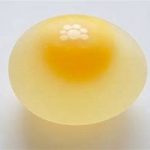
''Essence''?

Sycamore GAP. N/W boundary of Europe. AND/OR: ''The Sycamore tree not only created a clear line of vision for Zacchaeus, 'it helped him to rise above the crowd and see the Lord clearly. It placed him in the right position for the invitation that would follow. Jesus told him to come down for he was coming to his house!''
And/or: {from a different perspective: an inquiring one}:"And it is the 14th in the series, it means a new product, the mystical 'fruit' of a new age {''sycamore?} …..The 14th letter of the Hebrew alphabet = N, spelled Nun in that language. Its literal translation is 'fish', {fruit or progeny}. In the Bible story Joshua was the son of Nun {'higher' Self} and Joshua is the origin of the Latinized form, Jesus. Therefore Jesus also means fish.....Hiram Butler's theory appealed to him and he began his researches along that line, finding at last God, Word, seed, fish, Jesus and progeny are words synonymous in meaning, and when understood from their etymological derivation, will unlock {'bolted?'} the door of the Inner Mystery. He discovered that 'esse', the substance of 'being', the elixir of life - in other words the brain or life substance - is the protoplasmic seed material which is found to be the possession of every human being. The Herculean task or 'great work' which every one must perform, eventually, is the purification and perfection of this material, for it then becomes the Christ or Holy Oil." [Page 15 'The Zodiac and the Salts of Salvation' / Inez Perry]. " [Page 14 'Zodiac and the Salts of Salvation'].
Question. What does it all say for the word and meaning of 'Moses'?

Memnon. Anima or animus? East or west?
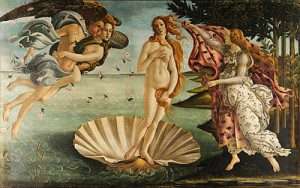
A beginning or end? What are the common factors?
And/or: ''The egg, {swht} is an image of the human egg whose body, the only visible part, makes us forget other casual factors, energetic or spiritual, as well as their 'pre-existence' as substance and their existence post mortem. The whole becoming of man and the phases of his metamorphosis....it comes about little by little through an alternation of build-ups and break-downs, in the course of which the antagonism between dissimilar elements diminishes....progressive transformations of 'gross' into 'subtle' {hewn/unhewn? and/or Sarson/Blue stones?} - provided they find at each stage the 'leaven' that works the change....'Then the earthly life is a moment in the life of my egg' Her-Bak asked...." [ Page 188/9 'Her-Bak: Egyptian Initiate'].
Try ''leaven'' to add to THAT mindset.
''The number 1728 is also known as the Great Gross.'' ['The Chase'].
''A gross refers to a group of 144 items (a dozen dozen or a square dozen, 122). A great gross refers to a group of 1728 items (a dozen gross or a cubic dozen, 123). A small gross or a great hundred refers to a group of 120 items (ten dozen, 10×12).'' [Wiki].
''Onehundred and twenty''.
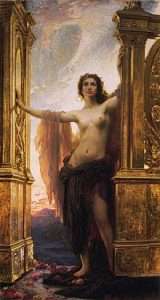
Goddess of Dawn.

The Islote de Sancti Petri is a small barren island belonging to the municipality of San Fernando, Cádiz in the province of Cádiz and the autonomous region of Andalusia, Spain. It is close to the coast and 16 kilometres (10 mi) south of Cadiz city. For many years, the island was a restricted military zone, but it is now under the control of the Spanish Environment Ministry. In the first century BC, the Greek historian Strabo mentioned in his book Geographica that the Tyrians founded Gadeira, building a sanctuary to Melkart, known as Hercules to the Greeks, in the eastern part of the island and the city in the western part.
"In Greek mythology, Memnon (/ˈmɛmnən/; Ancient Greek: Μέμνων means 'resolute'[1]) was a king of Aethiopia and son of Tithonus and Eos. As a warrior he was considered to be almost Achilles' equal in skill. During the Trojan War, he brought an army to Troy's defense and killed Antilochus, Nestor's son, during a fierce battle. Nestor challenged Memnon to a fight, but Memnon refused, being there was little honor in killing the aged man. Nestor then pleaded with Achilles to avenge his son's death. Despite warnings that soon after Memnon fell so too would Achilles, the two men fought. Memnon drew blood from Achilles, but Achilles drove his spear through Memnon's chest, sending the Aethiopian army running. The death of Memnon echoes that of Hector, another defender of Troy whom Achilles also killed out of revenge for a fallen comrade, Patroclus."
Continued: ''The wealth of Tartessos was legendary, and flowed from its metal resources....Tartessos was ruled by a famous king, called Arganthonios, whose name seems to come from the Celtic word for silver, and who was said to have enjoyed an impressive long life....Who ruled for 'eighty' years and lived for 120 years. 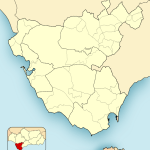 Later writers, including Pliny the Elder, would extend this to an even more impressive '150' years....It is also associated with the legend of Hercules - and, in fact, this is why we still refer to the Strait of Gilbraltar as the Pillars of Hercules....Described by Arrian as an ancient Phoenician town, containing a temple dedicated to Hercules {of Tyre}. And Tartessos also became part of the myth of Hercules - who travelled across Europe to capture the cattle of the monster {'giant'} Geryon, described by some as king of the Tartessians.'' [Page 238 'The Celts' / A. Roberts].
Later writers, including Pliny the Elder, would extend this to an even more impressive '150' years....It is also associated with the legend of Hercules - and, in fact, this is why we still refer to the Strait of Gilbraltar as the Pillars of Hercules....Described by Arrian as an ancient Phoenician town, containing a temple dedicated to Hercules {of Tyre}. And Tartessos also became part of the myth of Hercules - who travelled across Europe to capture the cattle of the monster {'giant'} Geryon, described by some as king of the Tartessians.'' [Page 238 'The Celts' / A. Roberts].
Question. What about the opposite 'pillar'?
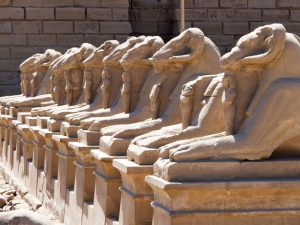
Horizontal horns?
And/or: "The cheerful brilliance of the morning lent youth to Earth's old bones, touched the peak with gold {'yellow' or 'orange'?}, gleamed along the river and put the gardens en fete. So fragrant {'smell/flower' link?} was the 'hour' that one forgot yesterdays heat {Aker link?]…..'I came to the temple at dawn' {heliacal rising?}, Her-Bak said, for you promised to tell me about akh, Ba and Ka. 'Ba, akh, and Ka are spiritual principles. Can plant and animal tell me what animates man?'. A swarm of honey bees buzzed around Her-Bak who tried in vain to get rid of them. 'Your fear', the sage said, 'makes them aggressive. Their instinct is better advised than your reason.

'Flower of youth'?
They could instruct you in the subject that holds your interest....'Bit' is the word for bee and for honey....this golden insect makes a golden drink which is the purest of foods assimilable directly without putrefaction or loss....Sage and disciple walked on in silence {'peak'?}. Leaving the gardens they took the avenue of the great Rams of Amon. The sunlight was growing fierce, the thick shade of a sycamore seemed a good place to stop....In the beginning is Ba and in the end...Ba spirit is the breath of everything....Ka like Ba shows three aspects....east-west....natural soul in the bodily form of Osirian character, subject to cyclic rebirth. Symbolised by the ram with horizontal horns. Lastly, Ba is represented by a bird with human head....symbol of the human soul, which goes to and fro { 'coming/going'} between heaven and earth {top-down only?}, to range about the body until purification of the Ka-djet allows the body to incorporate it {bottom up?}. This is the bird that is shown perched on Nut's sycamore, at whose feet {foot stool?} you are sitting. You must work this out." [Pages 174/8 'Her-Bak: Egyptian Initiate'].
''The tradition of 'well dressing' is associated with the Peak District.'' ['The Chase' / 2018].

'Great Canadian flag debate'.
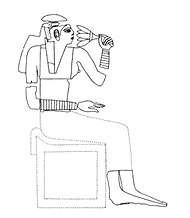
Side note: ''The seeds of field maples, Norway maples and sycamore trees are often known as helicopter seeds.'' ['The Chase' / April 2022].
Airborne and/or 'Chariot'?
A working example: Tutankhamun and his 'wife' {Ankhesenamun} in relation to the ''fullness of life'' / ''gathering'' / ''becoming'': represented with the sycamore tree. And/or: seventh and eighth oils in the 'august house of Heliopolis' = SEALED = ''beloved'' and ''knot'' symbology {i.e., southern Heliopolis}. [Pages 41-3 / and especially 132 {i.e., Lady of the Southern Sycamore + turquoise link to Hathor + horizon/East links: 'Egypts Anointing Mysteries' / A. Roberts].

Turquoise?

Common factors? Wings/handles?
''That's how in Christianity the sycamore became a symbol of clarity. In Judaism, it is the tree of life because it gives both fruit (the sycamore fig variety) and wood. In Egyptian mythology, the sun rose each morning from the sacred sycamore of turquoise that stood at the gates of heaven.''
A working example: "The Ivory Bangle Lady is a skeleton found in Sycamore Terrace, York in 1901.[1] She was a high-status adult female, potentially of North African descent, who died in York in the 4th century AD.[2] Her skeleton was found with bracelets, pendants, earrings, beads as well as a glass jug and mirror.[3] She appears to have originally been from North Africa.[4] A piece of bone inscribed with the words, "Hail, sister may you live in God" was found with her skeleton.[5][6]

'Handle'.
 The Ivory Bangle Lady was buried wearing ivory and jet bangles, a bracelet of blue glass beads, silver and bronze pendants, two yellow-glass earrings. A small, round glass mirror, a dark blue glass flagon, and an openwork, ivory inscription plaque were also included in the grave.[1] The plaque reads SOROR AVE VIVAS IN DEO ("Hail sister, may you live in God"), which is evidence for a Christian population in late Roman York. Whilst the plaque is clearly Christian, the existence of other grave goods and the alignment of the grave in a north-south (rather than east-west) arrangement strongly suggests that the lady interred was pagan, but had connections with a Christian community rather than herself being a Christian.[9]"
The Ivory Bangle Lady was buried wearing ivory and jet bangles, a bracelet of blue glass beads, silver and bronze pendants, two yellow-glass earrings. A small, round glass mirror, a dark blue glass flagon, and an openwork, ivory inscription plaque were also included in the grave.[1] The plaque reads SOROR AVE VIVAS IN DEO ("Hail sister, may you live in God"), which is evidence for a Christian population in late Roman York. Whilst the plaque is clearly Christian, the existence of other grave goods and the alignment of the grave in a north-south (rather than east-west) arrangement strongly suggests that the lady interred was pagan, but had connections with a Christian community rather than herself being a Christian.[9]"
Refresher: The Betsey B. Creekmore Special Collections and University Archives at UT Libraries has multiple copies of this rare Bible housed in their collections. The Geneva Bible, also known as the “Breeches Bible,” was first published as a whole in 1560 and was the first to be divided into verses. It is called the Breeches Bible because its wording of Genesis 3:7 reads, “Then the eyes of them both were opened, and they knew that they were naked, and they sewed fig leaves together, and made themselves breeches” (instead of the usual translation as aprons). A 1599 Bible was given to UT by Mrs. J. Walker Leach of Louisville and her brother, William G. Hoffman, as a memorial to Mrs. Leach’s late husband, John Walker Leach.
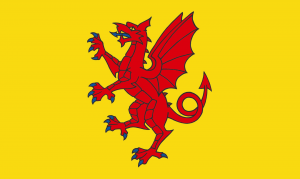
Ascending {'flying'?} serpent or dragon? Toehold? Into what? Green language? GET IT ! If you do then what does the 'loop' represent WITHIN THAT UNIVERSAL MIND SET?

The Sycamore Gap Tree or “Robin Hood Tree” is a sycamore tree (Acer pseudoplatanus) standing next to Hadrian's Wall in Northumberland, England. The lake of Crag Lough and the village of Once Brewed are nearby, as is the Twice Brewed Pub, useful for trekkers at days end. N.B. A boundary line/marker at the N/W TIP of Europe. 'Boiled' to enlarge.
Practical example: ''This beautiful sycamore tree sits nobly on top of Burrow Hill at our family's cider farm and can be seen from miles around.....It sits directly .on three mystical ley lines. It has 360 degree views of the Somerset countryside, the cider farm and all the orchards it rules over - the Somerset levels, Glastonbury Tor, Ham Hill and Blackdown Hills....It was a gift from father to mother when married....'' And/or: ''This tree lies on the skyline at the border of our land. When you arrive here you see it immediately to the south as you come out of the woods and cross the cattle grid and the start of pasture. This sycamore expresses a searching vitality that spreads wide against the sky. We built a look out tower next to it....'' [Pages 86/7 'Readers Digest' / Nov. 2021].
Razor edge?

Shepherd Kings?
Side note: ''Once Brewed is a village in Northumberland, England. It lies on the Military Road B6318. A motorist arriving over the B6138 from the east will see the place name shield "Once Brewed", while those coming from the west will read "Twice Brewed". It was reportedly Lady Trevelyan, Sir Charles' wife, who coined the hostel's unusual and much-loved name, suggesting that once-brewed tea was a more acceptable drink than the stronger stuff found at the Twice Brewed Inn nearby.''
Freemasons?
'Twentythree'?

Whats the primary colours for M/F?

Any shields?
"The Military Road is a name given locally to part of the B6318 road in Northumberland, England, which runs from Heddon-on-the-Wall (54.9974°N 1.7929°W) in the east to Greenhead (54.9820°N 2.5344°W) in the west."
Continued: An American sycamore tree can often be easily distinguished from other trees by its mottled bark which flakes off in large irregular masses, leaving the surface mottled and gray, greenish-white and brown. The bark of all trees has to yield to a growing trunk by stretching, splitting, or infilling. The sycamore shows the process more openly than many other trees. The explanation is found in the rigid texture of the bark tissue which lacks the elasticity of the bark of some other trees, so it is incapable of stretching to accommodate the growth of the wood underneath, so the tree sloughs it off.'' [Wiki].
'Milky Sap ' aspect?

Aspect of the 'eye'?
Side note: ''The cortex being a part of the human brain derives its name from the Latin for 'bark'...'' ['The Chase' 2018].
REFRESHER: "Gudea made offerings of honey and butter when the foundations were laid; when the building was finished an auspicious day was waited for, and when it came the image of the god was removed to the new temple, and Gudea sprinkled the ground with oil, and set out offerings of honey, butter, wine and dates, grain mixed with milk, food untouched by 'fire', for the gods." [ Chapter 3, 'The Sacred Bee'].
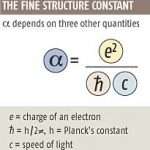
A 'marker' for future study?
Continued: The most obvious example of same, being the 'missing' capstone of the Great pyramid, as speculated upon in the book 'Pyramidology' by A. Rutherford. We all prefer to put our own individual ‘mark’ on things do we not. Especially things that are important. This subject is no different, [ implied by the same authors ]...and like any other aspect within any subject that can be both a positive and negative ‘attribute’ depending on the individual.
As proven by the example in Richard Dawkins book. ’The God Delusion’. In response to the book. Someone with an obvious esoteric ‘interest’ decided to give his ’expert’ opinion; in critique form; by way of... "Puffy pantaloons / ruffled flounces / and exotic leathers". All due to master ‘Courtiers’ esoteric overkill of his adept knowledge in the realms of "Imaginary fabrics"! Mr Courtiers other quote..."The dangling genitalia" one that led to...’The Flying Dangling, [ no doubt due to excessive spaghetti intake ]...Genitalia Brigade’ {alias?}.
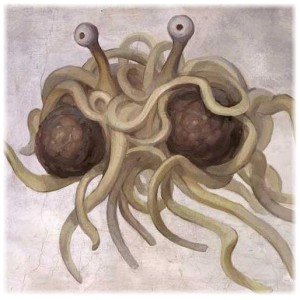
The Flying Spaghetti guy. Meat balls optional? Question. Bragging or complaining? Take into account gravity, relative to size. Neutron star. Sirius B? Maybe Mr Temple really is on to something. Could aliens REALLY be trying to tell us something. A revelation?
One can't help but wonder though if maybe synchronicity once again had a hand in the above. Sometimes we get what we ‘go looking for’. Although as indicated by the recent meetings of those ‘two alternative views’...maybe that circle is now almost complete.
Another example of same; if only for this reader; could be within Mr Wilcocks book 'The Synchronicity Key', especially chapter 21...speculation about cover ups within military and NASA organizations because of their possible connections to Freemasons. The word 'Cabal' he begins to use as a 'metaphor' for anything negative from as early as chapter five. Strangely that same word that figures predominately to his overall 'plan', cannot even be found in the index. Indicative of ones 'single line' of perception to it. Only in its negative light.
No attempt to give the same amount of time to understand 'its' positive. That source of 'negativity' therefore has to be from hearsay.....surprising considering the underlying research and message of the book. Proving the necessity to work through those first impressions. The 'esoteric' subjects listed are only understood in the exoteric sense. Their most basics. The want need to use a scapegoat in order to project the overall positive aspect of the books message is paramount. So paramount, that the author; if only for this reader; has not become aware of it himself.... but synchronicity has.
As already mentioned, in such cases, we always find what "we go looking for". That applies as in all things.....both ways. Consciously or otherwise. The books overall 'impressions'; for this reader; however are certainly positive. Considering the author has only 'touched' on this 'hidden' subject, it seems remarkable how his research into all things have arrived at the same answer, especially in the Macro sense, as explained elsewhere.

What would the remedy be for such a weight ''upon ones shoulders''?

Resting on ones shoulders?
Hopefully that negative aspect to his research can be enlightened before it takes hold, before another 'level' is added. Hopefully it becomes nothing more than a 'wobble'....while 'stood upon the shoulders' of those that have gone before, the correction of which i am sure will not take 25920 years.
Of all the books this reader has read, two of the most interesting ones have been written by Mr Wilcock. So fingers crossed. [For additional information on the same subject, i.e.,Freemasonry, should the reader wish to investigate further, in order to seek clarification one way or the other, could be, amongst others {mentioned within}, chapter 41, 'The Sacred History].
Referring back to Mr Dawkins example. Most authors of this subject however would have replied very differently. In the positive sense. Not through any false modesty or humble sentiments; but simply because esotericms symbolism for anything that is 'pretentious', regardless of profession or position...as it is in any walk of life...whether two or four legged is...the Peacock. That self proclaimed strutting one. As indicated by any good ‘Symbolism book’. As well as ones obvious intuitive sense ’of same’.

An imaginative or objective eye?

A Predynastic pottery vase from UCL’s Petrie Museum. Its decoration includes a depiction of a shrine marked by the Bat standard...Bat’s attributes and imagery were subsumed into the nature of the goddess Hathor, and her emblem became a common form of decoration for the column capitals in Hathor’s temples. In her nurturing role, Hathor was envisaged as a cow with the sun’s disc resting between her lyre-shaped horns, and at Deir el-Bahri the Hathor cow is shown wearing a Bat-amulet around her neck. At the top of the Narmer Palette, the king’s serekh is protected by the head of the cow deity Bat (‘Female Spirit’). The cow-eared human face surmounted by long, inward curving horns appears on the standard erected over shrines depicted on Predynastic pottery, often accompanied by female ‘dancers’ whose arms are raised in imitation of Bat’s horns. The same standard represents the Seventh Upper Egyptian or Sistrum Nome, and the Bat emblem often topped the handle of the sacred rattle.
Examples indicative of same...within that broad spectrum {'to open'?} of which much can be learned just on the following books alone, [ especially the final one ]...about those ’general ideas’...concerning the understanding of an overall subject... ‘Dictionary of symbolism’, by H. Biedermann. Or ‘Secret signs and Symbols’, by A. Nozedar. Or 'The Symbolical Language of Ancient Art and Mythology' by R. Knight. Or 'The Book of Symbols' by Taschen. Or ‘The Lost Language of Symbolism’ by H. Bayler. Or 'Symbol and Archetype', by M. Lings. Or 'The Lotus Fire: A Study in Symbolic Yoga' by G. S. Arundale. Or 'Symbols of Sacred Science', by R. Guenon. Or 'Fundamental Symbols' by same. Or ‘Illustrated Encyclopaedia of Traditional Symbols’, by J. Cooper. Or ’The Tao of Symbols’, by J. Powell...and finally ‘Man and his Symbols’, by C. Jung.
"To Jung, the imagination was the key to the secret of nature in alchemy, and the secret of the self in analytical psychology..." [Extract from the book by M. Katz].
That duality again i.e., subjective/objective.
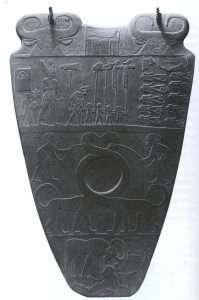
Narmer Palette. 'T' shape between the horned cow heads.
Side note: The horns hieroglyph wp represented the concept of ‘to open’, as in the name of the ancient jackal-god Wepwawet (‘the Opener of Ways’), who guided the deceased on the paths of the netherworld. His standard may be shown preceding the king into battle, as on the ivory label of the First Dynasty King Den from the royal cemetery of Abydos. The horns glyph was also used in words associated with opening or separation. Childbirth was described as ‘opening the womb’, while the Opening of the Mouth revivification ritual performed on the dead body may derive from the midwife’s stimulation of a child’s first breath. In the Litany of Ra, inscribed in the burial chamber of Thutmose III (KV34), one of the manifestations of the sun-god is portrayed as a cow-headed spirit named as the one ‘who causes to breathe’.
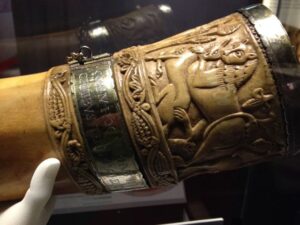
Made of ivory. To 'grip' or kill?
The term wepet renpet, ‘the Opening of the Year’, refers to the beginning or first day of the Egyptian New Year, and, in the sense of ‘divide’ or ‘distinguish between’, wp suggests judgement or decision too.
'Hypotenuse?
The wp hieroglyph was most obviously used for ‘horns’, and by association, ‘brow’ or ‘forehead’, but it also signified the top of the head and what was worn on it, such as a wig or headdress. From New Kingdom times, the Apis bull, worshipped from as early as the First Dynasty as the earthly incarnation of Ptah of Memphis, was shown wearing the sun-disc with a uraeus serpent between his horns. The same insignia is worn by the Mnevis bull, the manifestation of Ra of Heliopolis. This solar significance was acknowledged by Akhenaten, who decreed that the bulls of Ra should be buried at Amarna, though no Mnevis burial has been found there. The horned disc, one of the most ancient of divine crowns, was worn by several goddesses, significantly Hathor and Isis.
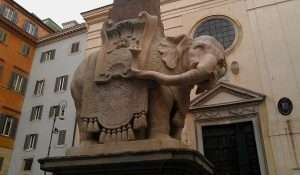
'Prince' link?

Elephant and Castle is an area of South London, England, in the London Borough of Southwark. The name also informally refers to much of Walworth and Newington, due to the proximity of the London Underground station of the same name. The name is derived from a local coaching inn
All taken together with both volumes of another profoundly seminal work...’Insights on the Scriptures’/Watch tower. Together with that most important aspect of all. The proverbial ’Pinch of Salt’. Can give the reader that necessary framework, [ ‘Web’ symbolism. Explained elsewhere ]. In order to understand that final subject.
'Celtic Towers of Silence'.
Remember that final one is that familiar subject that all paths seem to lead to. Explained in as a plain a language as Mr Jung could muster. Still explained though in psychology terms. If you can see through that same subject and its terminology. Those symbols may have a deeper meaning. Think about it, i.e., in relation to the ‘divine’ bit, i.e., You cannot have one without the other...but one has to come before the other. Which implies a direction, [ in relation to a 'potential'...within a ‘river’,i.e.,medium of ]. Which may have relevance to ‘the arrow of time’? i.e., Space/time or Time-space?

Movement? In what 'direction'? Arrow of time? OR a 'reversal'? Try ''137'' to enlarge.
"Time- Space" as speculated on within that magnum opus of research and practical imagination with...''Space - Time.'' Its constant being 'movement' = the ''Source field.'' That led to the authors very own ''eureka moment.'' Understanding this subject gives a greater depth to that hypothesis, and vice - versa. [Chapter 13, 'The Source Field Investigations']. i.e.,''top/down'' and/or ''bottom up''. Representational of?
Refresher: A 'working' example: "I will add only one more thing: Time is breath - try to understand this."...Later on one of G.'s Moscow pupils added to this that, speaking with them once of cosmoses and of different time in different cosmoses, G. had said that the sleep and waking of living beings and plants, that is, twentyfour hours or a day and night, constitute the 'breath of organic life'." ['In Search of the Miraculous']. Try ''breath'' and ''cosmos/es''.
''Breath'' in relation to that universal 'bit'. ''Cosmoses'' in relation to 'framework'. - ongoing; day by day. Fact or fiction. A possibility or not?
"All this creation that springs from above level 10 [Hebrew equivalent - Ain Sof -] is imperceptible to the physical consciousness of man. It is invisible except through inner experience that always belongs to other space-times." [Extract taken from 'The Experience of Eternity' by J. Dubuis]. Link to ''incarnation'' and ''reincarnation''. The word 'springs' also a link to 'fountain'.
Analogy {simplified?}: "Everything is connected. There is only one Reality and one God, but there are many, many ways that the one Reality can be interpreted. In fact, the number of ways to interpret the Reality are just about infinite. There are certain realities that many people have agreed on, and these realities are called levels of consciousness..." ['The Ancient Secret of the Flower of Life' / D. Melchizedek. Vol 1].
''God'' in relation to that universal common 'bit' . ''Reality'' in relation to 'framework'. Therefore when put together = those different ''levels'' - which implies a direction? See it?

As ONE example: Static or dynamic? {i.e., in 'movement'} All as a means....?
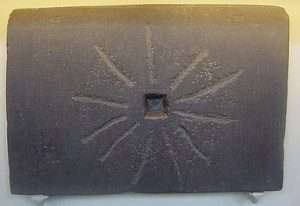
'Eleven' to enlarge.
Same thing but from a different perspective - but take note from a perspective that has been 'around' since the dawn of human kind - "The UNmanifest [link to the word ''fall''] is pure existence. We cannot say of IT that it is not. Although it is not manifest - it is. It is the source from which all arises. It is the only 'reality'. It alone is substance. It alone is stable. All else is an appearance and a 'becoming'. Of this Unmanifest we can only say IT IS. It is the verb 'to be' turned back upon itself. IT is a state of pure 'being' without qualities and without history. All we can say of IT is that it is not anything that we know, for if we know anything it must be in manifestation for us to know it, and if it is in manifestation it is not unmanifest. Therefore the very fact that we can know it proves that it is not unmanifest. The UNmanifest is the Great Negation; at the same time it is the infinite potentiality which has not occurred. It is best conceived of under the image of inter-steller space...Therefore you may think of the UNmanifest as inter-steller space; and of the Logos [explained elsewhere] as a Sun surrounded by His solar system of planets and of the emanations of the Logos as Rays [explained elsewhere]. The UNmanifest is the only unity. Manifestation begins when duality [explained throughout] occurs. The prime duality is 'space' and 'movement'. [Chapter one, 'The Cosmic Doctrine' by D. Fortune]. Think about in relation to something 'unknown' becoming 'known'. Representation of.
''It is the verb 'to be' turned back upon itself''. What symbol represents BOTH those {principles?}. Question. A reversal of the 'arrow of time' ?

The most ancient symbol for ''horizon''. Two stork birds flanking the Ibis. Division or multiplication? Balance of the 'three'?
Analogy?..."What science doesn't teach us - at least not yet - is that at one time we may have had 12 strands of DNA encoding that much more information. 'Reconnecting strands' implies that rather than continuing to evolve forward in a near -linear fashion, the human race will benefit by simultaneously reaching back in time and bringing forward certain aspects from when we were a more complete people. That's part of what's happening now with The Reconnection: We are reconnecting with who we once were..." [From the book by Dr E. Pearl. Enlarged elsewhere].
Think about it in relation to what this overall subject defines/represents as a U-turn and or...
"...simultaneously reaching back in time and bringing forward certain aspects..." Incarnation/reincarnation link? Question. Coincidence or a meaningful one?
Fact or fiction. A possibility or not?
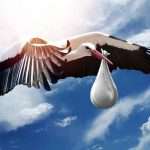
'Multiply'?

Bakers dozen?
Side note: "You have three guesses: why does the proverb say ''Good things come in threes'', and why does the psychologist think that 3 restores the damaged 2 caused by dividing? The reason , as Ludwig Paneth has stated, is that the triad leads to a new integration, one that does not negate the duality preceding it but rather, overcomes it, just as the child is a binding element that unites the male and female partner." [from the chapter: The Embracing Synthesis {3} / 'Mystery of Numbers' / Annemarie Schimmel].
Side note: ''COPAN'' = the 'three' of something - on the WEST coast. Try ''PAN''.
Other examples elsewhere, i.e., Zoroastrian equivalent. Try Part 3.
Those 'eureka' moments that within this subject must have their own symbols. To define that inner working. As a representation of it. A representation of that 'process'. Question. What is/are those symbol/s?
 Dalis. Melting clocks. ''A representation of a collapse of our notions of a FIXED cosmic order.'' [Wikipedia]. i.e.,the tail end of something, and the beginning of something else?
Dalis. Melting clocks. ''A representation of a collapse of our notions of a FIXED cosmic order.'' [Wikipedia]. i.e.,the tail end of something, and the beginning of something else?
Refresher..."The human's progress is that of one who has been given a 'sealed' book, written before he was born. He carries it inside of himself until he 'dies'. While man is subject to the movement of time, he does not know the contents of that concealed book." [ Hakim Sanai]. Taken from the book 'The way of the Sufi' by I. Shah.
Like all else, everything has its opposite. The peacock symbol, and what it represents, can be more of a negative than a positive, depending on the individual; which if continued along; ['path' symbolism] takes one further' from [C] rather than closer to it, i.e., Negative/dark over Positive/light.
In its physical form represented as a 'tunnel' as the one in Seti first tomb. The longest and 'deepest' in the valley of the 'kings'. Those three snakes pictured on his tomb walls. Indicative of the understanding of 'something'... A/B in relation to 'C', [ Descending/Ascending symbolism. Explained elsewhere ].

''The search for higher ground may be metaphoric for the search for a higher spirituality.''

Hopi culture: ''Possible turtle people emerging from a horizontal crack in the rock...above a copulating couple together with a zigzag snake ending in a spiral.'' [Petroglyph at V-Bar-V-Ranch: 'The Orion Zone' Page 140].
'Broad / wide' to enlarge.

 Side step: The New York Stock Exchange Building (also NYSE Building) is the headquarters of the New York Stock Exchange (NYSE), located in the Financial District of Lower Manhattan in New York City. It is composed of two connected structures occupying much of the city block bounded by Wall Street, Broad Street, New Street, and Exchange Place. The central section of the block contains the original structure at eighteen Broad Street, designed in the Classical Revival style by George B. Post. The northern section contains a 23 {'twentythree'} -story office annex at eleven Wall Street, designed by Trowbridge & Livingston in a similar style.
Side step: The New York Stock Exchange Building (also NYSE Building) is the headquarters of the New York Stock Exchange (NYSE), located in the Financial District of Lower Manhattan in New York City. It is composed of two connected structures occupying much of the city block bounded by Wall Street, Broad Street, New Street, and Exchange Place. The central section of the block contains the original structure at eighteen Broad Street, designed in the Classical Revival style by George B. Post. The northern section contains a 23 {'twentythree'} -story office annex at eleven Wall Street, designed by Trowbridge & Livingston in a similar style.
The marble facade of 18 Broad Street contains colonnades facing east toward Broad Street and west toward New Street, both atop two-story podiums. The Broad Street colonnade, an icon of the NYSE, contains a pediment designed by John Quincy Adams Ward and Paul Wayland Bartlett, depicting commerce and industry. The facade of 11 Wall Street is simpler in design but contains architectural details similar to those at 18 Broad Street. Behind the colonnades at 18 Broad Street is the main trading floor, a seventytwo-foot-tall (22 m) rectangular space. An additional trading floor, nicknamed the Garage, is at 11 Wall Street. There are offices and meeting rooms in the upper stories of 18 Broad Street and 11 Wall Street.
The NYSE had occupied the site on Broad Street since 1865 but had to expand its previous building several times.


light oxen: "I bring up an individual type as a point of departure to talk about. The one {'emotion'?} that is strongest will pull you first." [Page 4 'Stopping and Seeing' / Translated by T. Cleary].
As seen from a different perspective?..."Non-identification pulls us out of our black hole of distorted self interest which gives us tunnel vision and keeps our psychology in the basement of its potential. It is a very difficult work as anyone will quickly discover...It demands moment by moment remembrance of Work idea's, of one's higher aims, and a constant return to inner separation from our automatic reactions and the tyranny of false personality and its infinite variety of self-gratifying desires." ['The Wisdom of the 4th Way']. Continued elsewhere.
Hebrew equivalent. The word Daath, i.e.,''Hebrew word for 'knowledge.' The so called 'Invisible Sephirah' on the Tree of Life. Daath is not really a Sephirah, but rather a conjunction of the energies of Chokmah and Binah. It can be likened to a passageway {bridge?} across the abyss." [Glossary to the book 'The Philosopher's Stone.' Mentioned elsewhere].
'The Waters of the Gap' by R. Stewart.
REFRESHER..."The 'communicating' bridge between the Neter and the human condition is what de Lubicz called the ''innate intelligence,'' and which the Egyptians called the ''intelligence of the heart.'' [Same chapter, same book].
N.B. The author of 'Journey into the Light' defines it as ''certitude of the heart''. [Chapter 12].
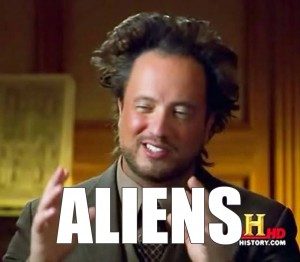
Giorgio who believes that all that 'information' {keys/correspondences} throughout the course of the ages relates more to actual aliens {green ones?} than any of the ''spiritual stuff''. Question. Who created that hair do? Someone {something?} ''not of this world''? Red or Green ones?
"The word 'spiritual' should be associated with the word 'eyes'. This is a reference to the eyes of the mind or heart. To 'see' is to understand." [From the book by T. Nottingham].
Quran example of same [in part]..."This Book we have bestowed upon you, from on high in order that you might bring all mankind, by their sustainer's permission, out of the depths of darkness into the light: onto the way that leads to the almighty, the one to whom all praise is due ....And never have we sent forth any messenger otherwise than in his own peoples tongue, so that he might make the truth clear to them, but god lets go astray him that wills to go astray, and guides him that wills to be guided....for he alone is almighty, truly wise". [14:1,4-4].
Another example, the relationship between apprentice/adept equivalent... in the Cathar gnostic 're-ligion', i.e.,the perfecti / credente in relation to the "consolamentum", [Roman Catholic equivalent-'The Sacraments',]..."that it would at the very least, bring progress on the chain of being towards it."[Emphasis, this readers. Chapter two.'The Master Game'. Mentioned elsewhere].
Side note: Something hinted at - in relation {not reference} to a 'child' that was supposedly smuggled out of the Cathar fortress in France prior to its dissolution: ''Parson's began his career by identifying himself as the 'magicKal' son of Aleister Crowley, but he took his self-deification further. He decided to invoke a ''counterpart to the 'god' Horus'' to balance the work of the 'Beast'; this was his third great work....to achieve this he hired a young 'sailor', L. Ron Hubbard, to act as his 'seer', modelling his initial work on the Dee-Kelly team. With young Hubbard's help he conjured up Marjorie Cameron to act as his 'scarlet woman' - and they performed a Working to create the living counterpart of Horus. Parsons never found the 'human child' that the Working was 'designed' to produce, and his life after this working was somewhat dismal...." [Page 298 'Overthrowing the Old Gods' / Don Webb].
Get into that mind set to 'see' the parts within the whole.
Continued: Or the Hermetic equivalent in relation to higher/lower..."God saw that of all the living creatures, men alone had need of reason and knowledge"......"in the hope of immortality, and gave them power to strive toward it",[chapter nine. 'Master game.']. Or more importantly, in relation to the 'fall'....
Side note: Orion - the Far Strider. As a means?
"The imagery used to tell of the fall may differ from religion to religion, but the loss incurred is always the same, that is, loss of centrality and therefore of contact with the vertical axis, which connects this state with all the higher states. 'Original sin' is nothing other than the incapacity, by 'reason' of that loss, to be, what the Taoists call 'True Man', that is, to fulfill adequately, mans primordial function of 'bridge-maker' or mediator between this world,[horizontal] and all that lies above it. [i.e.,'vertical']. But the fall was not 'absolute', nor has man been replaced as mediator by any other creature. There is therefore still only one criterion for judging the worth of any individual...and that is his nearness...or far-ness...with regard to the center, and the intensity...or laxity...of his aspiration to transcend his 'fallen' state". [Emphasis, this readers. Chapter three. 'The Eleventh Hour'. M.Lings].

Off center?
Together with..."Every human being must, through the love of 'god', strive [key] to 'be what he is', to disengage himself from those artificial superstructures, which 'disfigure' him and which are non other than the traces of the fall, in order to become once again a 'tree' whose root is liberating certitude and whose crown is beatific 'serenity'. Human nature is predisposed towards such 'knowledge', of its 'divine' model.'' [Emphasis, this readers. Back cover. 'To Have A Center'. Frithjof Schuon. Think about it, i.e., the 'middle way' ...by way of horizontal/vertical...in relation to...the 'eternal apprentice', [aspects of, i.e.,those positive/negative ones].
OR....in relation to the 'fall' and the possibility of a 'return' journey..."Gerard Zerbolt, ....... describes the psychological consequences of this situation"....."By the law of descent, we are no longer what we were intended to be. We have lost our way, forsaken and forgotten "the mountain" ['Jerusalem' link?] our home, and live in the valley, of another and distant land. Therefore a great labor is necessary in order to return. In truth, the distance between the valley of tears, and the place in which the 'lord' once placed you, namely the state of your uprightness [vertical link], is great and beyond measuring. And that is why a great ascending is necessary, or rather, in fact, many ascending's. There is a need for a great labor [twelve labors of Hecules link], if you wish to return to that place....indeed as the holy Gospel says, you have gone away into a very distant region.'' [Chapter six. 'The Brotherhood of the Common Life'. Mentioned elsewhere].
''Afar''?
Mountains low. Valleys high?
'Twentythree'?
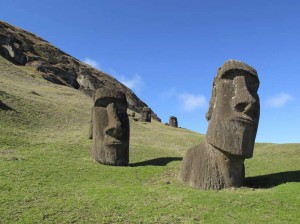
Ascending or descending while looking out {horizon?} across the 'sea'? Question. Would that be - inner or outer contemplation? Esoteric/Exoteric? And/or: ''live coals'' in relation to volcanic ash.
"Error runs down an inclined plane, while truth has to laboriously climb its way up hill.'' Benefits of. Enlarged elsewhere.
Analogy: "Everyone has an inner landscape: 'the way to this place - and the place itself - have been unknown for a long time, and it is hidden from the greatest part of the world. But notwithstanding that it be difficult and laborious to discover this way and place, yet the place should be sought after', wrote Thomas Vaughan in his 'Lumen de Lumine'...."
Think about it all in relation to that universal ''bit''.
And/or: "He guides to himself all who turn to him....those who have faith and whose hearts find satisfaction in the remembrance of god....for truly, in the remembrance of god, hearts find rest.'' [Quran, 13:28] ......
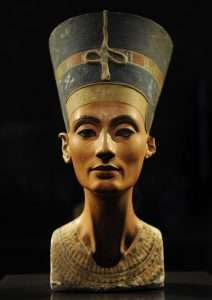
'The beautiful Lady has come.' Real or symbolic? A "remembrance"? FLAT top?
Together with: "Here we have one of the foremost principles of the Quran and of the most essential truths for a human being to realize. Nothing can satisfy the 'heart' as much as the 'remembrance' of god. When we turn in the direction of Allah, the ultimate reality, we will be guided to his presence and our hearts will be satisfied, tranquil, still. The human heart was created restless, always searching for some objects to devote itself to and love. In everyday life our hearts are likely to be distracted by various desires, attractions and concerns. With the remembrance of 'god', however we are re-connected to the divine center and all other desires and concerns fall into the proper perspective.'' [emphasis, this readers]. Think about it. i.e.,for this reader that framework gives a 'fully' meaning to the above quote's. [Page 150. 'The Book of Revelations',by Kabir Helminski : 'a source book of selections from the Quran' with interpretations by Muhammad Asad, Yusuf Ali, and others].
'Mans Search for Meaning' / Viktor Frankl.
Sufi quote. "The truth is also seeking the seeker." Understanding that 'connectedness' gives that quaint, clever 'pun' more depth. Therefore a possible 'interpretation' to it. A logical one, i.e.,Hermetic analogy..."The forces do not work upward from below, but downward from above. The things in 'heaven' receive no benefits from the things on earth; but the things on earth receive all benefits from the things in 'heaven'. ['Giordano Bruno and the Hermetic Tradition', or Chapter nine. 'The Master game.'/Hancock+Bauval].
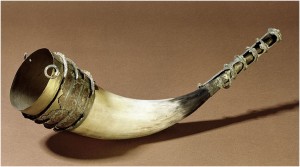
Horn of Plenty?
As it does to the following {i.e.,from a different perspective}: "If it is asked why the gods needed food if they were immortal, the reply is that they were not believed to be immortal unless they feasted on heavenly fare - the nectar and ambrosia of the Greeks, the mead of Teutonic mythology, the soma of India etc etc." ['The Sacred Bee' / H. Ransome]. See it?
Side note: Grave goods found near Sittingbourne in a place called The Meads. Cut glass cone shaped beakers found in the shape of a horn. Narrator speculates as to why they are not free standing 'vessels' {i.e., symbolic intent only}. Try ''glass'' / ''horn'' / S/E / 'beaker'' etc., to get into a mind set beyond: ''love of feasting, love of mead''. ['Digging for Britain'. Series 1. Episode 3].
And/or: Alice Roberts {'Britain's Biggest Dig' / 2020} finds ''extremely strange'' artefacts buried with 'owners'. A 'brick' inside a skull is a common find {'philosopher's stone'?}. A marmalade jar another {'glass' and 'sweet' link}. A wine goblet - without the base - is also found in the course of the digs. Symbolic intent only?
'Birthing' bricks?
Denderah to enlarge.
Question. Would a brick sink or float? That link to what a 'wine glass' represents. Did any of those individuals belong to a ''mystery club''? Same one? Understand subject material to gain a possible insight.

Head/Feet = Aries/Pisces? Out with the OLD, in with the New? Reversal of direction? {rebirth}.

'Spirit' or 'Soul' or both? Wedding ring on 'toe'?
And/or: What is termed Deviant or Irregular burials found in St. Neots {near Cambridge}, the head removed and placed at the feet. A pot placed near where the head should be i.e., top of the spine. All in the Roman period. ['Digging For Britain: Headless Romans and Anglo Saxons' / S10 EP6].
Fire and Water which and why?
And/or: The 'headless' one in relation to 'Chief of Westerners' at Abydos {i.e.,the head of Osiris} = ''rebirth mysteries'' = ''has to be restored to rise up'' = Khonsu + ''swells Up'' link {i.e., moon link} = Great Bear = ''mooring post held by golden chain'' + ''ancestors'' link. [Pages 27-33 'Hathor's Alchemy'].
Left turn / Right turn in relation to Precession. Which and why?
''The Big Dipper is a pattern of the seven stars Alkaid, Mizar-Alcor, Alioth, Megrez, Phecda, Merak, and Dubhe. Together, these stars take the form of a ladle {'POT'?} with three stars, Alkaid, Mizar-Alcor, Alioth as the handle and four stars, Megrez, Phecda, Merak, and Dubhe as the bowl.''
''Great Stretcher'' to enlarge.

Blind date - with Venus and Libra. What does "five" represent?
"The man most severely punished on the Day of Resurrection is a scholar whom god did not benefit by his knowledge.'' - "This statement shows that in this section Ghazali is not just generally attacking the self-satisfaction of the learned, but a definite doctrine of the philosophers: evidently the Neoplatonic teaching that posthumous salvation is attained through the development of the individuals intellectual potentialities while on earth, ultimately producing 'contact' with the active intellect." ['Al-Ghazali - Letter to a Disciple' / T. Mayer. Includes emphasis].
Pretentions?
Understanding the above {defines?} such quotes as..."The Ox{ford} Dictionary of the Christian Church defines 'Grace' as ''the supernatural assistance of god bestowed upon a rational being with a view to his sanctification. But this..." [From the book 'The Fourth Dimension: A Christian Approach to the Occult' by A. Duncan]. Try ''grace'' while thinking about its ''connectedness'' in relation to 'horizontal/vertical' symbolism. Purpose of - relative to a 'journey'. The full/whole one.
Question. Fact or fiction. A possibility or not?
"The truth is that man gets the fruit of his actions from 'above', and the fruits correspond to the nature of his actions." [Part one, 'Play of Consciousness'. Mentioned elsewhere].

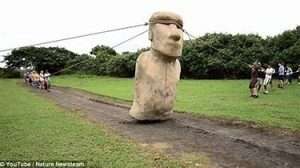
''He who walked with god?'' {mind set?}. A ''Belly'' full of something?
Hebrew equivalent..."Remoteness from 'god' is, of course, not a matter of physical distance, but a spiritual problem of relationship. The person who is not going along the right path is not further away from god but is, rather, a man whose soul is orientated toward and relating with other objects. The starting point of repentance is precisely this fulcrum point upon which a person turns himself { or herself} about, away from the pursuit of what he graves, and confronts his desire to approach 'god'. This is the moment of conversion, the crucial moment of repentance." [Emphasis this readers. Chapter 8, 'The Thirteen Petalled Rose'. Mentioned elsewhere]. Recall what 'repentance' signifies, relative to a 'u-turn'.

''Possible turtle people emerging from a horizontal crack
 And/or: "There once was a woman who long ago had learned to be a turtle, withdrawing her vulnerable parts under a rocklike shell, the better to go unnoticed. This was undeniably convenient, but she knew she wasn’t really a turtle, and because she was human, living as Turtle Woman was lonely. She knew she was dodging her destiny and had overused her turtle shell, neglecting other potential allies who had all but forgotten her name because she had forgotten theirs. One night, she had a dream. She always appeared in human form in her dreams, which seemed a bit strange, given that she spent much of her waking hours as a Turtle Woman. In her dream, she sat among other women who were gathered for some purpose she could not recall upon waking.
And/or: "There once was a woman who long ago had learned to be a turtle, withdrawing her vulnerable parts under a rocklike shell, the better to go unnoticed. This was undeniably convenient, but she knew she wasn’t really a turtle, and because she was human, living as Turtle Woman was lonely. She knew she was dodging her destiny and had overused her turtle shell, neglecting other potential allies who had all but forgotten her name because she had forgotten theirs. One night, she had a dream. She always appeared in human form in her dreams, which seemed a bit strange, given that she spent much of her waking hours as a Turtle Woman. In her dream, she sat among other women who were gathered for some purpose she could not recall upon waking.
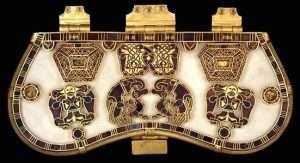
Sutton Hoo purse clasp: Wolfs / eagles and ducks.
 A very large black wolf appeared and walked toward her, ignoring the others. Her mind wondered if she should be afraid, but the wolf didn’t seem to be threatening, and she didn’t feel afraid. Their eyes locked as he approached, but when he drew near, he passed by, barely brushing her side with his fur, and continued on his way without looking back. The proximity of the wolf was unnerving, and the dream ended, in the way that remembered dreams usually end, with her startled into wakefulness. She reflected on the dream over a period of days and came to realize that this thing had never happened before. All kinds of questions baffled her. Who was he? Where had he come from? Why did he choose her? How? Where would he take her? But clearly, she would get nowhere analyzing the situation; she simply had to leave her turtle shell behind and go. It was time.
A very large black wolf appeared and walked toward her, ignoring the others. Her mind wondered if she should be afraid, but the wolf didn’t seem to be threatening, and she didn’t feel afraid. Their eyes locked as he approached, but when he drew near, he passed by, barely brushing her side with his fur, and continued on his way without looking back. The proximity of the wolf was unnerving, and the dream ended, in the way that remembered dreams usually end, with her startled into wakefulness. She reflected on the dream over a period of days and came to realize that this thing had never happened before. All kinds of questions baffled her. Who was he? Where had he come from? Why did he choose her? How? Where would he take her? But clearly, she would get nowhere analyzing the situation; she simply had to leave her turtle shell behind and go. It was time.
Adventure begins {enlarged throughout}. 'Hero' link etc.
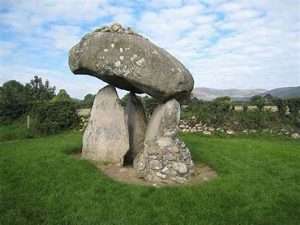
From behind - line up those 'three points' with the horizon - to attempt a MIND SET. Up or Downhill?
 Back home again, she looked at her reflection in the mirror. Her skin was red and peeling; she was shedding the old to make way for the new. She took her turtle shell out to the garden and covered it with earth and compost. She planted some seeds she had gathered on her way down the mountain and knew that a beautiful garden would grow on the berm created by her turtle shell. It would serve as the fulcrum of her life, reminding her every time she looked at it that she rested in the balance between her past as a Turtle Woman and her future as a guardian of Turtle Island. What she did at the fulcrum of each moment was all that mattered and all she could control." ['Invoking the Scribes of Ancient Egypt'].
Back home again, she looked at her reflection in the mirror. Her skin was red and peeling; she was shedding the old to make way for the new. She took her turtle shell out to the garden and covered it with earth and compost. She planted some seeds she had gathered on her way down the mountain and knew that a beautiful garden would grow on the berm created by her turtle shell. It would serve as the fulcrum of her life, reminding her every time she looked at it that she rested in the balance between her past as a Turtle Woman and her future as a guardian of Turtle Island. What she did at the fulcrum of each moment was all that mattered and all she could control." ['Invoking the Scribes of Ancient Egypt'].
A balance.
A working example: "My whole life has changed since i started to meditate. The journey in meditation is to find that state of equipoise - which means no matter what hits you, no matter what comes at you, no matter what throws you over either in joy or misery - you stay centered/rooted." ['Lulu' / BBC4].
Tree of Life.
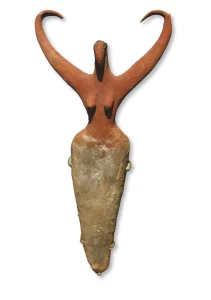
Foundation peg?
 Scales of justice.
Scales of justice.
Nike?
Further information, of same, elsewhere. As for the word ''fulcrum''- it could be swapped for anchor point [key]. After all, we all need one in order to establish something. As an example, of the same, being described, its most basic form,..."Poimandres, the 'knowledge of Ra', a chapter in the Corpus Hermeticum, describes how the spirit of a man mounts upward through the heavens, 'casting off' different bad qualities in different spheres, for example discarding the machinations of cunning in the Mercury sphere {'trickster'?}, lust in the Venus sphere, rashness in Mars, greed for wealth in Jupiter, and falsehood in Saturn".[Taken from chapter 5, 'The Sacred History'].
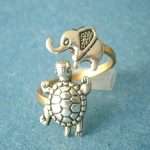
'Wedding' ring? carapace?

"Crack between the worlds."
Odysseus?
Petyr Baelish? {Game of Thrones}.
Practical example {in the positive SENSE of the word}: ''There all over them like a rash.'' [Ally McCoist on Japan winning Germany 2-1 / World Cup 2022].
"At this point we pause, having discovered the secret of human omnipotence and indefinite progress, the key of all symbolism's, the first and final doctrine: we have come to understand what was meant by that expression so often made use of in the Gospel - the Kingdom of God.  To provide a fixed point as a fulcrum for human activity is to solve the problem of Archimedes, by realizing the use of his famous lever.
To provide a fixed point as a fulcrum for human activity is to solve the problem of Archimedes, by realizing the use of his famous lever.
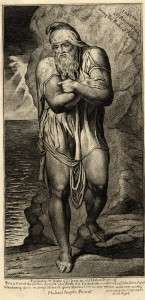
Right foot anchored?
This it is which was accomplished by the great initiators who have electrified the world, and they could not have done so except by means of the Great and Incommunicable Secret. However, as a guarantee of its renewed youth, the symbolical phoenix never reappeared before the eyes of the world without having consumed solemnly the remains and evidences of its previous life." [Introduction to the book 'Transcendental Magic' by E. Levi].
'Younger' in relation to 'elder' - purpose of, i.e.,"So also Moses saw to it that all those who had known Egypt and her mysteries should end their life in the desert." [Same paragraph].
"The reason is that each religion or philosophy that comes into the world is a Benjamin of humanity and insures its own life by 'destroying' its mother. It is because the symbolic serpent turns ever devouring its own tail; it is because, as essential condition of existence, a void is necessary to every plenitude, space for every dimension, an affirmation for each negation: herein is the eternal realization of the phoenix allegory." [same].
And/or: "Like Buddhist 'emptyness' this oblivion is a void containing infinite and inexhaustible possibilities, and so a place of rebirth and creativity. It is also a difficult and dangerous place. Eckhart was showing the way, not of consolation for a harsh, repressed life, not rewards deferred, but a strange and testing dimension you enter at your peril, 'the descent of the 'Godhead' where no one is at home'...." [Page 407 'The Secret History of the World' / J. Black].
Recall Part 1.
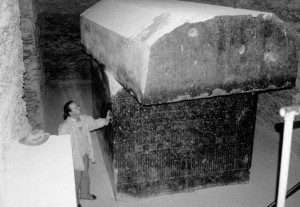
Found within the labyrinths of Saqqara. A centering within. 24 or 25 ? What does it REPRESENT. Pagan worship only?
 Something extra: " According to the Sarcophagus of Seti I, the Duat is the body of the god Asar, which is pictured as a man bending backwards into a circle, touching his toes with his hands {Aries/Pieces?}. It is said to have 14 Aats or regions. The ultimate destination of those departed is the region of the Duat called Sekhet Yaru - meaning ''Field of Plants'' {therefore 'vegetation' link?}. It is located within the region called Sekhet Hotep or ''Field of Peace''. Hotep may be translated as peace and/or offerings which make peace." [Page 230 'Egyptian Book of the Dead' / M. Ashby].
Something extra: " According to the Sarcophagus of Seti I, the Duat is the body of the god Asar, which is pictured as a man bending backwards into a circle, touching his toes with his hands {Aries/Pieces?}. It is said to have 14 Aats or regions. The ultimate destination of those departed is the region of the Duat called Sekhet Yaru - meaning ''Field of Plants'' {therefore 'vegetation' link?}. It is located within the region called Sekhet Hotep or ''Field of Peace''. Hotep may be translated as peace and/or offerings which make peace." [Page 230 'Egyptian Book of the Dead' / M. Ashby].
Toe hold?
'Head to toe'?
Boundary lines that have to be crossed for a ''journey'' to continue. That inner one. Quran equivalent = ''two bows'' length. Egyptian = ''running the fields.'' Hebrew = ''daath'' or the void - that ''gap'' between 'higher' and 'lower'. That gap that can only be closed by the ''realization'' of something. That realization that is important - that is a prerequisite in understanding anything. In obtaining an ''end result''. Question. What symbol represents it and why?
A {working?} example: "Sokar was, among other things, the Neter of the Saqqara necropolis, an Osirian figure depicted as a mummification man in funerary garb. He is often shown reclining in a sarcophagus, a metaphor of the soul's enclosure within the most elaborate matrix of material existence, the body....dormant {unmanifested?} in its expression of spiritual vigor. The ''Principle of Latency'' which Sokar embodies was associated with the vital energy of the bull, manifesting as physical potency in his role as 'Lord of the Herd'. A number of sacred bulls in ancient times were regarded as vehicles of this spiritual principle...." [Page 102 'Sacred Tradition in Ancient Egypt' / R. Clark].

A preacher, teacher or ranter?
And/or: "Gurdjieff broke through the dogma of institutional religion and revealed the dynamic truth within the teachings. He made clear the psychological insights beneath the rust of rote repetition and blasphemous misuse of the words of enlightened teachers. His insistence of verification forced the student to come upon the stunning fact that life is indeed more than that which the senses perceive and to re-interpret spiritual insights in the context of their lives. Belief was to give way to experience and experience to transformation so that the ''new man'' could emerge out of the ashes of rejected illusions." ['Wisdom of the 4th Way']. Continued elsewhere.
A work {still?} in progress: "The role of Phoenix has caused many problems for classicists, and in his commentary on the Iliad Malcolm M. Willcock devotes the best part of two pages to examining various possibilities. The difficulty appears to lie in translation, and whether or not two commanders {Odysseus, Great Aias and Phoenix} journey to the hut of Achilles. After Great Aias and Odysseus return to Agamemnon's camp, Phoenix stays 'behind' and is later named as a captain of Achilles troops. In astronomical terms there is a logical answer to the mystery of Phoenix, and it appears that he did not need to 'travel' to the hut - or constellation - of Achilles, because he was already there - or very close - as the star Cancri. Phoenix tells a rambling story of his ancestry which suggests an earlier astronomical order when he was included in a different grouping of stars. The wrangling of Phoenix's parents and his departure from home suggest a time when he had to leave his 'family' constellation for pastures new {Perceval link? - if so, therefore 'city/rural' link?}. Little is known about Phoenix except {a} he tells leaving his father's home {mother in Perceval's case}; {b} he went to live in the house of Achilles father, and was a mentor to the 'young' boy; {c} his 'form' is latter assumed by a god; {d} he is named as a captain in the regiment {'city'?} of Achilles. An astronomical interpretation of this information indicates that - {author gives his hypothesis allotted as {a} - {d} on Page 197} i.e.,{c} 'to have his form assumed by a god, Phoenix must be a star which is occulted by or seems to come very close to a planet, as is therefore in the zodiac; {d} as a captain of the Myrmidons, his star would be within the boundary of the new constellation created to accommodate Achilles. The only notable star that meets these criteria in that part of the sky is Cancri, which is only just within the modern constellation boundaries of Cancer and close to Canis Minor'." ['Homer's Secret Iliad'].
'Commander'?
"God is a hypothesis which is very probably necessary." Quote by Eliphas Levi.
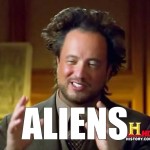
'Decoding the Cosmic Egg'. Understand a MIND SET in the inner sense of the word. NOT its external one to get as close to a correct answer as is possible.

''The Birth of the New Man.'' {The Columbus Egg}. 'Incarnation' to enlarge.
Hence: "It is interesting that we define 'swt' by the form of an egg and 'sah' by the seal that fastens an envelope. Our ancient texts often speak of the dead man who must ''break his egg''. It happens in such texts that 'swh' is given by the sign for a 'city' {nwt}: it isn't a question of a city but of the dead man's own nwt, his egg, his surviving envelope {'boundary'. Personal one?}. A man's nwt is like the celestial Nut whose physical organs are the constellations of the zodiac. Their functions differ, in man's body as in 'hers' {animus?}, but their influences interpenetrate, though they can only communicate with essentially identical states, and through an intermediary {phoenix? or 'Thoth' i.e., ''wisdom''}. The 'heart' is in sympathy with the intermediary and plays the same part in man's body as the sun does in the universe." ['Her-Bak']. Try ''egg'' / ''city'' {nwt} / ''phoenix''. All as a means...?
A working example: Many previous kings emphasised their nearness to the god, highlighting how they constructed temples and made donations to honour him. The royal literature of Ramesses III, however, goes further, using the motifs of personal religion in a special way to promote him as a pious king who submits to the will and decisions of the gods. A good example of this is in the Great Harris Papyrus, which lists an enormous number of donations and gifts given to the Temple of Amun-Ra (and other temples) by the king to show loyalty and gratitude through piety.
Alongside, Ramesses III records his speeches, made directly to Amun-Ra, which emphasise the god’s absolute power:
I am your son. I came forth from you; you assigned me to be King while I was [yet] in the egg, while no other hand was with me except your[s]. I rely on your mighty utterance, and I am filled with your counsels, in performing for you with a loving heart.
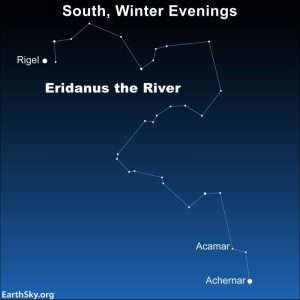
 Ramesses III shows himself as the son of Amun-Ra, who was king since his formation in the womb – a well-used topic of royal self-presentation for every pharaoh, and part of their legitimisation. But what is special about this statement is that the king relies on the decisions and will of the deity. He tries to fulfil the expectations of the god with a loving heart – another expression of personal religion, reflecting a worshipper’s intense feeling of gratitude to the divinity, and one that can be found in the prayers of the common people as well. For millennia, the Egyptian pharaoh was a powerful ruler, making his own decisions. Now it is the will of the gods that dominates the course of history:
Ramesses III shows himself as the son of Amun-Ra, who was king since his formation in the womb – a well-used topic of royal self-presentation for every pharaoh, and part of their legitimisation. But what is special about this statement is that the king relies on the decisions and will of the deity. He tries to fulfil the expectations of the god with a loving heart – another expression of personal religion, reflecting a worshipper’s intense feeling of gratitude to the divinity, and one that can be found in the prayers of the common people as well. For millennia, the Egyptian pharaoh was a powerful ruler, making his own decisions. Now it is the will of the gods that dominates the course of history:
 You set a lifespan, You fix Destiny,
You set a lifespan, You fix Destiny,
Fate and Fortune are governed by Your decree.
There is no god who is your equal,
but You alone are the Maker, of whatever exist[s]
Ramesses III still presented himself as a powerful warrior king in his reliefs and inscriptions, with monumental reliefs of the pharaoh smiting the enemy and bringing sacrifices to the deities in the accepted royal tradition. By contrast, his religious texts portray the idea of a pious sovereign, who is the son of the gods and their first worshipper. He is modest and inspired by the wish to serve the god and submit himself to their divine will. This reflects a new intensive religious presence that is extraordinary in the royal literature of ancient Egypt.
Smith/Jones to enlarge.
And/or: He was the first king since Akhenaten to write a hymn, inscribed in the Amun-Temple of Ramesses III at Karnak. The text is an appreciation of the greatness of the god, but in terms of personal piety:
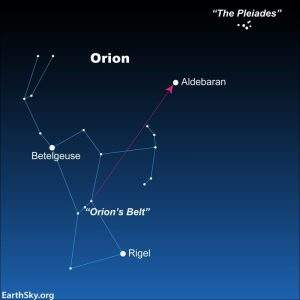
To truly appreciate the concha belt, we must journey back in time. The term “concha” itself is Spanish for shell, which reflects the intricate patterns often found on the silver conchas. These belts have their roots with the Navajo, a tribe known for their rich artistic traditions.
Surprisingly, the history of concha belts dates back well before the arrival of Europeans in North America. Around 500 BC, some Native American tribes were already skilled in working with metals like copper. However, it was with the arrival of the Spanish in Mexico, particularly in the 1860s, that Native Americans near the border were introduced to the art of silversmithing by Mexican craftsmen. This marked the birth of the iconic concha belt, which would become an emblematic piece of accessory jewelry in the Southwestern United States.

The Navajo people have a long and vibrant history which is still visible today in their culture and art. Their jewelry is particularly noteworthy, as the unique artistry found in traditional items such as concho belts has been passed down through generations. Concho belts are one of the most iconic pieces of Navajo jewelry, and they tell an insightful story of the culture and its evolution. When describing the development of concho belts, most historians use phases to describe how concho belts evolved: A Navajo man, Arsidi Chon (Ugly Smith), is credited for creating the initial concho belt in the southwestern American territories in the late 1860s. These conchos were made from Mexican silver pesos that were melted down and turned into ingots.
At this time, Navajos had yet to perfect soldering techniques, and thus these earliest conchos were round with diamond-shaped slots and a center bar to which the leather belt was threaded through. During the second phase of concho belt evolution, silversmiths began to solder. In this period, either a copper or silver strap or bar was soldered onto the back of a concho so that leather belts could be threaded through it.
Initially, these straps were mostly made from silver. This allowed for more intricate decoration on the front of each concho while keeping leather belt details hidden behind it. During the third phase of concho belt development, a “butterfly” appears among the larger conchos. This butterfly was a smaller concho placed between two larger conchos to form its bow-like shape – resembling a butterfly. Additionally, turquoise became an ornamental inclusion on these mini conchos....The concho is screwed into the hole until its back is leveled with the leather. Some modern concho belt artisans add a bead or semi-precious stone, such as turquoise, to the center of each concho.
Mighty are You, as Lord of the Gods,
as the Ram mysterious of faces, greatly renowned {Rama?}.
Hidden of Name, whose image is concealed,
whose nature is unknown since the beginning [first occasion]
you appearing from the Deep [Nun],
you rising with sunbeams,
O that You give light to every eye that was in darkness.
Your complexion is the sunlight and your warmth is vital heat[?],
all noble precious stones mingle [with/in] your body.
Your limbs are breath to every nostril,
people breathe by you, to live,
the taste of you is the Nile-flood,
people are anointed with [your] radiance,
beneficial are you[…], Lord/ all […], […] love.
Here Ramesses III speaks directly to the divinity and emphasises the important hidden aspect of Amun-Ra, manifested through the media of light, water, and air.
What about 'fire'?
Papyrus Harris I is also known as The Great Harris Papyrus and (less accurately) simply The Harris Papyrus Scroll (though there are a number of other papyri in the Harris collection). Its technical designation is Papyrus British Museum EA 9999. At 41 metres long, it is "the longest known papyrus from Egypt, with some 1,500 lines of text."[1] It was found in a tomb near Medinet Habu, across the Nile river from Luxor, Egypt, and purchased by collector Anthony Charles Harris (1790–1869) in 1855; it entered the collection of the British Museum in 1872.
Its editio princeps is the 1876 "Facsimile of an Egyptian Hieratic papyrus of the reign of Ramses III" published by the British Museum.[2]
Side note: ''Seville (/səˈvɪl/ sə-VIL; Spanish: Sevilla, pronounced [seˈβiʎa] (![]() listen)) is the capital and largest city of the Spanish autonomous community of Andalusia and the province of Seville. It is situated on the lower reaches of the River Guadalquivir, in the southwest of the Iberian Peninsula.''
listen)) is the capital and largest city of the Spanish autonomous community of Andalusia and the province of Seville. It is situated on the lower reaches of the River Guadalquivir, in the southwest of the Iberian Peninsula.''

Seated on what? Any minerals near by?
As seen from a different perspective: "The mythology of the ancient African San people, or 'Bushmen' says that humans were created in the Tsodilo Hills in the Kalahari Desert of Botswana when the 'Great Python' arrived with 'a bag of eggs'. Interestingly, the oldest form of of human religious worship so far uncovered is the worship of the serpent or python which goes back at least 70,000 years..." ['The Perception Deception' / D. Icke].
The above in relation to Mr Icke's 'reptilian' hypothesis. Question. When ALL the available information is assessed what do you think?
A working example: ''According to Plutarch, the Egyptians called iron the 'bone of Typhon', which the alchemists associated with Mars.'' [Page 150 'Hathor's Alchemy'].
Martians?
Side note: Ancient Aliens: 'Decoding the Cosmic Egg' - ''Why is this concept so pervasive throughout the world?'' [Series 9. Episode 4]. Understand subject material beyond - ''individuals sent from other planets.''
 Continued: "The same story can be found in many other cultures, including ancient China, and worship of the serpent was global in scale. In can be found among other places, in Egypt, Persia, Asia Minor, Arabia, Middle East etc., etc.,...The Mayans worshiped the serpent god Kukulkan, the 'Plumed Serpent' {enlarged elsewhere} or 'Feathered Serpent'...I was once there during a partial eclipse of the sun and i found the energy of the place to horrible - the feel was very much the same as many locations that i have visited all over the world associated with the reptilian entities and the human sacrifice which ancient accounts invariably say they always demanded. This is the origin of the making sacrifices to the 'gods' and i will explain more about this latter...'' Same book by D. Icke. Question. Subjective or Objective?
Continued: "The same story can be found in many other cultures, including ancient China, and worship of the serpent was global in scale. In can be found among other places, in Egypt, Persia, Asia Minor, Arabia, Middle East etc., etc.,...The Mayans worshiped the serpent god Kukulkan, the 'Plumed Serpent' {enlarged elsewhere} or 'Feathered Serpent'...I was once there during a partial eclipse of the sun and i found the energy of the place to horrible - the feel was very much the same as many locations that i have visited all over the world associated with the reptilian entities and the human sacrifice which ancient accounts invariably say they always demanded. This is the origin of the making sacrifices to the 'gods' and i will explain more about this latter...'' Same book by D. Icke. Question. Subjective or Objective?
'On Having No Head: Zen and the Rediscovery of the Obvious' / D. E. Harding.
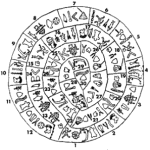
'Forked tongue'?
From a different perspective: ''.....This is what is truly meant by speaking with a forked tongue - one who understands duality and can speak about subjects of light and dark, life and death....Scholars investigating the Nag Hamadi find discovered that some of the texts tell the origin of the human race in terms very differently from the usual reading of Genesis: in the Testimony of Truth for example......'' [Page 87 'Shamanic Mysteries of Egypt'].
A working example: ''Hermes ruler of the world: dweller in the heart, circle of the moon. Round and square, inventor of the words of the tongue.'' [Page 192 'Alchemical Studies' / C. G. Jung].
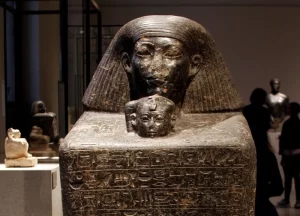
"Neferure was Hatshepsut's daughter. Senenmut was a confidant and educator of Neferure in addition to being an architect and government official. He was allowed to erect his own statues in Thebes (reflecting his high status). The girl is wrapped by a large cloak and only her head appears. The cartouches of Hatshepsut are carved on the surface of the statue. Granite. From Western Thebes, Egypt. New Kingdom, 18th Dynasty, 1473-1458 BCE. It is on display at the Neues Museum, Berlin, Germany." Altar? Female aspect 'in front'?
Something extra: ''Our text promises to ''reveal the secret of the Golden Flower of the great One.'' The golden flower is the light, and the light of heaven is the Tao....As seen from above as a regular geometric pattern {Nazca Lines?}, or in profile as a blossom growing from a plant {'in fiery colours'}....growing out of a bed of darkness {Denderah?}, and carrying the blossom of light at the top, a symbol recalling the Christmas {Xmas} tree....The origins of which is the 'germinal vesicle' {ovum/egg}, alias the dragon castle at the bottom of the sea. Other synonyms are the 'yellow' castle, the 'heavenly heart', the 'terrace of living' {Denderah?}, the 'square inch field of the square foot house' {Avebury?}, the 'purple hall of the city {'New' one?} of Jade'. Also the 'dark pass' {Thebes?}, the 'space of former heaven' {'coal sacks'?}, the 'boundary regions of the snow mountains' {as an example Iceland ? i.e., 1ST known Parliament}, the 'primordial pass' {Karnac?}, the 'kingdom of greatest JOY' {Amarna?}, the 'boundless........

At the 'back' of El Qurn. Question. 'Long' or short?
.....country', the 'altar upon which consciousness and life are made'. If a 'dying' man does not know this germinal vesical says the Tao 'he will not find the unity of consciousness and life in a thousand births, nor in ten thousand eons'. The beginning, where everything is still ONE {i.e., 'hidden'}, and which therefore appears as the highest goal {i.e., as one example Amun INTO Amun-Ra}, lies at the bottom of the sea {North? i.e., as one example the Nile Delta}, in the darkness of the UNconscious.'' [Page 23 'Alchemical Studies' / C. G. Jung].
Get {'see'} it?
Side note: ''Portcullis House is an office building in Westminster, London, United Kingdom, that was commissioned in 1992 and opened in 2001 to provide offices for 213 members of parliament and their staff. The public entrance is on the Embankment {1 Victoria Embankment}...The building is named after the chained portcullis used to symbolize the Houses of Parliament on letterheads and official documents.''

Close to Westminster BRIDGE.
''The site of Portcullis House was once occupied by the houses which were built around 1400 for the dean and twelve canons of St Stephen's College at the Palace of Westminster. In more recent times, the St. Stephen's Club of 1874 by John Whichcord junior, St. Stephen's Chambers and Palace Chambers stood here.''
Recall the portcullis in the 'kings' chamber'.
Continued: A work in progress: ''To me belonged the universe before you gods had come into being. You have come afterwards because i am Heka.''.....'In other words, the magic - the heart and tongue that creates the utterance and the words of power {'hieroglyphs' etc} - is older and mightier than the 'gods' themselves.'' AND/OR: ''Great and exalted is Ptah who bequeathed his power to all the gods through his heart and on his tongue. It happened that heart and tongue prevailed over all other members.'' [Pages 54-56 'Imagining the World Into Existence' / N. Ellis].
Hippo or Crocodile?
Continued: ''Researcher Klaus Dona who has studied endless artefacts from the far ancient world said: 'The snake is a very, very mystical and very often misrepresented object...Also the frog is a very mystical animal in old South American pre-Columbian culture, but also in Africa and Asia. Frogs turning into princes and princes into frogs is also part of folklore and fairy tales which symbolise human-reptilian shapeshifting..." Try {objectify?} ''sacrifice'' and ''frog'' in relation to the whole.
Jaqen H'ghar? {Game of Thrones}.
 Same process to the following: "One fifth of these texts found at Nag Hammadi on non-human manipulators that they call the 'Archons' which infiltrate the human mind to influence and direct perception of reality...The Nag Hammadi Gnostic texts refer to reptilian entities and those known today as the classic 'Grey aliens' as expressions of these Archons. The Greys are described in these texts as like an unformed baby...with grey skin etc.,...Remember that this was written the best part of 2000 years before modern reports began to appear of activity and sightings of Reptilians and Greys..." Same book, i.e.,by D. Icke.
Same process to the following: "One fifth of these texts found at Nag Hammadi on non-human manipulators that they call the 'Archons' which infiltrate the human mind to influence and direct perception of reality...The Nag Hammadi Gnostic texts refer to reptilian entities and those known today as the classic 'Grey aliens' as expressions of these Archons. The Greys are described in these texts as like an unformed baby...with grey skin etc.,...Remember that this was written the best part of 2000 years before modern reports began to appear of activity and sightings of Reptilians and Greys..." Same book, i.e.,by D. Icke.
'Shades of Grey'?
Side note: Within those same texts {- which one can now download freely - {'The Nag Hammadi Library. pdf' / J. Robinson} - the word ''grey'' is not even listed within that 1148KB of data. The word ''Archon'' however is...
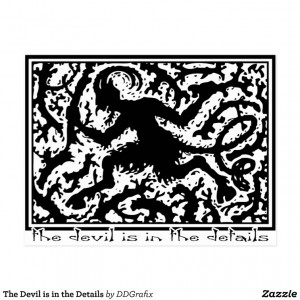 "In Gnostic psychology, the noetic science of the Mystery Schools, Archons are an 'alien' force that intrudes subliminally upon the human mind and deviates our intelligence away from its proper and sane applications.
"In Gnostic psychology, the noetic science of the Mystery Schools, Archons are an 'alien' force that intrudes subliminally upon the human mind and deviates our intelligence away from its proper and sane applications.
They are not what makes us act inhumanely, for we all have the potential to go against our innate humanity, violating the truth in our hearts, but they make us play out inhumane behavior to weird and violent extremes.
Left to our own devices, we would sometimes act inhumanely and then correct it, contain the aberration. Obviously, we do not always do so. In the exaggeration of our insane and inhumane tendencies, and in extreme, uncorrected deviance from our innate intelligence, Gnostics saw the signature of an alien species that piggy-backs on the worst human failings.
Hence, Archons are psycho-spiritual parasites." ['Wiki/Archon}.
In other words ARCHETYPAL {if only in the negative sense of the 'word'}. Try it, i.e.,put ''Archon'' in the above mentioned 1148KB of text and see if you agree or disagree.

MR 'Independent' ?

The return of the Munsters? Rehabilitated? Which ones Eddie - Junior or Senior?
REFRESHER: "The 'evil spirits' which deprive man of his freedom, are not at all beings of the so-called ''hierarchies of evil'' or ''fallen hierarchies''. Neither Satan nor Belial, nor Lucifer, nor Mephistopheles have ever deprived anyone of his freedom. Temptation is there only weapon and this presupposes the freedom of he who is tempted [as a representation of something. This readers input]. But possession by an ''evil spirit'' has nothing to do with temptation. It is invariably the same thing with Frankenstein's monster. One engenders an 'elemental' being and one subsequently becomes the slave of ones own 'creation'. The ''demons'' or ''evil'' spirits of the New Testament are called today in psychotherapy ''neuroses of obsession'' - ''neuroses of fear'' - ''fixed ideas'', etc. They have been discovered by contemporary psychiatrists and are recognized as real - i.e., as ''parasitic psychic organisms'' independent of the conscious human will and tending to subjugate it." [Taken from 'letter three' of the book by Tomberg].
Side note: The ''shadow'' of Stannis Baratheon? {Game of Thrones}.


Saviour or dictator? Everything comes in threes? Written in the stars? Karma or fate?
From a different perspective: ''Regarding the antichrist, this is the phantom of the whole of mankind, the being engendered through the whole historical evolution of humanity. He is the 'superman' {and/or 'prince' of the world}, who haunts the consciousness of all those who seek to elevate themselves through their own effort, without GRACE......He is therefore an egregore, an artificial being who owes his existence to collective generation from below...'' [Pages138/139 'Meditations on the Tarot'].
Destiny - Will - Providence mentioned throughout in the book: 'Hermeneutic Interpretation of the Origin of the Social State of Man' / Fabre d'Olivet.

Absolute power corrupts: "When i get re-elected, you wont have to vote anymore." Will he attempt to change within the constitution that maximum of 8 years? {edited 8.11.24}.

Destiny calling?
And/or: Archon is a Greek word that means "ruler", frequently used as the title of a specific public office. It is the masculine present participle of the verb meaning "to rule", derived from the same root as monarch and hierarchy." ['Wiki'].
'King'?
''Masculine'' in relation to 'shadow' {'spirit'?}. ''Heart'' in relation to 'soul' {anima?}. Anything?
Question. Do not ALL archetypes 'rule' in one form or another?
'Mans Search for Meaning' / Viktor Frankl.

Which ones the patriot?

"YOU EXPECT SOMETHING BETTER FROM your PRESIDENT." During their efforts to overturn the results of the election, Trump and his ally Rudy Giuliani repeatedly claimed that Freeman and Moss had committed election fraud. A heavily edited, brief clip of security footage was widely circulated online and by Trump allies as supposed proof.{NBC News}. Fake news?
Hence: "Archons are said by the Gnostics to be made from 'luminous fire'..." Same book, i.e.,by D. Icke. See it? Try ''fire''.
Kundalini?
And/or: "As we shall see, the Gnostics and Mandeans left instructions for their initiates as to how they should leave the earthly sphere and progress through the spheres or levels of the Archons - the 'rulers' of the planets...." [Page 36 'The Western Way'. Vol 2].
As one example: "The Egyptian Gnostic Basilideans accepted the existence of an archon called Abraxas who was the prince of 365 'spiritual' beings..." {Wiki}. Try ''Abraxas'' {i.e., the 'Great Archon}.

Heavy 'brow'?
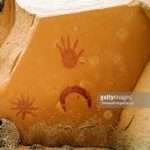
Ridge of the mind?
A working example: ''In the entire pantheon of Hopi mythology, none is more imortant than Masau'u....He wears a 'mask' with large open eye holes and large mouth. Frequently covered in dried rabbit {'hare'?} blood, his head is huge and bald, and his forehead bulges out like a ridge...his feet are the length of a forearm and is body is usually described as greyish colour. This apparently is an essential element, since his name is derived from the Hopi word maasi, meaning grey. In fact, this fact from Hopi mythology is uncomfortably close to contemporary images of the race of extraterrestrial Greys. In addition, the word masa means 'wing' or 'feathers' - emphasizing flight. He also sometimes wears a tattered woman's dress fastened under the right armpit instead of the customary left = trickster character as with the Lakota {Sioux} heyoka, who dresses and acts the opposite of human expectations and customs...At some point has a wrestling match with the culture 'HERO' Tiyo who 'overcomes' him, after which Masau'u takes off his terrifying 'mask' - to be seen as a 'youth' who then sits down with Tiyo and the peacepipe.'' [Page 16 'The Orion Zone' / Gary David].
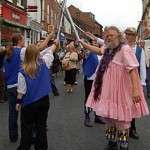 REFRESHER: "In a word it makes us fertile in our creative pursuits, in whatever domain of spiritual life. An arcanum is a 'ferment' of an 'emzyme' whose presence stimulates the spiritual and the psychic life of man and woman. And it is symbols which are the bearers of these 'ferments' or 'emzymes', which communicate them - if the mentality and morality of the recipient are ready, i.e.,"if he is poor in spirit" and does not suffer from the most serious spiritual malady...self complacency."
REFRESHER: "In a word it makes us fertile in our creative pursuits, in whatever domain of spiritual life. An arcanum is a 'ferment' of an 'emzyme' whose presence stimulates the spiritual and the psychic life of man and woman. And it is symbols which are the bearers of these 'ferments' or 'emzymes', which communicate them - if the mentality and morality of the recipient are ready, i.e.,"if he is poor in spirit" and does not suffer from the most serious spiritual malady...self complacency."
N.B. Not ''soul''.

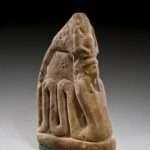 And/or: ''An arcanum is a middle degree BETWEEN the mystery and the secret, it is the twilight that protects it. For it reveals itself and 'hides' itself at the same time by means of symbolism. Symbolism is the twilight for arcana.'' [Page 65 'Meditations on the Tarot'].
And/or: ''An arcanum is a middle degree BETWEEN the mystery and the secret, it is the twilight that protects it. For it reveals itself and 'hides' itself at the same time by means of symbolism. Symbolism is the twilight for arcana.'' [Page 65 'Meditations on the Tarot'].
The 'eve' of something?
Hence: ''The divine and flaming word shines in the world of the silence of the soul and MOVES it.'' [Page 71, same book].

In North Germany Alkor, as there written, has been der Hinde, the Hind, or Farm Hand; in Lower Germany, Dumke; and in Holstein, Hans Bumken, Hans the Thumbkin, — the legend being that Hans, a wagoner, having given the Saviour a lift when weary {'153'?}, was offered the kingdom of heaven for a reward ; but as he said that he would rather drive from east to west through all eternity, his wish was granted, and here he sits on the highest of the horses of his heavenly team. A variant version placed Hans here for neglect in the service of his master Christ ; and the Hungarians call the star Oontzol, with a somewhat similar tale. Another Teutonic ston was that their giant Orwandil, our Orion, having frozen one of his big toes, the god Thor broke it off and threw it at the middle horse of the Wagon. where it still remains.
A working example: Thus, the Celts, possessing entire Europe at this epoch, pushed their hordes as far as Africa, menaced the Temple of Ammon, and caused Egypt to tremble. It was to be feared that this savage power would conquer the world; and indeed it would have, had it made itself mistress of this ancient realm whose foundation, according to Herodotus, goes back at least twelve thousand years before our era. ‘This event, if it had taken place, would have been most calamitous for humanity. Providence prevented it, not by directly changing the perverted Will of the Borean Race, but by chastising it; and this is what was done.

'light oxen': "I bring up an individual type as a point of departure to talk about. The one {'emotion'?} that is strongest will pull you first." [Page 4 'Stopping and Seeing' / Translated by T. Cleary].
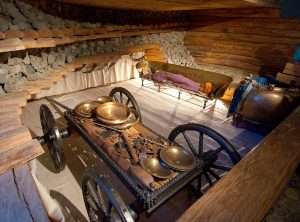

Round the corner from....?
There was at that time among the Druids a wise and virtuous man whose knowledge and peaceful virtues had been little observed until then. This man, still in the flower of his youth, groaned in secret over the sins of his compatriots, and believed justly that their cult, instead of honouring the Divinity, had offended it. He understood the traditions of his country and had studied nature deeply. When he saw the fatal malady extending its ravages, he did not doubt that it was a scourge sent by Providence {'mourners'?}. He examined it with care, he understood the principle of it; but it was in vain that he sought the remedy. Desperate and being unable to work the good that he had hoped, wandering one day in the sacred forest, he sat down at the foot of an oak and there fell asleep. While he slept it seemed to him that a loud voice called him by name. He thought himself awake and saw before him a man of majestic stature clothed in the robe of the Druids and carrying in his hand a wand around which a serpent was entwined. Astonished at the phenomenon he asked the Unknown the meaning of it, when this one taking him by the hand made him arise and showing him, under the same tree at the foot of which he had been lying, a beautiful branch of mistletoe, said: ““O Rama! the remedy thou seekest is here.’?’ And suddenly drawing from his breast a small golden pruning knife, cut the branch and gave it to Rama. After having added a few words, as to the manner of preparing the mistletoe and using it, he disappeared.

Ivory bag rings have been found in more than 70 cemeteries across southern, central, and eastern England dating to between the late-5th and 7th centuries AD. These rings are most frequently found in richly furnished female graves, and would have served as the framework for bags that hung at the waist {'girdle'?}.... Recent excavations at an early Anglo-Saxon cemetery in Scremby, Lincolnshire revealed a number of elaborate female burials containing such bag rings....Through a multi-methodological approach, we have established that the ivory used for the Scremby bag rings came from elephants living in an area of young volcanic rocks in Africa at some point during the 5th and 6th centuries AD.....Since most rings have been recovered near the hip, it is thought that the bags were suspended from the waist alongside other objects such as iron knives, pairs of copper alloy girdle hangers, and iron ‘latch lifters’ (Vogt, 1960, MacGregor, 1985: 111)

On the Antique Roadshow - among the items was a disc of ivory that is understood to be connected to the transatlantic slave trade. Fiona shared in a voiceover: "[It] acted as a kind of endorsement of the professional reputation of an African slave trader in the West African port of Bonny in the 18th century."
Side note: "One must begin with causes that are in man himself. How can he be independent of external influences of great cosmic causes when he is the slave of everything that surrounds him? He is controlled by everything around him. If he becomes free from things, he may then become free from 'planetary' influences. Freedom, liberation, this must be the aim of man. To become free, to be liberated from 'slavery'; this is what a man ought to strive for when he becomes even a little conscious of his position. There is nothing else for him, and nothing else is possible so long as he remains a slave both inwardly and outwardly. But he cannot cease to be a slave outwardly while he remains a slave inwardly. Therefore to become free, man must gain inner freedom." ['In Search of the Miraculous'].

Latch? Refresher: "The 'Mistletoe' to said to open all locks."
Continued: MEANWHILE, a solemn féte was established to celebrate this auspicious event. They wished the commemoration of the discovery of the mistletoe of the oak to coincide with the commencement of the year, which was placed at the winter solstice. As obscure darkness covered the Boreal pole at this epoch; they were accustomed to think of night as the beginning of day and they called the first night after the solstice, Night-Mother. It was at the middle of this mysterious night that the New-heyl was celebrated, that is to say, the new welfare or new health. The night became then sacred among the Celts, and they were accustomed to count by nights. The sovereign pontiff regulated the duration of the year by the course of the sun, and that of the month by the course of the moon. One can imagine from all the traditions which have come down to us from these remote times that this duration was established after very exact calculations, announcing an already extensive knowledge of astronomy.....As I am forbidden details in this work, I shall refrain from describing the ceremonies observed in gathering the mistletoe of the oak. All that can be desired on this subject may be found in many places. Only I must not neglect to say, however, that the mysterious Being who had shown the mistletoe to the Druid Rama, honoured as one of the ancestors of the Borean Race, was known by the name of that is to say Asclepius, the hope of salvation of the people, and considered as the Genius of Medicine." ['Hermetic Interpretation of the Origins of the Social State of Man'].
Side note: The Bromeswell bucket is a stunning copper alloy vessel that broke into pieces after it was buried at the historic site in Suffolk in the sixth century. It is decorated with a hunting scene featuring naked warriors in combat with leaping lions. An intriguing inscription on the relic in Greek translates as 'Use this in good health, Master Count, for many happy years'.
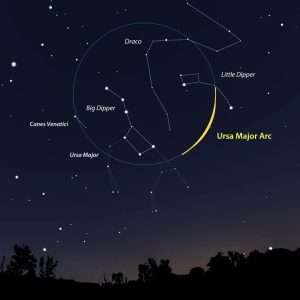
Refresher: "Bears were venerated by our ancients as being the strongest animal to roam the land." And/or: 'A train of cubs' = 'Station of no station'?
Bear {'hang'?} with it. The end is almost in sight. The main point to all of the above however is this. It only proves what certain individuals opinions are. Nothing more. Those opinions at the end of the day are only that. Opinions. Until at such time as there is...what the physics boys/girls refer to as...’Observational evidence’. In whatever 'form' that may take... If at all. Hence the practical necessity of being objective. To understand only the subject. That same subject that such authors as Mircea Eliade define as ‘Wholly other’ and Walter Burkert defines as that ‘religiousness’ that preceeded all religions.
 Those same keys however are mentioned and debated on. Words like ‘Cross / temples / house / cosmic pillar / altar / sacrifice / zeus/'...to name but a few. To numerous to mention. All explained only in the external, [ key ] sense. Only from the most obvious viewpoint. Only seen and explained from an external point of view. Never that internal one. Exo.teric as opposed to esoteric. Only when that inner understanding is taken into account...into the overall equation...will a balanced conclusion be the result. That balance that will lead to a final understanding of that final remaining subject. That final one that is no different to any other subject within that curriculum of total subjects. They all have one thing in common. Our history. The human one. Past present and future.
Those same keys however are mentioned and debated on. Words like ‘Cross / temples / house / cosmic pillar / altar / sacrifice / zeus/'...to name but a few. To numerous to mention. All explained only in the external, [ key ] sense. Only from the most obvious viewpoint. Only seen and explained from an external point of view. Never that internal one. Exo.teric as opposed to esoteric. Only when that inner understanding is taken into account...into the overall equation...will a balanced conclusion be the result. That balance that will lead to a final understanding of that final remaining subject. That final one that is no different to any other subject within that curriculum of total subjects. They all have one thing in common. Our history. The human one. Past present and future.

Hands? Sad or Joy?
As I am forbidden details in this work, I shall refrain from describing the ceremonies observed in gathering the mistletoe of the oak. All that can be desired on this subject may be found in many places.* Only I must not neglect to say, however, that the mysterious Being who had shown the mistletoe to the Druid Rama, honoured as one of the ancestors of the Borean Race, was known by the name of Asclepius that is to say, the hope of salvation of the people, and considered as the Genius of Medicine.
Refresher: "Bring yourself into the company of people who you feel display a good balance of both sides. Being with other overtly masculine types will only compound your problem. Usually you will find that older people have accomplished this better than younger people. They have had more time to transcend the social stereotypes {archetypes?}, and discover their own balance." Enlarged throughout, i.e.,try ''eldest'' and/or ''elder'' - all as a means...?
 Knock, knock... Head of the corner?
Knock, knock... Head of the corner?
If a correct appraisal then to which corner of the ''Square of Pegasus'' would it belong? As a means.…? {Top/down?}. A 'refection' of something for Orion/Horus to follow?
Ready for another break?..Then take the snorkel off...Put it back on the cat...Take a deep breath...Think of the weekend...Smile...Then go when ready.
